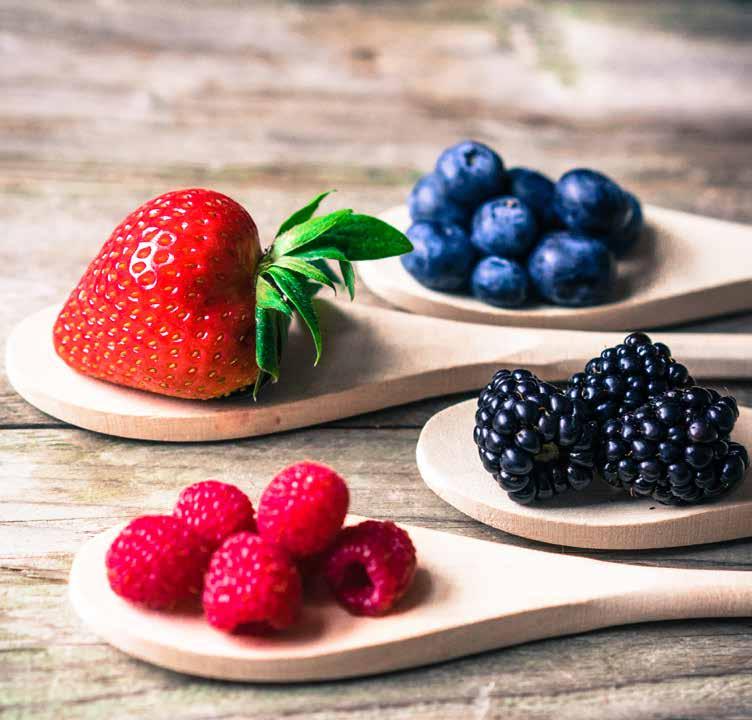
WINTER 2023 EDITION 15 FARMER WELLBEING CRISIS Industry 16 HILLWOOD HEADS NORTH Rubus 61 NEW BREEDING PROGRAM Strawberries 68 SOIL HEALTH TIPS Blueberries 101 AUSTRALIAN BERRY JOURNAL



The smarter choice for integrated pest management in a wide range of vegetable crops. fmccrop.com.au For more information: ALWAYS READ AND FOLLOW LABEL DIRECTIONS. FMC, Avatar®, Benevia® and Coragen® are registered trademarks of FMC Corporation or an affiliate © 2023 FMC Corporation All Rights Reserved. 02/2023 INSECT Benevia ® Avatar ® eVo
EDITOR
Jane Richter TERES Communication 0431 700 258 jane@teres.com.au

CONTRIBUTORS
Jane Richter
Rachel Mackenzie
Anthony Poiner
Simon Dornauf
Andrew Bell
Richard McGruddy
Brett Fifield
Dr Angela Atkinson
Mark Salter
Helen Newman
Aileen Reid
Jen Rowling
Michele Buntain
Dr Stephen Quarrell
Greg Lefoe
Christopher Menzel
Sachin Ayachit
Stephen Annells
John Hay
Jodie Campbell
Bryn Edwards
Romina Rader
Malika Nisal Ratnayake
Adrian Dyer
Alan Dorin
Jutta Wright
Ky Snyder
Jodi Neal
Katie O’Connor
Dr Donovan Garcia Ceron
Lorena Rodriguez Coy
Marlo Molinaro
Dr Scott Mattner
Tony Gendall
Apollo Gomez
Dr Sophie Parks
Kevin Quinlan
Saleh Adnan
ADVERTISING
For all Advertising & Partnership Enquiries
Wendy Morris 0491 751 123 | admin@berries.net.au
All advertising and advertorial material is subject to review and approval prior to publication.
DESIGN Sama Creative | samacreative.com.au
Whilst every care has been taken in the preparation of this journal, the information contained is necessarily of a general nature and should not be relied upon as a substitute for specific advice. The advice and opinions in the articles published in Australian Berry Journal are essentially those of contributors and do not necessarily reflect the views of Berries Australia or the Editor. The advice is at the reader’s own risk, and no responsibility is accepted for the accuracy of the material presented. Inclusion of an advertisement in this publication does not necessarily imply endorsement of the product, company or service by Berries Australia or the Editor. Horticulture Innovation Australia Limited (Hort Innovation) makes no representations and expressly disclaims all warranties (to the extent permitted by law) about the accuracy, completeness, or currency of information in Australian Berry Journal. Reliance on any information provided by Hort Innovation is entirely at your own risk. Hort Innovation is not responsible for, and will not be liable for, any loss, damage, claim, expense, cost (including legal costs) or other liability arising in any way, including from any Hort Innovation or other person’s negligence or otherwise from your use or non-use of Australian Berry Journal or from reliance on information contained in the material or that Hort Innovation provides to you by any other means. Copyright © Horticulture Innovation Australia Limited 2023 Copyright subsists in Australian Berry Journal. Horticulture Innovation Australia Limited (Hort Innovation) owns the copyright, other than as permitted under the Copyright ACT 1968 (Cth). Australian Berry Journal (in part or as a whole) cannot be reproduced, published, communicated or adapted without the prior written consent of Hort Innovation. Any request or enquiry to use the Australian Berry Journal should be addressed to: Communications Manager, Hort Innovation, Level 7 | 141 Walker Street, North Sydney 2060, Australia | E: communications@horticulture.com.au
US Highbush Blueberry Council Podcasts make it easy to stay informed ....................................................................... 92 CCC Research helping blueberry farmers save water 97 NSW Early Needs Recovery: Energy & Soil ...................................................................................................................... 99 Soil health in blueberries 101 NSW Early Needs Recovery Program to address pest challenges in blueberry 105 BLUEBERRIES New Fair Farms online Manual now available 15 National Farmer Wellbeing Report 2023: Farming’s silent crisis 16 Fertilizer Australia launches labelling awareness campaign 22 Recovery & Resilience: Hort360 Better Business 25 AM21000 Serviced Supply Chains Project report: Strawberries ..................................................................................... 28 Managing psychosocial hazards in the workplace: Spotlight on bullying 33 WA Benchmarking project report: How are you performing? 38 PH20001 Better pollination knowledge can grow better berries .................................................................................... 44 AI can track bees on camera: Here’s how that will help farmers 47 MT21000 Health and nutrition information for the berry industry 52 MT21008 Bees support bountiful berry production ........................................................................................................... 54 INDUSTRY RB21000 Wanted — Raspberry & Blackberry growers 57 Opportunities to improve labour use efficiency through automation & improved practices 59 Hillwood Berries: Expanding berry production to the tropics 61 Grower Profile: Alyx Busoli, Smart Berries .......................................................................................................................... 65 RUBUS BS22000 Australian Strawberry Breeding Program 68 Robot Harvesting at Burlington Berries, Tasmania .............................................................................................................. 75 Vale Dr Peter Merriman 79 Next generation of strawberry disease control using BioClay™ 80 Impact of supplementary pollination on the yields of strawberry ..................................................................................... 84 Queensland Strawberry industry gets together to welcome the winter season 87 STRAWBERRIES WINTER 2023 EDITION 15 AUSTRALIAN BERRY JOURNAL Wherever you see this logo, the initiative is part of the Hort Innovation Blueberry, Strawberry and Raspberry and Blackberry Fund. Like this publication itself, it has been funded by Hort Innovation using the Blueberry, Strawberry and Raspberry and Blackberry R&D levy and contributions from the Australian Government. Some projects also involve funding from additional sources. DISCLAIMER:
| P: 02 8295 2300
Executive Director's Report
 Rachel Mackenzie | 0408 796 199 | rachelmackenzie@berries.net.au
Rachel Mackenzie | 0408 796 199 | rachelmackenzie@berries.net.au
Welcome to the winter edition of the Australian Berry Journal. As discussed in the Chair’s reports it has been a funny old year in terms of weather, supply dynamics and markets. Hopefully we settle back into a more predictable pattern over the next 12 months.
We are acutely conscious of the rising cost of production and the difficulty of making that money back through the supply chain. Unfortunately, the issue of grower profitability has so many elements and there is not one magic solution. As an industry association we need to ensure we focus our effort on the right things.
There is a common saying that we should focus on what we can control and manage what we can’t control. I use this mantra to enable me and the team to identify where we should focus our efforts in terms of actually helping the industry in a practical sense, rather than just admiring the problem. The whole point of an industry association is to do things that individual growers and corporations cannot.
A key area where we can support growers is to ensure that government understands the pressures facing industry and develops policy and legislation with this in mind. This is not just about engaging with politicians but also with key departmental staff. The most effective advocacy in this space means poor concepts are stopped before they are even in the public domain, but sadly some bad ideas slip past the keeper. We then have to engage in active advocacy and sometimes use the media to prosecute our case.
As one of 37 horticultural industry peak bodies (PIBs) it is important for us to identify where best to put our efforts and work with our networks including the NFF Hort Council and the Australian Fresh Produce Alliance. At the time of writing, a key area of concern relates to the new PALM deed and guidelines which are currently unworkable. I am hopeful that through the combined lobbying efforts across the sector we can get a sensible outcome.
Recognising that every dollar is precious, another area of focus is ensuring that you get value from your levy investments. A considerable amount of my time is spent working with Hort Innovation to drive value from your levy. The new leadership team has been great to work with and I am looking forward to progressing with the new consultation and advice mechanism to ensure that industry priorities are addressed, and projects are well executed. Increasing consumption is another key priority and our main area of focus is lifting domestic consumption plus ensuring that export is a viable alternative for all berry categories. We are exploring options for a multi-berry marketing program following the ‘berry basket’ approach which has proven to be successful in other countries.
Ensuring access to crop protection products at a reasonable price is a vital activity for Berries Australia and is a priority for me and the team this year. Finally, ensuring that you have access to good quality information that is relevant to your business is an important role for us. We are very pleased that the new Industry Development and Communications project is due to start in early July so we can continue to keep you up-to-date with the latest in research and industry news.
2 INDUSTRY BERRY AUSTRALIAN JOURNAL WINTER 2023 EDITION 15
Chairman's Report
Anthony Poiner | 0412 010 843 | anthony@smartberries.com.au
In late May, the Berries Australia Board met face-to-face in Melbourne to discuss the issues facing the industry and get an update on critical project investments. Across all berries, it is clear that the last six months has been challenging due to higher production volumes putting downward pressure on prices.
Much of our discussion centred around how we can grow markets, because if we continue to increase production without expanding markets, there will be ongoing downward price pressure. It is also abundantly clear that the range of pressures are the same right across the ‘berry basket’.
Our focus on expanding markets is three pronged:
1. Maintaining a focus on quality at all times: This above all encourages repeated and frequent purchasing by consumers (equally, poor quality turns consumers away for some time, and actually shrinks our market)
2. Expanding available export markets: Continued investment in negotiating new bilateral protocols (a major and long-term focus for Berries Australia)
3. Investing consistently in consumer marketing: We discussed a joint marketing program across the category as a “berry basket”, an approach that has been shown overseas to lift sales across all berry types. This joined up approach could potentially mitigate some of the inter-industry competition that occurred over summer. The individual PIBs are investigating how this can happen, and we hope for a proposed program soon, potentially even in time for spring.
Whilst we covered a range of issues from workforce availability, food safety, export and grower profitability, a consistent theme was the need to get on top of issues around crop protection products. These issues include concerns around diminishing chemical options and the need for more minor use permits, MRLs, and staying abreast of a heightened focus on sustainability.
The Berries Australia team will bring together a panel of industry experts to really tease out the issues and develop a strategy for the sector. This process will align closely with the Strategic Agrichemical Review Process (SARP) managed by Hort Innovation which will be undertaken as a combined process across all berries.

In encouraging news, we were informed that the growers in the varroa red zone were able to successfully pollinate their spring crop. This would not have been possible without significant negotiation from the Berries Australia team, once again highlighting the value of having professional staff to advocate on behalf of industry. Danny Le Feuvre from the Australian Honey Bee Industry Council was enormously supportive of the berry industry and worked tirelessly to deliver this outcome along with staff within NSW DPI. Credit is also due to agronomists from Driscoll’s, Perfection and OzGroup who provided valuable data and technical insights. The outcome truly shows the benefit of working together.
Finally, I am pleased to let you know that the IDO and Communications project is close to being re-contracted by Hort Innovation for another five years. This project, delivered by Berries Australia, means all growers can continue to access the latest research and development information and industry news as well as have the support of their local industry development officer. This is a huge credit to Rachel, Jen Rowling and the IDO team.
3 INDUSTRY
President's Report
Andrew
Bell
| 0422 234 124 | andrew@mountainblue.com.au
Welcome to the latest edition of the Australian Berry Journal. I have just returned from a faceto-face meeting of all the berry committees held in Melbourne and reflect on how important it is to continue to see each other in person. Whilst our bi-monthly meetings are useful for keeping things ticking along, it is at these meetings where we can really get our teeth into issues. As well as the ABGA meetings I also sit on the Berries Australia Board, and I particularly enjoy seeing the commonality of issues and experience across the category.
We still have a vacancy on the ABGA, and we would be particularly interested in membership from Western Australia which is becoming increasingly significant as a berry producing state. Please contact rachelmackenzie@berries.net.au if you have an interest in becoming a committee member.
The focus of this meeting was to get an update on how we are tracking against our main priorities of marketing, export and sustainability, but also to set our budget and objectives for next year.
The blueberry marketing program was considered to be successful in light of the rather strange season whereby supply was low for the spring season and very high over the summer. We will continue to use Wavemaker as our agency as they delivered on our key objective which was getting more eyeballs on our marketing information and targeting online shoppers. There was discussion around exploring a ‘berry basket’ marketing approach to lift sales across the board. This will require commitment from the strawberry and Rubus industries
who have less access to their levy funds than the ABGA. The ABGA is also investing in a small econometric study to investigate the potential for a much bigger marketing investment to significantly lift sales.
In terms of export, we continue to make great strides under the management of Jenny Van de Meeberg. We are hopeful that market access to Vietnam will be confirmed for next year’s season, and we are investing in the underpinning research and development to ensure we can meet our quarantine obligations.
The committee considers that grower profitability is a key component of sustainability, and we are aware that this has been a challenge of late. We have a new Berries Australia team member based in Coffs Harbour who is keen to work with you to put in place energy and irrigation efficiency measures as well as working on business planning through the Hort360 program. If you are in NSW don’t hesitate to get in touch with John Hay on recovery@berries.net.au to discuss options. John is also working on the ground with the Council and Local Land Services to support growers in meeting best practice in terms of water quality.

The committee is also actively discussing dropping the levy to put more funds back into grower’s pockets and I can confirm that the levy will definitely go down, but we are just crunching the numbers to determine by how much.
As many of you may be aware, Melinda Simpson is on secondment to the varroa response, but we were very pleased to be informed that Gaius Leong will be starting in the Blueberry & NSW IDO role in early June. Whilst at this stage we are unsure if Melinda will be coming back to blueberries in some capacity or other, I would like to take the opportunity to thank her for all the work she has done for us.
4 INDUSTRY BERRY AUSTRALIAN JOURNAL WINTER 2023 EDITION 15
President's Report
Richard McGruddy | 0408 763 804 |

The face-to-face Berries Australia and RABA meetings were recently held in Melbourne. It was a great opportunity to catch up with the RABA members as well as the growers from the other berry categories.

A key topic of conversation was the over supply and low pricing in the southern states over the summer season. Whilst there were a number of factors contributing to the low prices including late surges of other commodities such as stonefruit and cherries, it is undeniable that volumes are increasing across both raspberries and blackberries.
To ensure the long-term sustainability of the sector it is important that we look at ways to increase consumption. This includes ramping up our efforts in the export space. One of the key learnings for me being involved in Berries Australia and hearing the experience of the other berry categories, is that you need to be thinking at least a decade ahead when it comes to export. We are fortunate to be able to tap into the expertise of Jenny Van de Meeberg and the cross-berry export project and I encourage you to check out the Export Hub on the Berries Australia website where you will find the Rubus export plan.
Increasing domestic consumption is also a priority and we are exploring the option of using the last remaining marketing funds within Hort Innovation to work with the blueberry industry on a berry basket marketing approach. The ABGA have been directly investing in marketing through their voluntary levy for a number of years now and there certainly seems to be value in exploring this option.
Whilst it feels like we have been talking about it forever, the levy decrease will come into force in the second quarter of the next financial year (1 October 2023).
I am sure the drop from 12c/kg to 4c/kg will be a welcome relief for most of you. The closing balance of the levy fund within Hort Innovation was $4.2million in unmatched funds so there is more than enough to continue our research and development agenda.
We are also still pushing the Australian government to provide an exemption for growers from paying the pot levy, but progress has been frustratingly slow.
As you are aware, the Rubus industry has been part of the varroa response and will be required to fund some of the response through our responsibilities under the Emergency Plant Pest Response Deed (EPPRD). At this stage the funding required can be met using existing levy funds and the Berries Australia team is working to ensure that the cost does not exceed the benefit of the response.
The team has also worked hard to ensure that Rubus growers in the red zone were able to have a successful pollination event and we were very pleased to hear that this had occurred. This outcome would not have happened without a lot of lobbying and behind the scenes work from Rachel and the team.
It was great that Adrian Englefield from Hort Innovation could attend the recent meetings and we look forward to really firing up the Rubus R&D agenda over the next few years.
5 INDUSTRY
richard@berryq.com.au
Chairman's Report
Simon Dornauf | 0408 681 206 | simon@hillwoodberries.com.au
I have just come back from the Berries Australia and Strawberries Australia (SAI) face-to-face meetings. Whilst it was fantastic to catch up with fellow berry growers and the team, disappointingly there is an overwhelming consensus from all growers that I have spoken with that this was one of the most difficult seasons in terms of price and demand.
There have been noticeable cost increases across all our inputs along with a softening of demand, possibly due to interest rate increases and overall household spending reductions. Overall, grower profitability has tightened, and some have made considerable losses. The hope is that this is just a one-off, however others are asking ‘is this the new normal?’. If it is the latter, then we all as individual growers will need to take a look at how we change things to operate more profitably but we also have to look at industry level options. This will be a key priority for SAI over the next 12 months.
The last 12 months saw numerous face-to-face and online meetings between SAI, Hort Innovation and the strawberry SIAP to work out how to fund our key research and development priorities. The final resolution was that accrued future royalties can be allocated to fund research and development shortfalls if there are insufficient levy funds. This was a long, and at times frustrating exercise, but ultimately, we got there. I would like to thank all committee members for their efforts and focus throughout this.
I would like to make special mention of the effort from Jamie Michael who put a huge amount of extra work
into forensically analysing the accounts and keeping Hort Innovation accountable throughout this process. I am hopeful that the new consultation mechanism which will be managed by Berries Australia will ensure that we do not end up in situation like again this in the future.

Hort Innovation CEO Brett Fifield recently called me to touch base. I discussed the above points that came from the levy review and how this was at times an inefficient and frustrating process. I also discussed in more detail the breeding program and how it consumes more than 80 percent of our levy research and development spend. I suggested that whilst it was given the green light for a further five years, temperate and Mediterranean growers are still concerned that this level of investment does not provide sufficient value compared to the quantum of funds invested.
Brett said that he would make sure that there is a milestone mark of two years before renewal so that it is reviewed to ensure it has full industry support, or we have time to look at alternative options in the future. I highlighted that the relationship with Hort Innovation had improved significantly, and I certainly appreciated him picking up the phone to talk to me.
SAI is undertaking a strategic refresh now that the committee has had a few stable years and worked through the Hort Innovation issues. I encourage you to speak with your state member about what you see as the priorities for Strawberries Australia so we can build that into our approach. Obviously, many of the issues run across the whole berry category and are dealt with at a Berries Australia level but it is important that the specific needs of the strawberry industry are heard.
6 INDUSTRY BERRY AUSTRALIAN JOURNAL WINTER 2023 EDITION 15
CEO Report
Brett Fifield, Hort Innovation CEO

Recent research from the Australian Bureau of Agricultural and Resource Economics and Sciences (ABARES) has revealed that each additional $1 of R&D investment potentially generates a return for farmers of $7.82.
For Australian horticulture, it brings into sharp focus the importance of research and development and its impact - if done well and extended to industry for adoption.
How Hort Innovation works with growers and the industry more broadly has never been more important, and for this reason we have implemented an advisory mechanism ‘reset and refresh’ across our 37 industries, including the Australian berry sector.
How we listen to, collaborate with, and focus on the industry’s needs is a cornerstone of each of the 400+ projects we are managing on behalf of Australia horticulture.
Our vision is for a prosperous and sustainable Australian horticulture sector. Our team is focused on this. By bringing growers’ thinking and expertise into R&D project creation and execution we are much better placed to achieve our goals and together our shared vision.
To this end, at Hort Innovation a number of changes have been made to increase the number of our roles that work directly with industry (customer-focused), manage projects and programs, and bring data and insights to growers to aid decision making.
Adrian Englefield is your new dedicated Industry Service and Delivery Manager providing consistent contact into Hort Innovation. Adrian has already met with growers and is working very closely with the Berries Australia team. You can contact Adrian on 0427 143 709 or adrian.englefield@horticulture.com.au.
One example of a new investment underway is the recent announcement of a $11.5M strawberry breeding program. The program is focused on delivering a consistent fruit size on unbranched flower stems, which means the fruit can be picked faster.
Crop protection remains a focus for Hort Innovation, and we have recently appointed a new Regulatory Affairs & Crop Protection Manager, Claud Warren. In the next Strategic Agrichemical Review Process (SARP) investment, there will be a combined berry report that will assist in directing efforts to ensure the availability of and access to effective chemical controls.
With last year’s Varroa mite incursion, the importance of safeguarding pollination has never been more evident. That’s why Hort Innovation is investing more than $61M into projects that enhance and protect pollination security in Australia – including a recently announced project that will bring pollinator flies into the Coffs Harbour biosecurity red zone to see if they can effectively pollinate berry crops in the area.
I urge you to get involved with Hort Innovation as your Research and Development Corporation. If you are interested in getting on a panel to provide us with investment advice, in conjunction with Berries Australia we will soon be sending out Expressions of Interest to join our berry-related technical advisory panels.
If you are interested in boosting your skills through learning the latest business best practices or would like to see how it is done overseas, there are always professional development opportunities available. Hort Innovation circulates details in our monthly Growing Innovation newsletter – which you can sign up for at www.horticulture.com.au/sign-up
7 INDUSTRY
Victoria & South Australia
Dr Angela Atkinson, Berry Industry Development Officer 0408 416 538 | ido@vicstrawberry.com.au


At the time of writing, the berry season in Victoria and South Australia is coming to an end, and I’m sure everyone is looking forward to a well-earned break from harvest. Autumn has seen average, or just below average temperatures, but higher than average rainfall, in both Victoria and the Adelaide Hills. Fruit quality has been good, however, and prices have improved to some extent. It has still been a challenging season overall, with the increased costs of all farm inputs a major impact on businesses. The increased rainfall this season has increased the risk of fungal diseases, and on PAGE 80 you can read about the team at Agribio and QDAF who outline their research into control of Botrytis in strawberries using the novel BioClay™ system, as part of the ARC Sustainable Crop Protection Hub.
During harvest there have been few industry events organised, however a farm walk was held in March at the Wandin Research Station for growers to see and assess new material from the temperate breeding program and provide feedback to the program.
Queensland fruit fly has been detected in several locations in the Yarra Valley this season, though still at very low levels, and we’d like to keep it that way. An information session was held for berry growers with the Yarra Valley regional fruit fly coordinator, Bron Koll, to discuss the Queensland fruit fly detections and look at management solutions. It is lucky in the Yarra Valley that winters are relatively cold, helping to reduce the risk of flies surviving over winter, although flies can still overwinter in protected microclimates. Growers have been encouraged to continue with their trapping and baiting programs after the end of harvest for several weeks to ensure any populations remaining are cleaned up before winter, in order to protect the next seasons crops.
South Australia has several current Queensland fruit fly outbreaks in the Riverland region and movement restrictions are in place for host fruit and vegetables. The current date for restrictions to end in these areas is 19 December 2023. For more information go to fruitfly.sa.gov.au
The Victorian Strawberry Growers Association (VSGA) has received further funding from AgriFutures to build on the previous project funded through the Producer Technology Uptake Program in 2021. The initial program saw the delivery of a series of webinars for growers to raise awareness of technologies including robotics, traceability, and irrigation automation. These webinars were available to all berry growers nationally, and well attended. The new funding will enable the VSGA to further build on the initial program, and encourage adoption of on-farm technology.
As part of my biosecurity role, I have continued to be involved in the Varroa destructor incursion and response in NSW. At this stage the Varroa mite appears to be contained, with no new detections outside the current emergency zones in NSW. The destruction of both managed and feral bee colonies in the emergency zones is continuing in order to work towards eradication of the mite. If Varroa mite is successfully eradicated, Australia will be the only country that has managed this after an incursion. While apiarists in other countries have adapted to managing Varroa mite, the presence of the mite means that unmanaged wild European honeybee colonies do not survive, and managed hives are often weaker and are more expensive to maintain. Australia has a higher number of wild honeybee colonies than other countries that now have the Varroa mite, and these wild colonies play a large part in providing pollination for many crops and native vegetation. Dependence on pollination by European honeybees for horticultural crops, including berries, and the continued risk of pests such as Varroa mite, has led to much investment in pollination research. In this edition, a team of researchers at Monash University describe how they are using AI to track pollination behaviour in berry crops with the aim of increasing pollination efficiency.
SEE PAGE 47.
As always, please get in contact with me by phone or email if there is anything I can help you with.
Victorian Strawberry Industry Development Committee
8 INDUSTRY BERRY AUSTRALIAN JOURNAL WINTER 2023 EDITION 15
Western Australia
Climate & crop
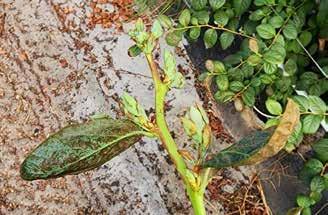

Summer finished with close to average daytime and overnight temperatures in February and little to no rainfall, a good finish for the southern blueberry season. March had slightly above average temperatures, and above average rainfall in parts, with significant falls in the Perth region on the last day of March. The warm temperatures, rainfall and humidity created conditions conducive to chilli thrips, which like to feed on the sugars in new shoots. Blueberries, blackberries and second year strawberries were most affected (Figures 1-3).
Temperatures were mostly one to two degrees below average during April, particularly in the last week of the month, giving freshly planted strawberry runners in the Perth region a gentle start to the season. Rainfall in the Perth region was generally average in April with light falls towards the end of the month, further benefiting the new runners. It was a different story in the southwest where falls in the Albany and Manjimup districts were almost double the average and falls in the Capes region were up to three times above average. Looking ahead for the period from May to July 2023, drier and warmer than average conditions are expected (BOM).
Harvest of second year strawberries in the Perth region started in mid-March while fruit continues to come out of the southern region. Second year strawberries were hit hard with chilli thrip again this season with significant fruit damage and plant deaths on many properties. This season’s strawberry runners were, on average, five weeks late to arrive in Perth, with most planting occurring in late April to early May. Despite concerns of a shortfall in runner numbers, most growers were able to top up through alternative suppliers and planted out all their beds. Harvest of these plants is expected to commence towards the end of May. Growers of temperate varieties in the south of the state have not been as lucky. At this stage it appears that plant numbers will be down significantly, leaving a large proportion of prepared beds empty for the season.
Raspberry and blackberry harvest commenced in the Perth region in early May with concerns over the impact chilli thrip will have on the blackberry crop.
Industry news
The APC Strawberry Producers Committee is in the process of reviewing project proposals that support actions identified in the WA Strawberry Industry Strategic Plan. News on the projects that have been funded will be sent to growers soon. If you would like to get involved or have any questions, contact Helen Newman or the committee chair.

Qfly has popped up again in WA, this time in the metropolitan suburb of Bayswater. While no flies have been detected in farming areas, this incident has had a significant impact on the State’s table grape industry in the Swan Valley, which is within 15km of the detection and therefore inside the Export Assurance Zone. There are no blueberry or Rubus growers within this zone, but there is one strawberry grower located just on the boundary. This grower must treat all fruit with methyl bromide before it is sold and can only sell fruit to domestic and non-protocol export markets until the Quarantine Area is removed.
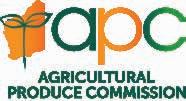 Helen Newman & Aileen Reid, Industry Development Team, Agricultural Produce Commission
Helen Newman & Aileen Reid, Industry Development Team, Agricultural Produce Commission
9 INDUSTRY
Figure 1. Chilli thrip damage has escalated in blueberry growing areas this season with severe damage seen in locations to the north of Perth. Photo credit: Olivia Bell, Costa
Understanding and preparing for a Qfly outbreak is crucial to your business continuity
A Qfly outbreak within 15km of your farming operations will affect your business by changing the way that your fruit must be managed and moved.
The Qfly surveillance and trapping network is present throughout the Perth metropolitan area and in regional growing areas around WA so it's possible that there may be a detection that impacts you in the future.
Here are some tips on how you can prepare your business, so it is ready for a Qfly outbreak:
Stay aware of the current Bayswater Qfly outbreak by visiting: agric.wa.gov.au/qflyupdates
Understand what movement restrictions would apply to your business.
Visit the 'Advice for Growers' webpage (www.agric.wa.gov.au/advice-growersqfly-export-assurance-zone) to learn how to treat and move restricted fruit and plan what you would do if your business was affected by a Qfly outbreak.
For strawberry and Rubus growers this would mean treating with methyl bromide, blueberry growers may choose methyl bromide treatment or could take the 14–20 day cold treatment option.
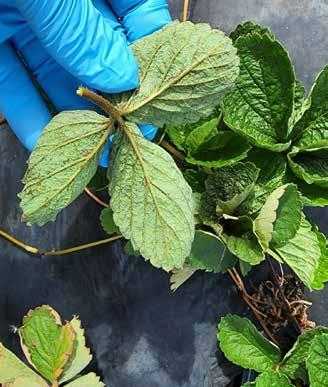
To help your business be prepared, where possible, work with your industry representatives or other growers in your area to identify local treatment facilities or opportunities to work together to reduce potential treatment costs and impacts to your business.
 Figure 2. Second year strawberries with brown scarring on the outer casing of fruits caused by chilli thrip.
Photo credit: Helen Newman
Figure 3. Wrinkled, bubbly leaves with distinctive brown scarring along the leaf veins caused by chilli thrip.
Figure 2. Second year strawberries with brown scarring on the outer casing of fruits caused by chilli thrip.
Photo credit: Helen Newman
Figure 3. Wrinkled, bubbly leaves with distinctive brown scarring along the leaf veins caused by chilli thrip.
10 BERRY AUSTRALIAN JOURNAL WINTER 2023 EDITION 15
Photo credit: Biological Services
Blueberry and strawberry growers were treated to a visit from Berries Australia Export Manager, Jenny Van de Meeberg, in late March. With significant expansion in the local blueberry industry in recent years, growers were keen to hear about the export opportunities ahead and what’s involved in sending fruit for export. It was also a good opportunity to discuss the recent Qfly incursion in Bayswater, and how on-farm facilities might be designed to allow for certified cold treatments.
For more information on how to design a certified cool room facility see: www.agriculture.gov.au/sites/default/files/ sitecollectiondocuments/biosecurity/export/ plants-plant-products/plant-exports-manual/ resources/australian-phytosanitarytreatment-cold.pdf
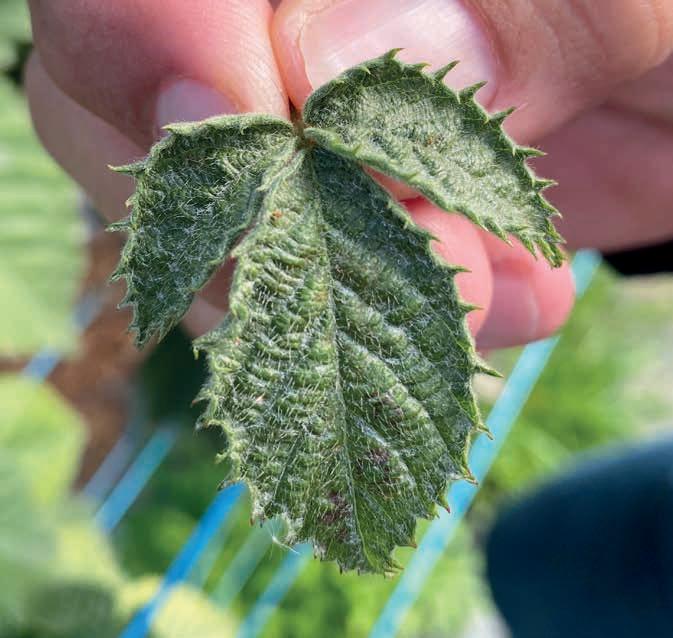 Figure 4: Chilli thrip on blackberry leaves showing leaf distortion and bronzing.
Photo credit: Helen Newman
Figure 4: Chilli thrip on blackberry leaves showing leaf distortion and bronzing.
Photo credit: Helen Newman
11
Queensland

Jen Rowling, Temporary Berry Industry Development Officer
0448 322 389 | berryido@qldstrawberries.com.au
The last few months in Queensland have seen a vast improvement weather-wise compared to the soaking experienced this time last year, and this is obviously a welcome relief for growers across the board. On the whole, it’s been significantly drier with far more clear, sunny days than the overcast and wet conditions experienced in early 2022. Other than a few hot spells, and a bit of rain at the time of writing this update, conditions have been excellent for all berries.
Rubus production has been going exceptionally well. For the Stanthorpe region, there has been good yields with a marked reduction in powdery mildew. This was a significant constraint on yield last year because of the overcast and humid conditions, so it’s great to be seeing good volumes coming out of the region this year.
Blackberry production in particular has been reported to be going gangbusters in the South East Queensland region, and growers are reporting excellent populations of bees pollinating their little hearts out.
The blueberry industry in Queensland is also benefitting from the good weather, with growers and their teams taking full advantage of the mild conditions to prepare the bushes for what is hoped will be a bumper crop over the winter harvest period.
Planting for the 2023 winter strawberry production season in Queensland is now done, however not without its trials and tribulations. From all accounts, runner delivery was considerably delayed because of the much cooler weather conditions experienced over summer in both Stanthorpe and Victoria. Adding to the difficulties, one particular variety out of a nursery in Stanthorpe experienced an unusually high rate of loss and this is currently being investigated for a potential cause.
It was great to see all propagators working hard to ensure that growers had access to replacement plants so that any plant shortage was as minimal as possible. Thankfully, the weather for planting has been very good, a far cry from the wet conditions experienced at around the same time last year.
Labour also seems to have been downgraded to a much lower level of concern for most of the industry. Although there are still challenges associated with accommodation in regional areas, the seasonal worker programs appear to be functioning well for accredited employers and the backpackers are slowly returning to Australia and are looking for work, but it will be interesting to see how the numbers stack up during peak production this year.
And finally, the Queensland Strawberry Growers Association’s Annual Dinner and Awards night returned in May following a two-year hiatus. 115 guests converged on the Pelican Waters Resort to enjoy an evening of dinner, drinks and entertainment. It’s also an opportunity to catch up with fellow growers, industry associates and friends before harvest season kicks off.
A big congratulations to the following award recipients who were recognised for their valuable contribution to the industry:
Brendon Hoyle, Ashbern Farms Early Adoption of Innovation
Mandy Schultz, Luvaberry Industry Influencer
Kylie Fairweather, Stothart Family Farms Business Diversity

Roger Broadley, QSGA Employee Excellence
You can read more about what these inspiring recipients have done to be acknowledged with an industry award on PAGE 87.
12 INDUSTRY BERRY AUSTRALIAN JOURNAL WINTER 2023 EDITION 15
Tasmania
Mark Salter, Berry Industry Development Officer

0400
100 593 | berryido@fruitgrowerstas.org.au
The Tasmanian berry harvest is set to conclude in late May/early June.
Growers I have spoken to have reported good quality fruit despite less-than-ideal weather conditions; most are hoping for good weather in the late autumn period to finish the harvest on a good note.
It has been a challenging year for all berry growers with adverse weather conditions, rising costs, and low pricing impacting growers. The post-Christmas periodparticularly late December and into January - saw prices drop considerably across all berry categories. On a brighter note, late season prices have picked up from the low levels seen earlier in the season.
With growers still occupied with harvest there have been few industry events planned, but one event organised by Fruit Growers Tasmania in February was a strawberry runner field day at JCLM Farming at Ouse in the state’s midlands district. Jack Beattie from JCLM Farming explained the process of growing, harvesting and dispatching strawberry runners to the group who attended. It was a very informative day which was followed by lunch on the deck of Jacks early 1800’s homestead overlooking the Derwent River.
The first stage of the Hort Innovation funded Raspberry and Blackberry Labour Optimisation project (RB21003) is now complete. The project, conducted by Growth Drivers TDG along with a reference group comprising of Rubus growers and industry representatives, has explored several options to improve labour efficiency in the Rubus berry sector. Those options and potential next steps for the project are outlined in an article on PAGE 59.
Kara Barry from the Tasmanian Institute of Agriculture (TIA) is leading a new research project titled “New on-farm strategies for the prevention and control of blueberry rust in Tasmania”. The project officially commenced at the beginning of March.
A project reference group (PRG) consisting of growers, Biosecurity and industry participants has been formed. The aim of the PRG is to enable the project team to seek feedback and advice from stakeholders, and to coordinate industry activity (e.g. grower workshops).


The PRG will also enable stakeholders to provide timely industry information that may enhance the relevance of the project outcomes and the impact to industry.
A new five-year Rubus integrated pest management project is also about to get underway (RB21000). The research program aims to help growers manage and prevent pest outbreaks by using improved and potentially new integrated pest management (IPM) tools and strategies.
The first stage is ready to roll and involves gathering information from both growers and their crops. Project lead Dr Steve Quarrell from TIA says getting good baseline information is crucial, so the research team are looking for growers to get involved. More information about the project is contained in an article on PAGE 57.
Express your interest in the raspberry and blackberry IPM project by contacting:
Rubus IDO: Mark Salter
berryido@fruitgrowerstas.org.au | 0400 100 593 OR
IPM Extension: Michele Buntain michele.buntain@utas.edu.au | 0429
13 INDUSTRY
Rubus
957 975
New South Wales
It is with pleasure that we can announce the appointment of Gaius Leong as our new Industry Development Officer Blueberry. Many of you would know Gaius, who has a thorough understanding of all aspects of berry production, research, development and industry needs analysis. Gaius will be based in the Coffs Harbour region and will commence in early June.

Varroa Mite
The Varroa mite emergency response continues to move forward. For growers affected by the Nana Glen detection and the subsequent red zone designation, there have been many challenges. NSW DPI has been working with industry since Varroa mite was first identified to enable business continuity wherever possible for beekeepers and industries reliant on bees for pollination.
The nationally approved Nana Glen pollination plan has been developed and is in place to assist berry growers with pollination services. Commercial beekeepers located in the general (blue) zone or the Nana Glen surveillance emergency (purple) zone can now apply for permits to move hives for pollination in the Nana Glen area. There are a range of conditions beekeepers must adhere to under the plan and permits for movement will be subject to meeting these. These include:
• Where the hives are currently located and where they have been located in the past 18 months
• Be a registered beekeeper
• Undertake the Tocal online training course
• Undertake surveillance prior to and post movement using an alcohol wash
• Apply and hold a permit for the movement
• Comply with the movement conditions
• Decontaminate vehicles post movement and prior to leaving the site
• Maintain written records of hive movements
For the full conditions please visit: www.dpi.nsw.gov.au/emergencies/biosecurity/ current-situation/varroa-mite-emergency-response/ nana-glen-pollination-plan
A key aspect of the Nana Glen pollination plan is that baiting of wild European honey bees will continue throughout the Nana Glen Eradication Emergency Zone (Red). It is critical that any beekeeper and grower utilising managed bees for pollination ensures they have made an application and had a permit issued before movement of any hives that they wish to have on a farm within the Nana Glen area. The hive location details will be used to allow European honey bee feeder/ bait stations to be located more than 2 km away from hives at GPS locations nominated by beekeepers via their permit applications for this zone.
Natural Disaster Assistance
Time is running out for any producer affected to lodge their application for assistance from the declared natural disasters in early 2022 (ARGN 1012). Applications need to be lodged by 30 June 2023 and additional claims can be lodged until 30 September 2023. To check if your local government area was covered by a declaration visit www.raa.nsw.gov.au/disaster-assistance/declarations If you would like to speak to someone about eligibility, how to complete the applications or understand further the types of things you can claim, please contact the Rural Recovery Support Service within NSW DPI. Recovery Officers can help you:
• prepare grant applications
• find the right technical advice
• access workshops & information on key recovery topics
• connect with industry experts
• navigate government systems and regulations to resolve complex issues involving multiple agencies
• link to a wide range of personal, business and financial services
Contact the Rural Recovery Support Service: flood.recovery@dpi.nsw.gov.au | 0448 077 684
14 INDUSTRY BERRY AUSTRALIAN JOURNAL WINTER 2023 EDITION 15
New Fair Farms online Manual now available
Sachin Ayachit, Fair Farms Program Manager, Growcom
Fair Farms has recently released their latest tool, the Fair Farms Manual, to assist horticulture growers and businesses gain and maintain compliance with Fair Work and work health and safety regulations.
Specific to Horticulture in Australia, the manual provides peace of mind to growers by offering a complete suite of templated policies, procedures and checklists which can be tailored to the individual business’s needs to ensure all relevant workplace legislative requirements are being met.
Access to the Fair Farms manual is exclusive to Fair Farms participants who register and complete the confidential Online Self-Assessment (OSA). Traditionally the Fair Farms program has attracted growers who supply supermarket retailers; however this now allows all growers entry into the program.
The one-time purchase of $795 (+GST) includes ongoing updates so growers can rest assured they will have the most up-to-date information within their business.
Queensland Fruit & Vegetable Growers’ Chair Joe Moro said the Fair Farms Manual has been designed to assist growers in seamlessly implementing legislative compliance practices within their businesses.
“Ensuring compliance takes a great deal of time and resources, many growers do not have dedicated HR and WHS personnel, this manual should be of particular assistance to these businesses”.
QFVG CEO Rachel Chambers added "Fair Farms exists to educate and support growers to achieve their legislative requirements. We know that growers are under an immense amount of pressure to keep abreast of all legislative requirements in horticulture. The ‘one stop shop’ manual makes it easier for growers to ensure they’ve ticked every box".
Fair Farms National Program Manager Sachin Ayachit said the Manual is a result of extensive feedback and research to make the Manual as targeted, effective, and as useful to growers as possible.
“The Fair Farms Manual came about through feedback from our members, who asked for the tools and the information to better understand and comply with their obligations, as well away to continually revisit and review their compliancy”.
Participants can access and purchase the manual via the Fair Farms portal at www.fairfarms.com.au
Each section of the manual includes:
FACTSHEETS
Providing basic information about the requirements of each section, with directives to obtain further information from relevant legislation, codes of practice, and Federal and State government bodies.
TEMPLATES
Policies, procedures, forms and checklists, suggesting content that will meet the requirements of the Fair Farms Standards. The templates can be adapted to meet specific requirements of individual business.
INTERNAL AUDIT CHECKLIST
Includes a Fair Farms Internal Audit Checklist, which will assist growers in conducting a health check of their workplace relations practices and to prepare for a third-party audit.
15 INDUSTRY
National Farmer Wellbeing Report 2023: Farming’s silent crisis
Jane Richter
Published in late March 2023, the National Farmer Wellbeing Report research was commissioned by Norco (the 100% farmer-owned co-operative based in northern NSW), in partnership with the National Farmers’ Federation, and with additional input from the Black Dog Institute. The research surveyed 1,338 Australian farmers aged 18+ with representation from all states and territories across Australia, as well as a cross section of farming sectors. You can download the full report at bit.ly/23-farm-wellbeing
The report paints a saddening picture of the mental health of Australia’s farmers with almost one third (30%) reporting a decline in their mental health over the past few years.
Farmers are typically brave, optimistic and resilient people. We take the knocks that would cripple many other people and we eat them for breakfast! But it has been an incredibly trying few years in this country for farming with extreme weather events – bush fires, storms, floods, droughts - coupled with the impact of other factors outside of our control like rapidly rising costs, labour shortages and supply chains upended by the pandemic. What other profession has to manage the same breadth of responsibilities and level of risk, all the while being asked to do one of the most important jobs in the land; to produce the safe and nutritious food that we are all 100% reliant upon for our very survival?
Whilst it is not new news that some farmers experience poor mental health outcomes, this new report suggests that it is more widespread than previously understood. In recent years, nearly half of Australian farmers (45%) have felt depressed, with almost two thirds (64%) experiencing anxiety. For one in seven (14%), it’s a frequent experience.

Even more devastating, close to half of Australian farmers (45%) have had thoughts of self-harm or suicide, while close to a third (30%) have attempted self-harm or suicide. This is a staggering number and one which demands urgent national attention.

According to the report, the way in which farmers’ mental health struggles manifest themselves appears to vary noticeably according to gender. Women tend to report depression and anxiety in greater numbers, while men pose a greater risk when it comes to self-harm or suicide.
And age makes a difference too. The older generation has experienced the biggest decline in mental health over the past few years, with approximately 40% of those aged 45-64 reporting a downward trajectory.
16 BERRY AUSTRALIAN JOURNAL WINTER 2023 EDITION 15 INDUSTRY
Source: ifarmwell.com.au
What is driving the decline in mental health?
Natural disasters and weather impacts (47%) understandably topped the list for farmers trying to identify the triggers but financial stress (36%) and cost pressures (35%) both made it into the top 3. Quantifying the impact across the country of natural disasters, the report found that 88% of Australian farmers have had their farming operation significantly impacted over the past five years, with an average cost of $1.4 million per farm.
Digging deeper into the numbers a clear picture emerges of a more complex problem with 76% of farmers surveyed feeling that the role they play is undervalued by the Australian public. We produce the food that consumers simply take for granted.
What should be alarming for those same complacent shoppers is that two in five farmers (40%) have contemplated leaving the industry, citing not only the physical, emotional and financial pressures, but also the perception that farming is no longer valued in Australia as key reasons.
What’s more, a quarter of Aussie farming families (24%) report being in their ‘final generation’ as they either don’t want their children to take over the farm, or their children don’t wish to follow in their footsteps citing the pressures and uncertainties of farming being too great (29%) and the financial rewards being insufficient (24%) as two major reasons.
The impact is not being felt in the same way across all sectors of farming, but horticulture is in second place with 44% of surveyed horticulture farmers reporting a decline in their mental health.
More than a quarter of all farmers (27%) say feelings of loneliness or isolation, combined with limited access to mental health services have had the biggest impact on their mental health over the past five years.
Respondents to the survey also believe that rural and remote communities are forgotten about and left behind when it comes to public policies and services, with one in ten (11%) calling for more support and funding from the Government.
Findings from the Report also indicate that many farmers are suffering in silence with more than half (51%) not wanting to burden family or friends with their problems or are simply not comfortable discussing them.
For those who have experienced mental health challenges, close to one in five (17%) did not want to seek or receive help, while one in ten (11%) felt too embarrassed to do so. One in seven farmers (15%) also reported difficulty accessing suitable services in their community.
What can we do to support our farmers?
While some macro factors - such as the weather and the global economy - are impossible to control, the research identifies several mental health triggers over which we can potentially exercise some influence as well as opportunities to improve access to support.
With the endorsement of the National Farmers’ Federation, Norco has developed 3 key recommendations aimed at galvanising action among consumers, farmers and the industry as a whole.
1. Aussie Grown
Encourage consumers to actively choose Australian farmer products. In order to help restore much-needed pride within the farming community, more can be done by consumers to recognise and champion the critical role farmers play in our society. There is a role to play here for our industry marketing campaigns, educating and connecting consumers with the farms where their food is grown with pride, sweat and tears and the farmers who shoulder all of the risks.
2. Check In
Call on farmers to “check in on a mate”. Anecdotal research and the findings of this report indicate that farmers respond best to other farmers, who are uniquely placed to understand the challenges they’re facing. In rural communities where loneliness and social isolation is rife, it’s never been more important for farmers to stay connected to one another. Whether by attending industry or community events together, dropping in to help out with some farm work or even just picking up the phone, it’s important to maintain those social connections during tough times.
3. Advocate
An industry-wide push to create a ‘Farmer’s Army’ of mental health advocates. Norco is also calling on the farming industry to follow their lead by investing in mental health training for their workers. For Norco, this includes offering Lifeline Crisis Supporter Training to all field officers, select co-op farmer members, the senior executive team and Board of Directors, so that they have the right tools and can develop the skills to identify and provide support to farmers who may be struggling.
In addition to Norco’s recommendations, the National Farmers’ Federation is calling on all levels of government to urgently assess the resourcing they provide to farming communities to support wellbeing and mental health.
“This country is built on the backs of our farmers. If our farmers do well, then we all do well. We need to make farmers feel valued again, ” comments Norco CEO Michael Hampson.
17
FARMER
TO FARMER : WHY IT’S GOOD TO TALK
Ross Blanch has been a dairy farmer for more than fifty years - but for close to three decades he’s also been working as a Lifeline Crisis Counsellor, providing guidance and care to individuals struggling with mental health issues.
His work in this space since has seen him travel the country and provide support to those in need following natural disasters such as the equine influenza outbreak, as well as victims of cyclones and floods. Four years ago, motivated by the emotional toll the drought was having on farmers, Ross began operating a farmer-to-farmer call line, a service that was established by Lifeline Queensland.
“Farming is tough, both financially and emotionally,” he says. “Farmers tend to brush off their issues and say they’ll be alright – but it’s extremely important that they have someone to talk to who understands and has experienced the same struggles they are.”
He often speaks to farmers who feel helpless and out of options, largely due to financial challenges, or the flood recovery process, many of whom are sadly considering suicide –but he says the work that he does helps to bring farmers to the now rather than looking back.
“I acknowledge what they’ve been through but help to bring them out of the past and into the present,” he says. “It’s a really important strategy in crisis counselling that helps them to change their thinking patterns, and after an hour and a half you can see a mentally healthier person.”
“Access to support, especially from someone who understands firsthand what they’re going through, can be lifesaving - and more work needs to be done to ensure our farmers right across the country feel supported, especially when times are tough.”
If you or anyone you know needs help Lifeline 13 11 14 Beyond Blue 1300 224 636 Suicide Call Back Service 1300 659 467 Headspace 1800 650 890 ReachOut au.reachout.com MensLine Australia 1300 789 978 Care Leavers Australasia Network (CLAN) 1800 008 774 Head to Health headtohealth.gov.au SANE Australia 1800 187 263 or sane.org Wellmob wellmob.org.au The Ripple Effect therippleeffect.com.au Rural Financial Counselling Service nema.gov.au Rural Aid ruralaid.org.au 18 BERRY AUSTRALIAN JOURNAL WINTER 2023 EDITION 15
Other resources that can be helpful
Royal Flying Doctor Service Booklet
A new Royal Flying Doctor Service booklet ‘Mental Health on the Land' aims to provide support to individuals and families struggling with mental health issues. Funded by a grant from Thankful4Farmers, the booklet includes topics like:

• Keeping well
• Dealing with difficult times on the land, grief and loss
• Strategies to reduce loneliness
• Responding to trauma, anxiety and depression
• Resources & contact details for further information & support
This response is part of an ongoing effort to help break down the barriers that prevent people in rural and remote areas from accessing help. The help resources contained in the new booklet are Queensland based - but the content is relevant to every farming family or individual.
Download it at bit.ly/RFDS-MentalHealthBooklet
ifarmwell.com.au
The ifarmwell website has been designed by Australian farmers to help other Australian farmers cope effectively with life’s challenges and get the most out of every day. It does this by sharing practical ways of coping with difficult circumstances, thoughts and feelings (especially worries about things you can’t control) and helping you to work out where it is most useful for you to put your attention and energy.
You can do this from the privacy of your home, tractor or shed. ifarmwell can be accessed on your computer, smartphone or tablet - anywhere that you have internet access. The site will even send you text message reminders to keep you focused, and it’s free!
The website is designed to be useful for BOTH farmers who are currently feeling down or stressed AND those who would simply like some new tools to improve their ability to cope with uncertainty associated with life on the land.
ifarmwell aims to transform the wellbeing of farmers and their supporters, in order to build agricultural communities and businesses that thrive.
Access all the tools and support now at ifarmwell.com.au

19
Fair Farms is an Australian owned training and certification program. Developed for industry, by industry.



Demonstrate your commitment to fair employment.
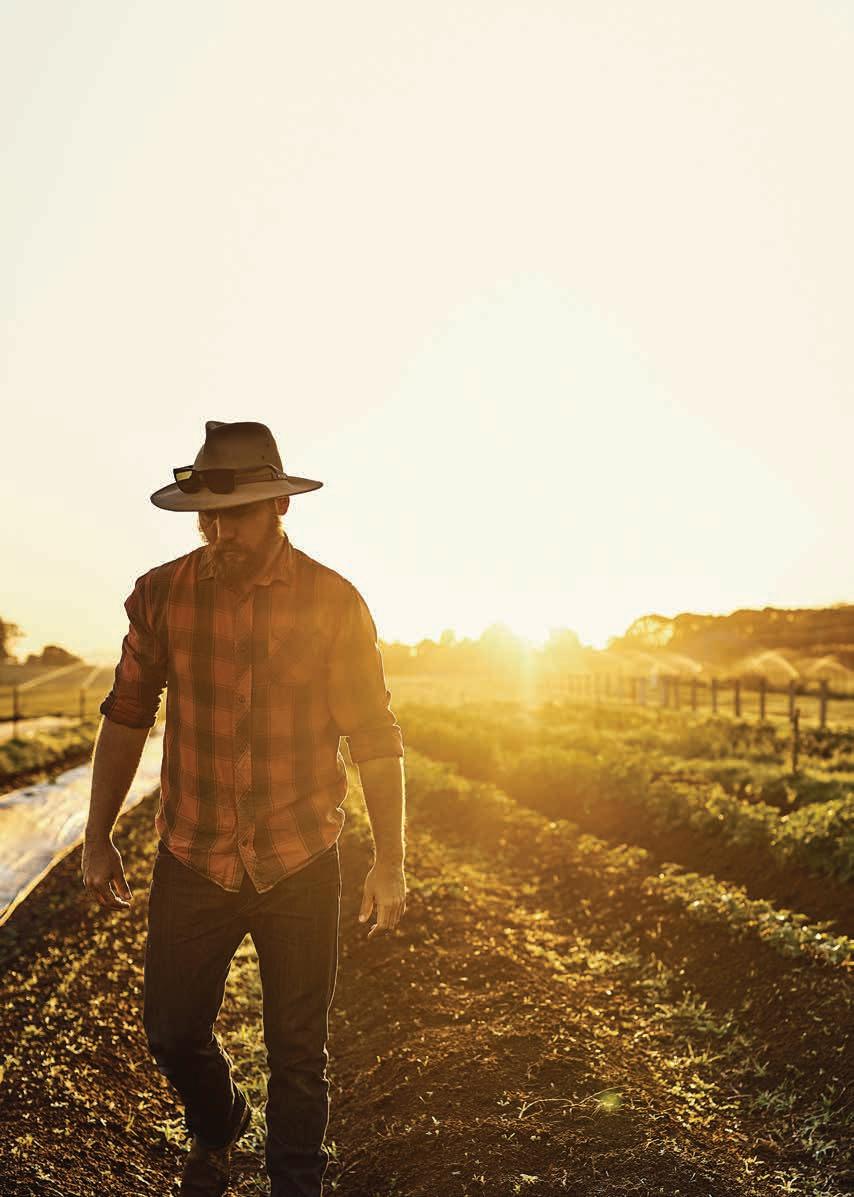
Funded by: Supported
Sign up now www.fairfarms.com.au
by:
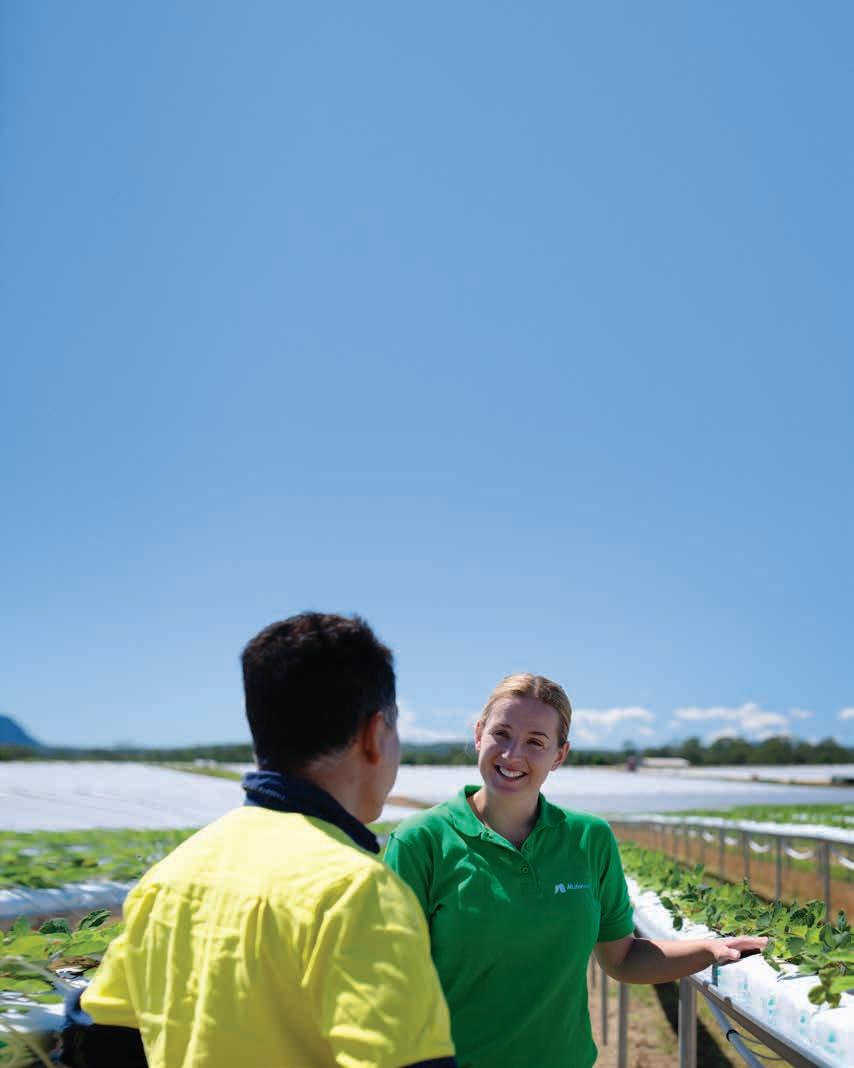

INTERVEN E ®
Fertilizer Australia launches labelling awareness campaign
Stephen Annells, Executive Manager, Fertilizer Australia
Fertilizer Australia — the Australian fertiliser industry’s peak body — has recently launched a national Fertiliser Labelling Awareness campaign to highlight:
• the importance of fertiliser labelling
• how to recognise the correct labelling of fertilisers, and
• the potential consequences of purchasing products that are not accurately labelled
It’s a timely initiative because recent supply chain restrictions, resulting from COVID and Russia’s invasion of Ukraine, have led to several examples of products being sourced from markets Australia is less familiar with and markets unfamiliar with Australia’s labelling requirements.
Several of these consignments, primarily sold into the horticultural industry, had no labels at all! Some didn’t even have correct Safety Data Sheets or Certificates of Analysis.
So, what’s the potential impact of incorrect labelling?
Fertiliser labels contain vital information to help agronomists and farmers decide about nutrients for optimal crop yield and quality while caring for the environment and food safety.
While most fertilisers are not classified as dangerous goods, some products are scheduled poisons or hazardous substances. Labels provide this information so people transporting and handling the products stay safe.
Fertiliser labels also aid traceability, a requirement of quality assurance schemes such as Freshcare.
What should be on the fertiliser label?
Agronomists and farmers use fertiliser labels to determine the best product to meet their needs. We call this the four Rs.
That’s why fertiliser labels must be descriptive and include all relevant information, such as the plant nutrients contained in a fertiliser, the form of the nutrient and its concentration. Nutrients may only be included on the label if they meet or exceed the concentrations in the tables on the page opposite.
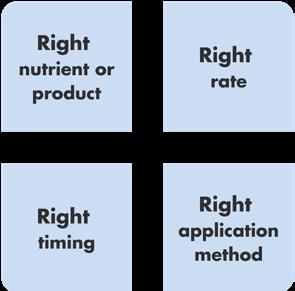
22 BERRY AUSTRALIAN JOURNAL WINTER 2023 EDITION 15 INDUSTRY
Fertilisers can also contain contaminants that can accumulate in the food chain. Inorganic fertiliser labels should provide warnings on impurities when they exceed a “trigger concentration.” These contaminants include cadmium, lead, mercury, fluorine and biuret. For impurities of concern, maximum permissible concentrations (MPCs) have been set. It is often impossible to know if poorly labelled products exceed MPCs without a chemical analysis of the product.
This sample label shows the information that is required on a fertiliser label in Australia to be compliant with the National Code of Practice for Fertilizer Description and Labelling. Photo credit: Fertilizer Australia
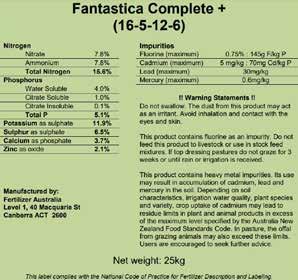
So, what can go wrong?
There have been cases where the quality of imported fertiliser has not matched the certificate of analysis provided by the supplier. In one case, cadmium levels far exceeded the maximum permissible concentration. In another, the “fertiliser” appeared to be simply soil. Usually, these issues are managed by the QA systems operated by the manufacturers and importers, including sampling and product analysis.
What can you do?
Fertilizer Australia members must have QA systems and labelling that meets the National Code of Practice for Fertilizer Description & Labelling.
This means you can purchase fertiliser products from Fertilizer Australia members with confidence.
You can check our members list at bit.ly/41P4qxB and you can find the National Code of Practice for Fertilizer Description and Labelling at bit.ly/3zfFHWk
Minimum nutrient concentrations in solid fertilisers Nutrient Minimum (%w/w) N, P, K, S, Ca, Mg, Si 0.5 Fe 0.1 Cu, Mn, Zn 0.05 B 0.02 Mo, Co, Se 0.001 Minimum nutrient concentrations in liquid fertilisers and soluble solids intended only for use in solution Nutrient Minimum (%w/w) N, P, K, S, Si 0.1 Ca, Mg 0.1 B, Cu, Fe, Mn, Zn, 0.005 Co, Se, Mo 0.001 Mo, Co, Se 0.001
23
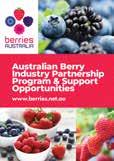

SUPPORT US & BECOME AN INDUSTRY PARTNER Support the largest horticultural group in Australia by becoming an Australian Berry Industry Partner with Berries Australia! To discuss your options in more detail, please contact Jen Rowling at Berries Australia on 0448 322 389 or email jenrowling@berries.net.au FIND OUT MORE AT: www.haygrove.com FIND OUT MORE AT: www.syngenta.com.au SILVER PARTNERS FIND OUT MORE AT: www.agnova.com.au FIND OUT MORE AT: www.fmccrop.com.au BRONZE PARTNERS
Recovery & Resilience: Hort360 Better Business
John Hay, Recovery & Resilience Officer, Berries Australia
There are so many factors that growers have to consider these days above and beyond just growing a good crop. It is easy to get caught up in the day-to-day and not actually do the planning to ensure future success in a changing environment. The reality is that we should utilise all the available tools and support, and make time to work on the business, not just in the business!
The NSW Recovery and Resilience project is centred around Hort360 as it provides a structured way to help growers with the planning process. There are a number of modules focusing on different aspects of farm business with the ultimate goal of providing a 360 degree view of your farm.
Completing the Better Business module in Hort 360 is one mechanism for growers to do a stocktake of the plans that are currently in place, and identify potential improvements. Once the module is completed the automated report helps prompt questions on goal setting, highlights strengths, weaknesses and risks, and suggests actions to take to help reach your short-term goals and long-term vision. It raises awareness about what additional plans could be developed for retirement and succession, to meet environmental outcomes for access to additional markets, or to plan and recover from natural disaster events.
Sustainability is a definite buzzword these days but what does it mean in reality? Diversity and resilience practices for farming are aimed at implementing strategies that promote soil health, biodiversity, and sustainable farming practices. These aim to enhance the resilience of farming systems to climate change, environmental challenges, economic and market fluctuations. As the industry looks to align with the Hort Innovation Sustainability Framework, growers must use all the available tools at their disposal and adjust plans accordingly.
Traditionally, agriculture has relied on repetitive practices and established routines. With improved business planning and by implementing plans that
have been refined using the Hort360 Better Business module you can take small steps, and track how you are progressing towards a desired change. However, the thought of change can often bring uncertainty. Embracing the principles of neuroplasticity, which is the brain's ability to reorganise and adapt, may offer an intriguing application in the realm of farming.
By exploring novel techniques, adopting technology and alternative approaches, and embracing change, the brain’s plasticity can be harnessed to potentially revolutionise the agricultural landscape. Farmers can continually adapt their methods in response to shifting environmental conditions, technological advancements, and evolving consumer demands.
The flexibility offered by neuroplasticity enables farmers to re-wire their thinking, challenge conventional wisdom, and explore sustainable farming practices that optimise resource efficiency and mitigate environmental impacts. Moreover, it encourages farmers to engage in lifelong learning, experimenting with innovative farming techniques and collaborating with experts to enhance productivity and resilience in the face of dynamic agricultural challenges. Neuroplasticity in farming unleashes the power of the human brain to cultivate a sustainable future for agriculture by fostering adaptability, creativity, and continuous improvement.
With that in mind, it is important to take time out of the day-to-day running of your business, access the tools and support that is available for free, and apply new strategies that could lead to change. By improving planning and practices, you can achieve a Better Business!
To find out more about Hort360 or understand what support is available to you, contact:
John Hay, Recovery & Resilience Officer 0488 147 800 | recovery@berries.net.au

INDUSTRY
25





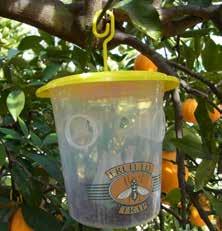
fruit
y?
for Bugs has you covered with powerful tools backed by expert advice Attract and kill female flies with Fruit Fly Lure protein bait Attract and kill Monitor with Fruit Fly Trap Pro Scan this QR code to access our practical Fruit Fly Toolkit For more information visit our website www.bugsforbugs.com.au Or call David Loxley 0459 974 960
Fighting
fl
Bugs


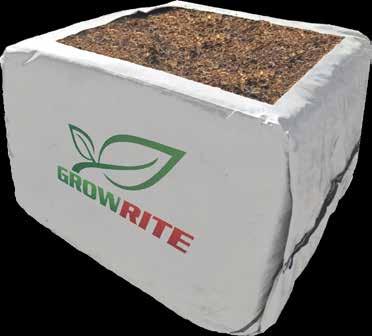


Contact Zak Iqbal on 0455 415 504 or zak.i@fernland.com.au Contact Head Office on 1800 672 794 or sales@fernland.com.au www.fernland.com.au We have grow bags from 1m Slabs to 6L 8L 10L and 30L Bags Ideal for vegetables, berry crops, ginger and medicinal cannabis. We also stock: Weedmat, Shadecloth, Bird Netting and a range of Plant Bags. Now distributors of the range! Are you looking for reliable and consistent quality coir – grow bags at an affordable price !
Serviced Supply Chains: Strawberries

AM21000 Serviced Supply Chains II
Jodie
Campbell,
Principal Horticulturist (Supply Chains), Department of Agriculture and Fisheries, Queensland
To support exporter decision making, there is a need to identify and quantify the risks of fruit and vegetable quality loss. Monitoring and evaluating cultivar postharvest performance will inform supply chain handling strategies for different modes of transport. Assessing the potential of improved and sustainable cooling, storage and packaging technologies to enhance quality will also be critical to ensure viable export pathways remain for Australian producers.
AM21000 Serviced Supply Chains II (SSCII) is a 3.5-year (2022-2025) investment in providing Australian fruit and vegetable growers with the necessary decision support for managing export and domestic supply chain risks and delivering consistent fresh produce quality.
The project has three key objectives:
• Extend the success of the initial Serviced Supply Chains “Monitoring to Improve” project to additional varieties, commodities and freight modes.
• Develop decision aid tools based on predictive shelf life models via the inclusion of additional parameters such as production district, pre- harvest factors and phytosanitary treatments.
• Improve accessibility of the associated decision aid tools via a specialised digital interface.
The project has a focus on avocado, mango, strawberry, summerfruit and vegetables.
Despite Australia’s proximity to key export markets, consistently delivering high quality fruit and vegetables is an ongoing challenge. This has been amplified by recent supply chain disruption associated with the COVID-19 pandemic.
28 BERRY AUSTRALIAN JOURNAL WINTER 2023 EDITION 15 INDUSTRY
Figure 1. Australian strawberries at retail in Bangkok, Thailand. Photo credit: Queensland Department of Agriculture
Findings from the initial supply chain project
The initial Serviced Supply Chains project (AM15002) was a 4.5-year investment that increased the value and profitability of Australian horticulture exports by improving supply chain handling practices and performance. The project worked with citrus, mango, summerfruit and table grape exporters to increase their knowledge, skills and confidence to access modern monitoring and decision aid tools to better manage supply chain risks and deliver more consistent quality produce.
Key project activities included:
• Monitoring export handling conditions to identify opportunities for improving practice
• Developing decision aid tools to inform handling strategies for increasing product consistency
• Increasing exporter awareness and adoption of monitoring and decision aid tools and services
The monitoring of more than 200 export shipments identified that poor airfreight temperature management and extended seafreight duration were major supply chain risks to consistently delivering high quality produce.
While new wireless remote monitoring technologies were embraced by exporters for their real-time reporting of consignment temperature and location, data interpretation was a time-consuming process.
The development of customisable, intuitive dashboards that streamed data from multiple logger brands improved the efficiency of data analysis and associated decision making.
Parallel export simulation trials were completed to quantify the impacts of different handling scenarios on fruit quality. This helped the exporters to prioritise interventions to reduce instances of temperature breaches that otherwise compromised quality and reduced returns.
Time x temperature storage trials were also conducted to establish the suitability of different cultivars to tolerate seafreight or airfreight supply chains and still arrive with sufficient shelf life. Models for predicting the remaining shelf life of four mango and six stone fruit cultivars were developed. The models were based on monitored conditions from harvest to the importer and were validated in commercial supply chains with an accuracy of ± 1-4 days at a 90 per cent prediction interval. The co-investing stone fruit exporter relied on these decision aid tools to guide the selection of cultivars suited to air and seafreight.
Monitoring of handling procedures prior to export also revealed variation in practice that reduced the consistency of product quality arriving in-market. The co-investing citrus exporter identified the need to standardise and improve lemon degreening and pre-cooling treatments to successfully reduce the risk of chilling injury developing during seafreight. Models for predicting the risk of rot development on table grape berries were also further refined.
The benefits of monitoring have been promoted through case studies and other media, leading to greater awareness and adoption. Through their association with the project team, 33 leading exporters, who account for at least 69 per cent of all mango and more than 10 per cent of total stone fruit export volume, have adopted wireless reporting monitoring technology as a standard practice in the past two to four years. Additional businesses beyond this project have co-invested in several other supply chain improvement projects with a monitoring and predictive tools component.
The co-investing mango exporter shared the monitoring data with their chain partners to encourage improved cool-chain practice. As a result, average mango airfreight consignment temperatures to Asia reduced from 17°C to 13°C from year one to year four, which resulted in a 2.4–day increase in shelf life.
29
SSCII Strawberry program
The strawberry component will be delivered to industry in close consultation with a Strawberry Advisory Group (SAG) which includes growers from Queensland, Victoria and Western Australia as well as representation from Berries Australia, Hort Innovation and DAF. The inaugural meeting of the SAG was held in October 2022 to discuss the scope of the project and the purpose of the SAG.
The key objectives will be to:


• document the current state of industry supply chain practices
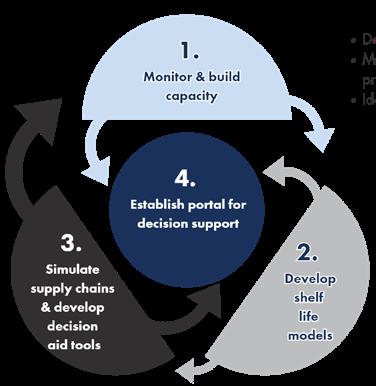
• monitor and improve domestic supply chain conditions and fruit quality
• quantify impacts of market access treatments (e.g. methyl bromide fumigation) and postharvest handling practices on cultivar performance
• work with growers to improve retail quality and shelf life

• develop capacity and confidence to export
The expected project outcomes include:
• Greater knowledge of the impacts of postharvest treatment and handling practices on cultivar performance and shelf life
• Confidence to implement improved practices to deliver more predictable quality fruit to domestic and international markets
• Increased market demand and profitability due to consistently meeting market expectations
• Extension of project learnings to other berry crops, such as Rubus species, and alignment with other export development investments (e.g. MT20004)
Expected outputs from the project will include:
• monitoring systems and tools that identify areas for improvement
• updated guidelines on harvest and postharvest practices that increase the consistency of quality, shelf life and value of fruit
• decision aid tools that enable prediction of fruit quality on arrival in domestic and export markets plus remaining shelf life
• analysis of shelf life extension technologies or practices that reduce quality issues, such as packaging or controlled atmospheres
30 BERRY AUSTRALIAN JOURNAL WINTER 2023 EDITION 15
Figure 2. The project methodology model for strawberries.
Progress to date
Some preliminary monitoring activities out of Queensland and Western Australia were conducted in October 2022 with 4 different domestic supply chains mapped. Early monitoring of supply chains has already demonstrated deviations to best practice, with one shipment transported at 10oC for 2 days until arrival in market where it was cooled to 3oC, which impacted on fruit quality and remaining shelf life (Figure 3).

In 2023, further consignments will be monitored for temperature and quality. Consignments will be tracked from the main growing regions around Australia and will focus on the key cultivars for those regions. The information will then be used to conduct simulation studies to identify when and how quality is lost. A confidential report will be generated on each monitored consignment and provided to the collaborating supply chains. The data from these consignments will be compiled and deidentified into recommendations for the wider industry.


Interested to get involved?
This project offers a great opportunity for strawberry growers and their supply chain partners to get involved in monitoring their supply chains to identify areas of risk. Interested growers are invited to contact Jodie Campbell at jodie.campbell@daf.qld.gov.au or contact your local Berry Industry Development Officer.


Acknowledgements
The Serviced Supply Chains II project (AM21000) is funded by the Hort Frontiers International Markets Fund, Avocado and Strawberry research and development levies, and contributions from the Australian Government. It includes co-investment from the Department of Agriculture and Fisheries, Queensland (DAF), the Department of Industry, Tourism and Trade, Northern Territory (DITT), the Department of Jobs, Precincts and Regions, Victoria (DJPR), the Department of Primary Industries and Regional Development, Western Australia (DPIRD), AUSVEG Ltd, Pinata Farms Pty Ltd and Summerfruit Australia Ltd.

31
Figure 3. Consignment monitoring from Brisbane to Adelaide with tive™ data logger.
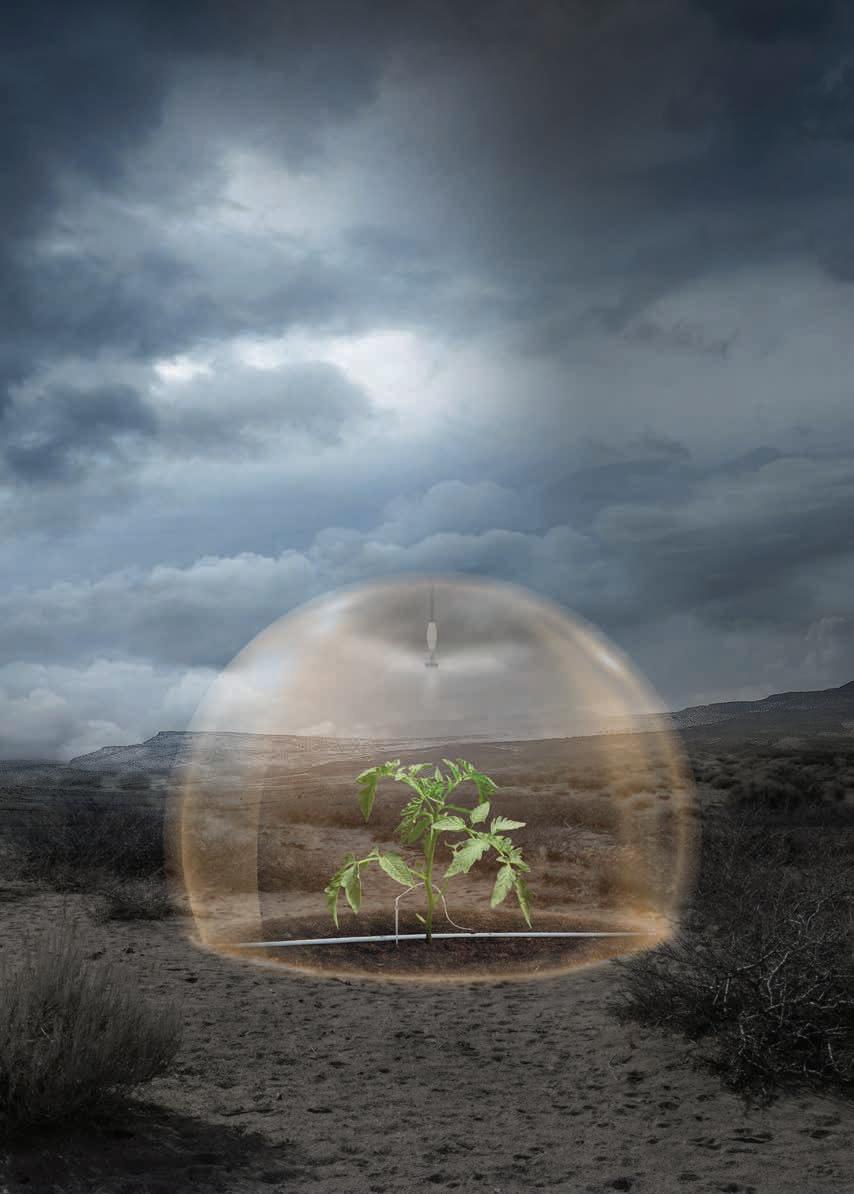
FERTIGATION RIVULIS PROTECTED AGRICULTURE ULTIMATE IRRIGATION CONTROL GROW BE YOND IRRIGATION RATE INSIDE TEMPERATURE RELATIVE HUMIDITY Greenhouse, tunnel or nethouse, growing high producing, high quality, high health crops is the business you’re in. And we make it our business too. To find out more visit rivulis.com/protected TRACTA65146
Managing psychosocial hazards in the workplace: spotlight on bullying
Jane Richter
A psychosocial hazard is anything that could cause psychological harm (e.g. harm someone’s mental health).
Psychosocial hazards are hazards that:
• arise from or in relation to:
— the design or management of work
— the working environment
— equipment, machinery, appliances (known as ‘plant’) at a workplace, or
— workplace interactions or behaviours; and
• may cause psychological and physical harm.
Psychosocial hazards and the appropriate control measures may vary between workplaces and between groups of workers, depending on the work environment, organisational context and the nature of work.
How psychosocial hazards cause harm
Psychosocial hazards can create stress. This can cause psychological or physical harm. Stress itself is not an injury. But if workers are stressed often, over a long time, or the level of stress is high, it can cause harm.
Psychological harm may include anxiety, depression, post-traumatic stress disorder or sleep disorders. Physical harm may include musculoskeletal injuries, chronic disease or fatigue related injuries.
 Photo credit: Nathan Cowley, pexels.com
Photo credit: Nathan Cowley, pexels.com
33 INDUSTRY
Psychosocial hazards may interact and combine
Psychosocial hazards may interact or combine to create new, changed or higher risks. It is important to consider all the psychosocial hazards workers may be exposed to when managing psychosocial risks. Some hazards may not create psychosocial risks on their own but may do so if combined with other hazards. For example, when workloads are high the risk may increase if workers cannot take breaks or there is no one around to help. Some hazards may only create risks on their own when severe.
Psychosocial hazards must be managed by a person conducting a business or undertaking (PCBU) just like any other workplace safety risks.
Bullying
One of the most well-known psychosocial hazards is bullying.
Workplace bullying is repeated and unreasonable behaviour directed towards a worker or a group of workers that creates a risk to health and safety.
Repeated behaviour refers to the persistent nature of the behaviour and can involve a range of behaviours over time. Unreasonable behaviour means behaviour that a reasonable person, having considered the circumstances, would see as unreasonable, including behaviour that is victimising, humiliating, intimidating or threatening.
Not all behaviour that makes a person feel upset or undervalued at work is workplace bullying. Work-related bullying is different to harassment as the behaviour needs to be repeated. Bullying is not a one-off incident and refers to the persistent nature of a range of behaviours a person may be exposed to over time.
Examples of behaviours, whether intentional or unintentional, that may be workplace bullying if they are repeated, unreasonable and create a risk to health and safety include, but are not limited to:
• abusive, insulting or offensive language or comments
• aggressive and intimidating conduct
• belittling or humiliating comments
• victimisation
• practical jokes or initiation
• unjustified criticism or complaints
• deliberately excluding someone from work-related activities
• withholding information that is vital for effective work performance
• setting unreasonable timelines or constantly changing deadlines
• setting tasks that are unreasonably below or beyond a person’s skill level
• denying access to information, supervision, consultation or resources to the detriment of the worker
• spreading misinformation or malicious rumours
• changing work arrangements, such as rosters and leave, to deliberately inconvenience a particular worker or workers
Each State and Territory has practical guidance for duty holders on ways to eliminate or minimise risks to psychological health and safety at work, including bullying.
The risk of harm can increase when other psychosocial hazards are not managed – there can be a cumulative effect leading to stress experienced and, over time, may cause psychological or physical illness or injury.
Persons conducting a business or undertaking must follow a risk management process to ensure the health and safety of workers.
If the behaviour involves violence, for example physical assault or the threat of physical assault, it should be reported to the police.
34 BERRY AUSTRALIAN JOURNAL WINTER 2023 EDITION 15
The process is the same for psychological and physical hazards:
IDENTIFY HAZARDS
• Consult with workers, and health and safety representatives
• Review workers’ compensation claims, internal hazard and complaints records
• Conduct walkthroughs of the work environment
ASSESS THE RISK
• Consider the number of workers exposed to the hazard
• Consider the frequency and duration of exposure
• Consider the interaction and combination of psychosocial hazards
CONTROL THE RISK
• Control measures needed to implement according to the hierarchy of controls (eliminate or minimise the risk as far as reasonably practicable)
• Controls needed to be from an organisational or systems level (and not be individual-focussed)
• Include input from workers who are directly involved in the work
MONITOR & REVIEW CONTROLS
• Check to see if controls are effective in eliminating or minimising the risk or if they may be creating another hazard
• Check if the controls are being adopted by workers
• Consider if there’s been a change in the work environment or processes after an incident
Getting help with managing psychosocial risks in your business
A great place to start is People at Work. The People at Work psychosocial risk assessment tool is validated, evidence-based, robust and free for all Australian businesses. The tool assesses a number of the most common psychosocial hazards and factors.
The survey is a part of a five-step process that you can use to identify, assess and control risks to psychological health at work. Resources are provided to help you:
• Prepare for and roll out the People at Work survey,
• Interpret the results, and
• Take action based on the survey results.
On completion of the survey, you will receive a report that compares your organisational results against a benchmark of Australian industries.
www.peopleatwork.gov.au
What other tools are available to help you to manage the risks of psychosocial hazards in your business?
Safe Work Australia has a range of resources available on its website, including guides for both employers and workers. Visit bit.ly/SafeWork-Bullying
The Fair Work Commission provides information about how to take action against a bully or how to respond to a bullying claim in the workplace. Visit bit.ly/FWC-Bullying
Workplace Health & Safety Queensland has developed a useful psychosocial risk assessment tool which takes you through the four steps in the process as outlined here. This template can be used by any business in Australia. Visit bit.ly/WS-QLD-RiskAssess to download the tool.
Work Safe Victoria has a range of useful tools available through its website including a WorkWell Toolkit which provides practical step by step ideas, tips and suggestions to help employers of different sizes prevent mental injury and create a safe and mentally healthy workplace. Visit bit.ly/WS-Vic-WorkWell to access the tool kit.
Another facet of handling managing psychosocial risks in the workplace is ensuring that you have a clear and fair grievances and complaints process in place. SafeWork SA have produced a very useful template for a Grievance and complaint resolution procedure that can be adapted for any business to follow. Visit bit.ly/WS-SA-Complaints to download the template.
Acknowledgements
This article has been compiled with thanks to WorkSafe Australia, the Fair Work Commission, the People at Work project and WorkSafe Queensland.
35


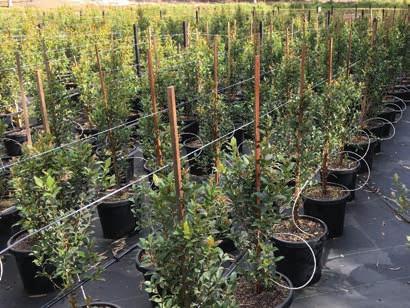

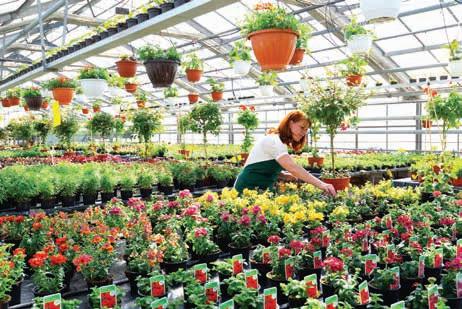
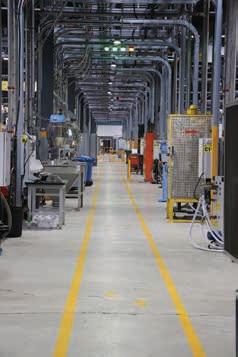



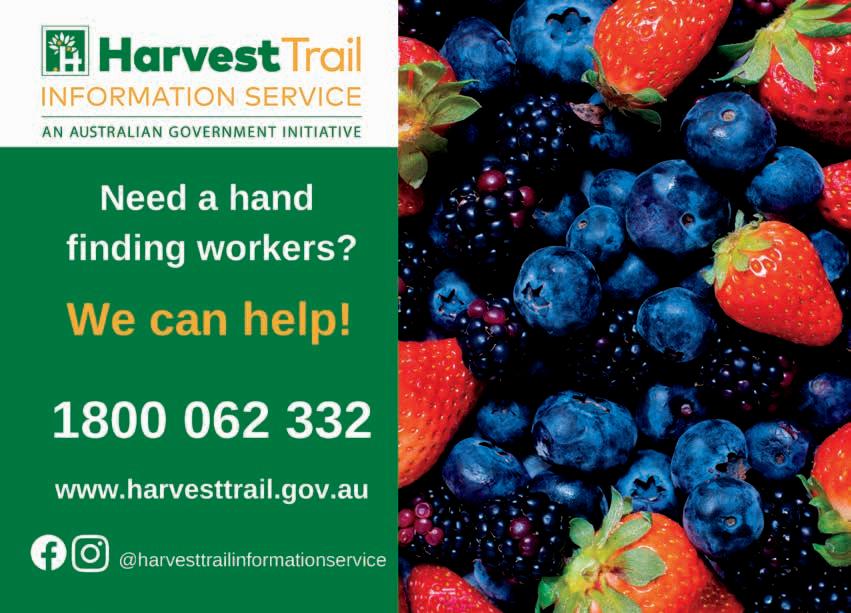
spray dry application fertigation consumables inventory management www.abcsoftware.co.nz +64 6 845 0068 hello@abcsoftware.co.nz FREE 45-DAY NO-OBLIGATION TRIAL Online Spray Diary Information automation made easy One digital diary for all agrichemical applications Auto-calculation of rates, nutrients, withholding periods Chemical and stock inventory management Compliance-ready reproducible reports Mobile-friendly for use on any device with a data connection Enter information once, use it everywhere Data security with cloud storage Integration with ABCgrower labour management software Simple efficient record keeping Scan to learn more
How are you performing?
Bryn Edwards, vegetablesWA & Building Horticulture Business Capacity Program Project Lead
The annual WA Vegetable Industry Benchmarks have been published for the Financial Year 2021-22. Produced by the Building Horticulture Business Capacity Program, the WA vegetable industry now has six years of industry data, demonstrating consistent trends to draw on.
FY2021-22 saw the start of a significant rise in input costs together with labour cost and availability issues. Overall, while industry average performances were generally solid across FY2021-22, there has still been a variety of results. There is also a deeper concern relating to the impact of the rising cost environment for those who haven’t put in the groundwork to control the costs within their business.
Comparing results of the average producer for FY2021-22 to the previous year, expenses increased about $12,000/ha. However, income increased by about $17,5000/ha to produce a $115,000/ha income, which gave growers an average profit of $29,662/ha.
Focusing on the most profitable growers in FY2021-22, while the top 25% spent about $13,000/ha more on expenses than the average producer ($157,743/ha), they were able to generate 37% ($42,700/ha) more income from that spend, which translated into $30,000/ha more profit ($59,334/ha) than the average producer (Figures 1 & 2).
Looking back, the top 25% profitable vegetable growers managed to control expenses to a similar level to the previous year but returned about $8,500/ha more in income and therefore profit.
Often the yield across most of the participating growers was relatively similar, however what differentiated the top 25% was greater levels of saleable yield, which transferred into greater levels of income and then profit. More profitable growers were able to maintain a clear line of sight across all spend, in particular labour and chemicals (Figures 3 and 4), through to saleable yield and therefore income into their business.
There is a growing concern about the results of the bottom 25% of profitable growers. Within this group, profit per hectare for FY2021-22 significantly increased nearly five times from the previous two years ($16,821/ha), yet was still below the industry average (Figure 5).
On the surface, increased profits are always a positive result. However, it was a function of a doubling in expenses ($105,472/ha) that was met by a dramatic rise in income ($122,293/ha). Note: expenditure for the bottom 25% was larger than the average and top 25% producers.
Whether this was a conscious decision or passive consequence of market forces is unclear, however there is concern going into the current FY2022/23 with known continued expenditure rise, whether the general vegetable market will continue to increase prices for produce and whether growers will therefore meet the cost of production. If not, margins will erode impacting equity levels.
The average equity position for FY2021-22 in the vegetable industry was 79%, with the top 25% being significantly higher at 94% (Figure 6). Both are strong positions that can assist businesses to survive shocks such as negative surplus (deficit) caused from production, market influences or pricing catastrophes.
The FY21-22 benchmark findings from the WA vegetable industry are out: this article reveals how the vegetables industry is responding to changing economic circumstances, and draws some useful lessons for berry growers.
The key differentiator between the top 25% profitable growers and the average was saleable yield.
38 BERRY AUSTRALIAN JOURNAL WINTER 2023 EDITION 15 INDUSTRY
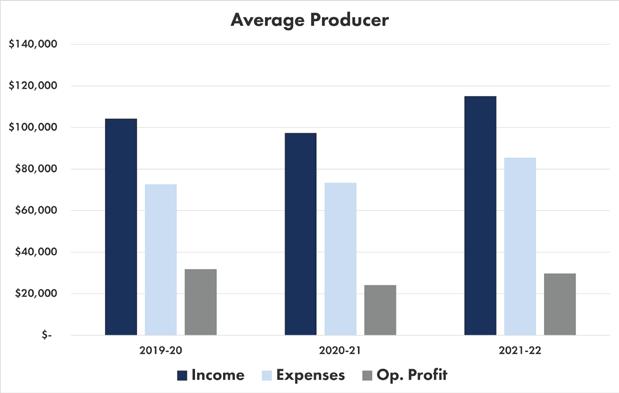
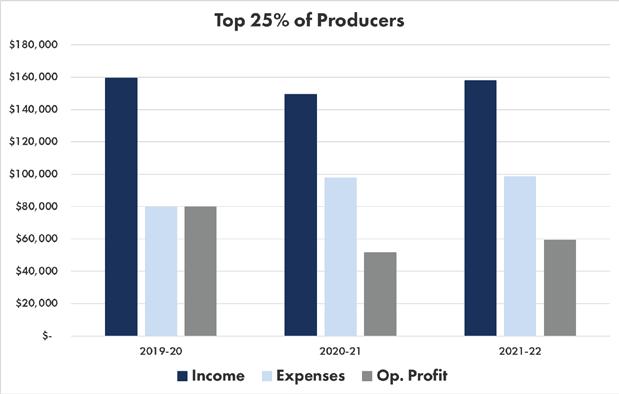 Figure 2. The benchmarking data for the ‘Average Producer’ over the last 3 years.
Figure 2. The benchmarking data for the ‘Average Producer’ over the last 3 years.
39
Figure 1. The top 25% of Producers compared across the last 3 years.
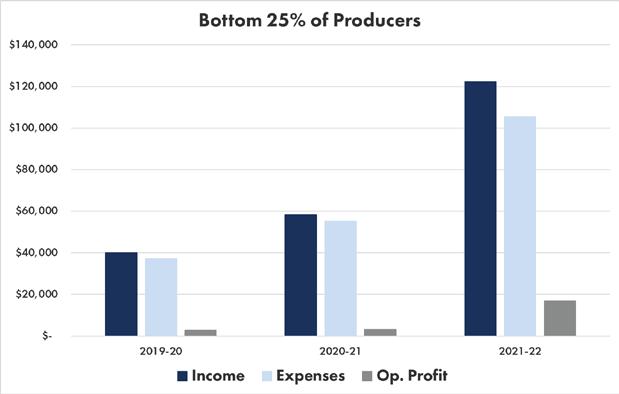
2019-20 2020-21 2021-22 Top 25% $21,180 $30,306 $34,482 Average $26,086 $26,436 $30,723 Bottom 25% $14,793 $21,425 $44,309
2019-20 2020-21 2021-22 Top 25% $1,450 $4,004 $9,468 Average $2,468 $2,298 $5,358 Bottom 25% $1,030 $2,053 $3,743
Figure 3. Labour Expenses Per Hectare.
Figure 4. Chemicals Expenses Per Hectare.
40 BERRY AUSTRALIAN JOURNAL WINTER 2023 EDITION 15
Figure 5. The benchmarking data for the Bottom 25% of Producers over the last 3 years.
The bottom 25%, however, is at a worrying 50%, which is a more vulnerable position. If in the current FY2022-23 this cohort does struggle to secure income to meet the known rising input costs, there could be significant impact to the underlying stability within these businesses.

There is also an additional wider concern in the findings. The data collected to produce the benchmark results is gathered from the participants of the Building Horticulture Business Capacity Program.
As part of participation, all growers have worked closely with farm management consultants Planfarm for some time to analyse the performance of their businesses and take the necessary action to maintain or improve margins and profitability.
With this context in mind, it is a possibility the findings of both the top 25% and the average producers point to a ‘leading group’ within the industry and the findings of the bottom 25% are a truer reflection of the wider industry beyond the participating growers.
Between these general findings and what is already known about economic conditions in the current financial year, now more than ever there is a need for all vegetable business owners to be clear and upto-date on the details of the cost structure, cost of production and required margins of their vegetable businesses in order to remain profitable and resilient.
Cost cutting is less of an option given the input rise environment that faces the industry. As mentioned above, all spend needs to have a ‘clear line of sight’ of contribution to saleable yield and therefore income for the business.
Similar to the previous year, other key areas that separate the top 25% from the rest and can be easily adopted are:
• Market access and relationships with buyers/ customers – assessing markets and determining which best suits your product, location and timing of sales. Producers who have good relationships with their customers or buyers often have greater scope for negotiating pricing, which is vital in the current environment of rising costs.
Figure 6. The average equity position across the last 3 years
41
• Focus on a limited range of products –less is often more. Results showed that keeping the business simple and consistent correlated with higher profitability.
• Business focus – a persistent inclination to look more deeply into the business, rather than being in the business, and challenge everything.
It is strongly recommended to all vegetable business owners to spend some time comparing the performance, spend and income of their own business against the available data to identify in which cohort your own business is performing.
Alternatively, if you wish to undertake a detailed analysis into your own business and access professional support, then please contact Bryn Edwards at vegetableswa or Paul Omodei at Planfarm, or click on to www.buildingwahorticulture.com.au to check out the program.
The Building Horticulture Business Capacity Program is funded by The Department of Primary Industries and Regional Development, Hort Innovation Frontiers Leadership Funds and the Agricultural Produce Commission pome and vegetables sub-committees.
More information contact:
Bryn Edwards
bryn.edwards@vegetableswa.com.au 0417 409 821
Whilst we fully acknowledge that this data is vegetable focussed, all of these metrics apply to any business in any sector of horticulture. We would recommend every berry grower starts by looking at their own metrics to see how they compare with these benchmarks.
You can access a series of guides that will help you to calculate your own results for each measure in your business at vegetableswa.com.au/drive-profitability
Welcome Jolyon
National Farmers’ Federation (NFF) Horticulture Council new Chair named as Jolyon Burnett
Jolyon Burnett brings a wealth of experience to the role, having held a range of executive and governance positions in a horticultural career spanning four decades. Jolyon is currently a director of the NSW North Coast Local Land Services and Santos Organic, a small organic retailer in northern NSW. His previous role was as CEO of the Australian Macadamia Society until 2022.

The NFF Horticulture Council is the preeminent forum for deliberating and forming policy concerning our national horticulture industry. It was established in 2019 and is now comprised of 21 national community and state peak horticulture bodies – including Berries Australia - who together represent the full breadth of an incredibly diverse industry.







The Council develops policy positions on common issues of national importance to the horticulture sector such as trade, workforce, biosecurity, sustainability, markets and competition, R&D, telecommunications and infrastructure.
Jolyon will officially assume the position of chair on 1 July 2023 for an initial term of three years.
42 BERRY AUSTRALIAN JOURNAL WINTER 2023 EDITION 15
Ultrasol®ine K Plus contains two macronutrients for plants; potassium and nitric nitrogen and in addition the micronutrient iodine
Ultrasol®ine

Plus in fertigation in berries

K
Most agricultural top soils and irrigation water contain very low concetrations of iodine
Deficiency in crops can occur when the iodine concentration in irrigation water is below 1 µmol/L. Iodine deficiency is endemic in Australia: 94% (32 out of 34) of irrigation water samples from 17 crop production areas, contained less than 1 µmol/L of iodine. Rain, dam and river water contain little iodine, but bore well water iodine is highly variable, ranging from 0 (not detectable) to an exceptional 2.5 µmol/L.
Analyses of the native concentration of iodine in irrigation water prior to use of Ultrasol®ine K Plus is recommended to prevent potential yield loss or quality defects, due to iodine deficiency.
Application of Ultrasol®ine K Plus in the nutrient solution increased yield, brix, fruit size and calcium concentration in fruits of blueberry and raspberry

Recommendation for use:

Ultrasol®ine K Plus should be applied with fertigation as a source of potassium and nitric nitrogen in the nutrient program. To see the benefit of Ultrasol®ine K Plus a total application of 350 to 500 kg/ha, divided over frequent applications in the crop cycle, is recommended. Ultrasol®ine K Plus is a component of the 4R nutrient stewardship principles.
For more information contact: spn-pacific@sqm.com
Please scan for further details Rain water Rain Town Return NFT Dam Town water Channel Bore Water source: State: Dam Bore No. samples: River Treated sewage Bore Bore Town water River Dam Channel Dam NSW QLD SA VIC WA 1 0.9 0.8 0.7 0.6 0.5 0.4 0.3 0.2 0.1 0.0 1 1 1 2 2 1 4 2 1 1 1 5 3 2 1 3 1 2 0.1 0.2 0.2 0.6 0.8 0.1 0.1 0.1 0.2 0.1 0.3 1 0.1 0.1 0.0 0.0 0.0 0.0 Average concentration of iodine in irrigation water µmol/l
Yield 12 MT/ha 13 MT/ha Ca2+ /100g fruit DM 48 mg 82 mg Brix 6.1 7.1 Ca2+ /100g fruit DM 19.4 mg 20.6 mg Potassium nitrate only Crop Ultrasol®ine K Plus sqmnutrition.com sqm.com Benefits
Iodine is needed for Root growth, defense from stress and calcium signaling Timely flowering and fruit production Photosynthesis and sugar production = increased biomass Plants need iodine 48 genes in shoots and 531 genes in roots are uniquely regulated by iodine in the nutrient solution At least 82 proteins in leaves and roots contain iodine Figure
1. Iodine mapping in irrigation water in Australia – concentrations of iodine found in 34 samples of irrigation water collected from 20 crop production areas in 5 states of Australia.
Better pollination knowledge can grow better berries
Romina Rader, Jeremy Jones, Karen C.B.S. Santos, Lena Schmidt, Jelena Preradovic, Blake Dawson, David J. Perović & Abby Davis - School of Environmental and Rural Sciences, University of New England
Maurizio Rocchetti, Jessica Scalzo & Bar Shermeister - Costa Group Exchange
Melissa Broussard, Brian Cutting & Lisa Evans - New Zealand Institute for Plant & Food Research
Crop and varietal data to better understand the importance of pollination (PH20001) is an investment in the Hort Frontiers Pollination Fund. Hort Frontiers is the strategic partnership initiative developed by Hort Innovation.
• The relationship between crop pollination, fruit quality, and yield is the result of the interaction between insect pollinator and crop plant biology
• The type of pollen transferred from an insect can vary in importance depending on how much the plant needs insects to move its pollen
• All crop cultivars exist somewhere along a gradient of low to high pollinator dependency
Berry growers across Australia all strive for abundant yields of high-quality berries, and insect pollination is an important component of crop production to achieve this goal. Crop pollination outcomes can be influenced by farm management practices and environmental variables, but fundamentally, the relationship between crop pollination, and subsequent fruit quality and yield is the result of the interaction between insect pollinators (e.g. bees, flies, ants) and crop plant biology.
The two key biological factors that drive this interaction are
(1) pollinator efficiency — a measure of an insect’s ability to transfer suitable pollen to a crop flower, and
(2) pollinator dependency — a measure of how much a crop type benefits from insect pollination for yield.
These two factors shape crop pollination outcomes in every orchard, which often have mixtures of crop types and insect pollinators. An understanding of these biological interactions between crops and pollinators is important for pollination management in berry horticulture, as these factors can inform many aspects of crop production, such as crop layout, cultivar co-plantings, pollinator selection, and hive density.
Insect pollinators can be introduced to crop fields to perform pollination services (e.g. managed honeybees) or naturally live within or near crop fields (e.g. wild hoverflies). Each type of insect pollinator, for example, honeybees, native bees or flies, has a unique set of features that influence their ability to transfer suitable pollen between flowers and pollinate a crop. These features may include body size, hairiness, and behaviour, among others.
Some insects (such as honeybees and Eristalis tenax flies) have large, hairy bodies, which provide a high surface area to carry pollen grains and are therefore very effective at moving pollen around, especially if they are attracted to crop flowers. Yet not all insects are attracted to all flowers and in particular, some are less attractive to particular pollinators, and this can impact their visitation rate.
Flies and other insects can also move pollen between crop flowers, and may sometimes they can pollinate more effectively in conditions where bees do not perform well, such as cold weather or intensive growing systems. Additionally, where the insect has
44 BERRY AUSTRALIAN JOURNAL WINTER 2023 EDITION 15 INDUSTRY
been before it arrives at a crop flower is also important as it needs to be carrying berry pollen before it visits another berry, and some pollinators may vary in this behavioural trait. Most of the time, flowers receive a mix of different visits from different pollinators so the resulting pollen loads on the flower can be a complex mix of pollen from previous visits as a result of different insect behaviours.
Since pollination is an interaction, we also need to know how reliant the plant is on the insect. This is where pollinator dependency comes in.
The type of pollen transferred from an insect can vary in importance depending on how much the plant needs insects to move its pollen. Often, plants that are highly dependent on pollination by insects achieve the best yields and fruit quality when the pollen received is from a different cultivar (cross-pollination).
This is especially true for Rabbiteye blueberry varieties, which will often set few or very small fruit if they only receive pollen from their own cultivar. This means their pollinator dependency is HIGH, as pollen has to be transferred between plants of different cultivars.
Other blueberry cultivars, such as Snowchaser, still produce good yields without the pollen from other cultivars, but these plants require pollen to be moved by insects within or between flowers of the same plant (self-pollination), so their pollinator dependency is MEDIUM-HIGH.
Yet other cultivars, such as Arana, can produce a modest yield of large berries without any movement of pollen at all (parthenocarpy). These cultivars have a LOW pollinator dependency.

All berry crop cultivars exist somewhere along a gradient of low to high pollinator dependency, but most benefit from insect-mediated pollination.
To test where crop cultivars rank on the gradient of low to high pollinator dependency, experiments need to be conducted that compare the fruit set, fruit weight, or other fruit quality metrics. This is tested when flowers are bagged to exclude pollinators compared to when pollination is provided by insects or by hand.
Research into pollinator dependency of crops is important, as the level of pollinator dependence, and how it operates to affect yields, can have real management implications for crop production.
45
Field work identifying pollination in raspberries. Photo credit: Jeremy Jones
For example, quantifying how much a crop benefits from cross-pollination can provide insights into how the crop field should be planted, which complementary cultivars are most suitable for cross-pollination, and how they should be arranged in rows to best facilitate the movement of pollen by insects.
Identifying which cultivars have low or high pollinator dependence may inform beehive stocking density and placement around farms to enhance insect pollinator activity where it is most needed.
Understanding which insects visit berry flowers under what conditions (e.g. low to high temperatures, under protective cropping covers, etc.), where they are collecting pollen from, and how to keep them happy in orchards, are also critical research questions for berry quality and yields .
There are some studies that show that a given number of flower visits is sufficient to meet the pollination requirements of a crop to form a perfect fruit. However, when you consider that this ‘number of visits’ value will differ for each cultivar and each insect pollinator species, the number of visits to produce a perfect fruit will also vary with insect activity at different temperatures and will change with whatever is flowering around the crop, there is still a lot of work to be done for future research to better understand all these factors in combination.
While we often assume we already know a lot about pollination, there is so much that is still unknown. Pollinator efficiency, response under different environmental and management conditions, and how they interact with other insects are all still important questions we need to consider.
As new cultivars are always being developed, we need to understand which cultivars perform best in which climates and planting arrangement and with which insects and management conditions.
More research concerning plants and the insects that visit their flowers will help to nurture beneficial insect activity in orchards and ensure our growing systems are resilient to future change in pollinator populations, climate and management system.

Acknowledgements
This research is supported by Horticulture Innovation Australia PH20001 Crop and varietal data to better understand the importance of pollination, a collaboration between Plant & Food Research, Griffith University, the University of New England and Western Sydney University.
Extra reading
Liam K. Kendall, Vesna Gagic, Lisa J. Evans, Brian T. Cutting, Jessica Scalzo, Yolanda Hanusch, Jeremy Jones, Maurizio Rocchetti, Carolyn Sonter, Matthew Keir, Romina Rader (2020). Self-compatible blueberry cultivars require fewer floral visits to maximize fruit production than a partially self-incompatible cultivar. Journal of Applied Ecology. Volume 57, Issue 12. https://doi.org/10.1111/1365-2664.13751
Mark A Hall, Jeremy Jones, Maurizio Rocchetti, Derek Wright, Romina Rader (2020). Bee Visitation and Fruit Quality in Berries Under Protected Cropping Vary Along the Length of Polytunnels. Journal of Economic Entomology, Volume 113, Issue 3, June 2020, Pages 1337–1346. https://doi.org/10.1093/jee/toaa037
Stingless bee pollinating a blueberry flower.
Photo credit: Lena Schmidt
46 BERRY AUSTRALIAN JOURNAL WINTER 2023 EDITION 15
AI can track bees on camera. Here’s how that will help farmers
Malika Nisal Ratnayake (Postdoctoral Research Fellow, Faculty of Information Technology), Adrian Dyer (Associate Professor) & Alan Dorin (Associate Professor, Faculty of Information Technology), Monash University
This article is republished from The Conversation under a Creative Commons license. Read the original article online at bit.ly/ABJ-AI-Bees
Artificial intelligence (AI) offers a new way to track the insect pollinators essential to farming. In a new study, we installed miniature digital cameras and computers inside a greenhouse at a strawberry farm in Victoria, Australia, to track bees and other insects as they flew from plant to plant pollinating flowers.
Using custom AI software, we analysed several days’ video footage from our system to build a picture of pollination behaviour over a wide area.
In the same way that monitoring roads can help traffic run smoothly, our system promises to make pollination more efficient. This will enable better use of resources and increased food production.
A fresh set of eyes
With a growing human population and limited natural resources, food production needs to become more efficient and sustainable. Precision agriculture powered by new technologies, like AI, can help secure future food production.
Efficient pollination is crucial to produce healthy fruits, vegetables, legumes and nuts.
Optimal pollination requires just the right number of insect pollinator visits to flowers. Too few or too many visits, or visits by ineffective insect pollinators, can diminish the quality of food a flowering plant produces.
Typical techniques for monitoring insect pollination use direct visual observation or pan trapping, which are labour-intensive and take many days.
Additionally, without a very large number of trained observers it is impossible to collect simultaneous data across large farms. Yet such data are needed to provide time-critical evidence of the extent of crop pollination, before a season’s pollination window is closed.
With our digital system, however, a farm manager could obtain same-day data on crop pollination levels.
How fine-grained analysis of insect pollinator movement enables better food production.
Our pollination monitoring system was set up at Sunny Ridge farm in a strawberry greenhouse open to insects. The array of cameras monitored insect activity among the strawberries, recording honeybees, hover flies, moths, butterflies and some wasps. (Figure 1)
Managing big (insect) data with advanced software
The volume of data our system collects requires custom software to reliably track individual insects flying among complex foliage.
A key issue our software overcomes is identifying insect movements within a video sequence, so an individual insect on a single path isn’t accidentally counted multiple times. This enables accurate assessment of the number of insects in a region during a day, an analysis of their type (e.g., species), and monitoring of their flower visits.
47 INDUSTRY
To see a video of tracking honeybees on strawberry plants, go to www.youtube.com/watch?v=BytEkJ9Q13k&t=15s
Our custom software uses a hybrid detection model to detect and track insects and flowers in videos. This model combines the AI-based object-detection capabilities of deep learning using a convolutional neural network, together with separate foreground detection algorithms to identify the precise positions of insects and the flowers they visit in the recorded videos.
The software includes features to make data processing more efficient and save on computer power.
The insect paths our software produces are computed using a method called the Hungarian algorithm.
This examines the positions of insects in each video frame in a sequence, and enables the identification of a match between the locations of the insects across a sequence of video frames.
By recording and visualising these paths, we gain an understanding of insect behaviour and the efficiency of pollination in a greenhouse.
Strawberries produce quality fruit after a minimum of four insect visits to an individual flower. Too many visits can actually damage flowers and reduce fruit quality.
 Figure 1. Video capture units placed over strawberry plants. Photo credit: Monash University
Figure 1. Video capture units placed over strawberry plants. Photo credit: Monash University
48 BERRY AUSTRALIAN JOURNAL WINTER 2023 EDITION 15
Which insects drive pollination?
Honeybee flower visits were recorded more frequently in the monitored area than visits by other insects. Our analysis showed 68% of recorded flowers received the minimum number of four insect visits required for full fertilisation during the monitoring period.

While honeybees contributed the most to pollination, visits by other insects often resulted in individual flowers achieving the desired threshold of four visits, potentially improving the crop yield. (Figure 2)

By detecting the numbers, types and timing of insects needed for optimal pollination, our monitoring system provides farmers the evidence they need to inform decision-making. (Figure 3)
For example, knowing the extent to which a crop has been pollinated allows growers to alter hive locations and numbers to boost pollination shortfalls. Farmers might also open or close greenhouse sidewalls to encourage or discourage insect visits from particular directions. They may decide to add attractant flowers to entice insects to explore crop regions that have been inadequately visited.
These simple interventions can ensure a higher rate of pollination success, and a higher yield of market-quality fruit. Smart insect management like this promises to help meet the need to feed a growing population with healthy produce.
Figure 2. Insect counts, tracks and flower visits reported at three sample locations at our field site. Bar charts above the plots indicate the number of tracks and total number of flower visits for each insect type. Track colours represent different insect varieties. Flower locations are indicated by blue circles. (Syrphidae includes hoverflies, Vespidae includes some wasps, Lepidoptera includes moths and butterflies). Ratnayake et al., 2022.
49
Figure 3. Contribution of different insect types towards strawberry pollination. Bar chart shows percentage of flowers visited by each insect type at three sample locations at our field site. The dark grey portion shows the percentage of flowers with over four (number of visits required for strawberry flower fertilisation) from each insect type. The red dashed line in the plots show the total percentage of flowers with more than four visits in a location. Ratnayake et al., 2022.
References
Ratnayake, M.N., Amarathunga, D.C., Zaman, A., Dyer, A.G. & Dorin, A. Spatial Monitoring and Insect Behavioural Analysis Using Computer Vision for Precision Pollination. Int J Comput Vis131, 591–606 (2023). https://doi.org/10.1007/s11263-022-01715-4
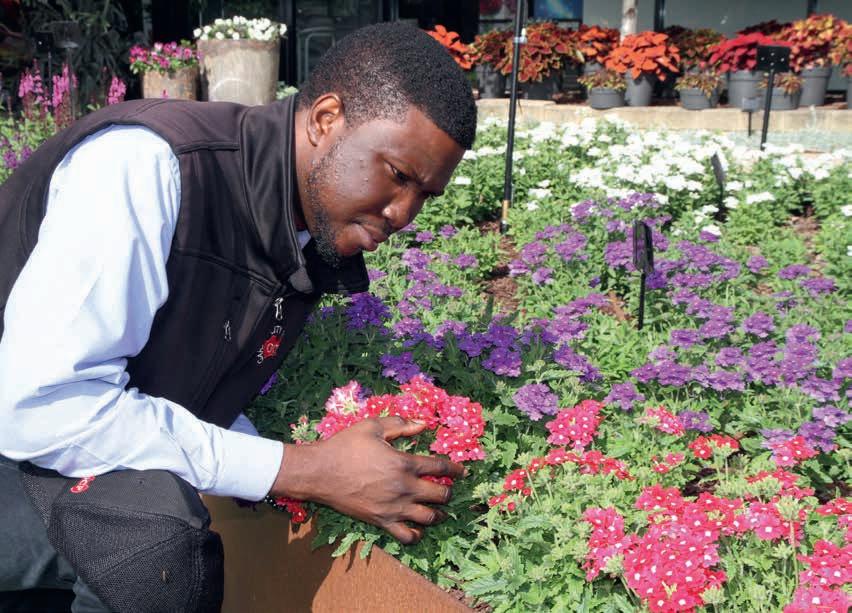

Disclosure statement
Adrian Dyer receives funding from the Australian Research Council.
Alan Dorin receives funding and/or support from the Australian Research Council, AgriFutures, Costa Group, Australian Blueberry Growers Association and Sunny Ridge berries.
Malika Nisal Ratnayake does not work for, consult, own shares in or receive funding from any company or organisation that would benefit from this article, and has disclosed no relevant affiliations beyond their academic appointment.
Elite Tunnels is an established British manufacturer and global supplier of field-scale multi-span polytunnels, substrate gutter growing systems, and ancillary parts.

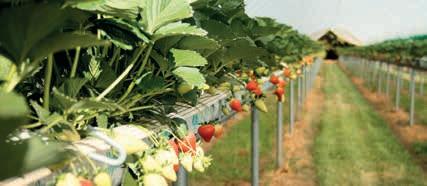

For projects of any scale, our family-run business will professionally handle your order – with a personal touch!
We hold stock of a variety of ancillary parts, including:






C-clips • hinge-clamps

sheeting-rope • rope-pullers

We also stock ample rolls of plastic.
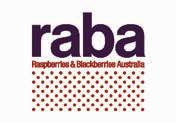
We are proud to be associated members of: Our materials are proudly UK and EU sourced. www.elitetunnels.com Ross Watt ross@elitetunnels.co.uk Mobile: +44 (0) 7841 532 652 Office: +44 (0) 1356 648 598 Australian agent Ray Vallett rvallett@tapexhortgroup.com.au Mobile: +61 458 727 397 WE VE GOT YOU COVERED
Visit our NEW website to see details of our products and view drone footage of our Australian polytunnel projects!
Health and nutrition information for the berry industry (MT21000)
Jutta Wright, Project Manager, Nutrition Research Australia
The Nutrition Research Australia (NRAUS) team are currently halfway through the 2-year strategic levy investment project, Health and Nutrition Information for the Berry Industry (MT21000), which is an investment under the Hort Innovation the Blueberry, Raspberry and Blackberry Funds.
In the past six months they have been busy with the development of collateral and kicking off the communication and educational phase of the project, which included development of infographics and an exclusive online event for healthcare influencers.
In an increasingly digital world, many nutrition key opinion leaders (KOLs) are increasingly communicating their views via the social media platforms. These healthcare influencers were considered a key strategic communication group to target and educate for this project.
Whilst many consumers are followers of these healthcare influencers, using them to gain direct credible nutrition education, they are also followed by fellow healthcare professionals who utilise them to keep up to date with credible information.
Educating this group not only helps get the message out, but also provides the important credibility that a healthcare professional provides.
The #Berrywelltribe online KOL event was undertaken in December 2022. The event featured celebrity cook and award-winning author Alice Zaslavsky and global health and wellbeing expert Dr Flav co-presenting from Alice’s kitchen in Melbourne, Victoria. While the one-hour event was pre-scripted to deliver specific messages, it was delivered in a free-flowing, interactive and ‘unscripted’ way with attendees able to openly engage with the presenters via the zoom meeting platform.
Attendees were educated on the unique nutritional delivery of each of the four berries (blackberry, blueberry, raspberry, strawberry), their unifying standout content of a particular bioactive, called polyphenols and their health benefits. They also learnt fun facts and practical culinary nutrition tips and tricks to preparing and eating, to provide inspiration for client recommendation. The event was an overwhelming success with 100% of attendees rating the event as ‘excellent’ or ‘very good’.

52 BERRY AUSTRALIAN JOURNAL WINTER 2023 EDITION 15 INDUSTRY
To support the event, infographics were developed and bundled together with linked social tiles as part of the KOL digital influencer kit for the attendees to share with their followers post the event.



Three infographic brochures were developed, reflecting the content shared with attendees at the event including, “Berry nutritious” showcasing the unique nutritional attributes of each berry type (blackberry, blueberry, raspberry and strawberry), preparation tips and growing practices, “Berry polyphenol” educating on emerging research supporting significant health benefits of polyphenols, a key bioactive compound in plant foods, with berries being one of the highest dietary sources and, “Berry healthy” providing a snapshot of berry health effects. These resources will be also shared throughout the rest of project at upcoming educational events.


The team are currently working on developing factsheets that provide more detailed information on the current research along with client-friendly versions to support their practice that will be disseminated at the upcoming annual 3-day Dietitians Australia Conference being held in Melbourne in July.























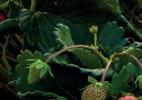












A new dawn. A
standard. There’s a new dawn in fungicide technology, powered by Miravis® Call your Syngenta representative today. www.syngenta.com.au/miravis-prime ®Registered trademark of a Syngenta Group Company. © 2023 Syngenta. AD21-305 IS YOUR CROP PROTECTED? SCAN HERE
new
Bees support bountiful berry production
Plant Health Australia
MT21008 National Bee Pest Surveillance Program (NBPSP) is funded by Hort Innovation using research and development levies of 14 horticultural industries, with significant co-investment from states and territories and contributions from the Australian Honey Bee Industry Council, Grain Producers Australia and the Australian Government. The NBPSP is coordinated by Plant Health Australia and delivered by states and territories.
Healthy bees are a valuable contributor to big, bold, bountiful berry yields, supporting Australia’s Rubus and strawberry industries with cross-pollination.
Raspberry, blackberry and hybrid brambles (including silvanberries, boysenberries, loganberries) are collectively referred to as Rubus or cane berries. Raspberry and blackberry cultivars range from completely self-fruitful (can produce fruit from their own pollen) to completely self-unfruitful (cannot produce fruit from their own pollen). Though 80% of strawberry fruit production is due to gravity and wind as the flowers are self-fertile, pollinating insects play an essential role in reducing deformities, and producing larger fruit size.
Pollination from honey bees, native bees and other pollinators can increase yield as well as fruit quality when present in a berry crop during flowering (MacInnis & Forrest, 2019, Keogh et al. 2010).
For raspberry and blackberry fruit size, shape and numbers are good measures of the degree of pollination. For strawberries the benefits of pollination can be seen in the fruit set and fruit size.
A study in Victoria found that loganberries roughly doubled in farm gate value with pollination of honey bees, compared to the non-honey-bee-pollinated fruits (Langridge & Goodman, 1985).
Healthy bees are key to healthy berries. Australia has one of the healthiest bee populations in the world, due to our geographic location, a world-class biosecurity system and programs such as the National Bee Pest Surveillance Program (NBPSP).
The NBPSP has been coordinated by Plant Health Australia (PHA) for the past 10 years however bee pest surveillance in Australia has been underway for over two decades with the first sentinel hive inspections occurring in the late 90s. The current version of the program has been running for the last 12 months.
The NBPSP is funded by Hort Innovation through 14 pollinator-reliant industries, with co-investment from the Australian Honey Bee Industry Council (AHBIC), and Grain Producers Australia (GPA).
The NBPSP is an early warning system that uses a range of surveillance methods at seaports and airports throughout Australia, considered to be the most likely entry points for bee pests and pest bees. Surveillance at additional ports is provided through in-kind contributions by state and territory governments.
The detection of Varroa mite in June 2022 in NSW, shows the value and success of years of preparedness and surveillance activities in the NBPSP. This detection highlights years of dedicated work by jurisdictions and the ongoing investment by industries such as Rubus and strawberries in supporting early detection projects.
54 BERRY AUSTRALIAN JOURNAL WINTER 2023 EDITION 15 INDUSTRY
Various surveillance techniques such as sentinel (live) hives for pests and diseases, catchboxes to capture swarms, rainbow bee-eater pellet analysis, and aerial pheromone ballooning to pick up new species of bees, and sweeping flowering plants with nets to capture any foraging bees near ports.
Rubus and strawberry growers can be instrumental in reporting any unusual plant or bee pests and diseases themselves, through the Exotic Plant Pest Hotline (1800 084 881). Early reporting increases the chance of effective control and eradication.

Ensuring the longevity and continued success of the NBPSP is pivotal in safeguarding the honey bee industry and those industries that benefit from honey bee pollination. Securing ongoing support to the NBPSP will be a focus as the project continues towards conclusion in December 2024.


Bibliography
Langridge, D. F., & Goodman, R. D. (1985). Honeybee pollination of loganberries (Rubus loganobaccus L.H Bailey). Australian Journal of Experimental Agriculture, 224-226.
MacInnis, G., & Forrest, J. R. (2019). Pollination by wild bees yields larger strawberries than pollination by honey bees. Journal of Applied Ecology, 824-832.
Robert C Keogh, Robinson, A. P., & Mullins, I. J. (2010). Rubus production in Australia Introduction. Retrieved from AgriFutures: https://agrifutures. com.au/wp-content/uploads/publications/10-137.pdf


55
Mark Page NSW DPI Bee Biosecurity Officer Surveillance. Photo credit: NSW DPI
Something NEW is Coming...
Group H o r t icu l t u r e ®
Wanted — Raspberry & Blackberry growers!
Michele Buntain & Dr Stephen Quarrell, Tasmanian Institute of Agriculture Greg Lefoe, Agriculture Victoria
‘RB21000: Integrated pest management approaches to address pest challenges in raspberry and blackberry’ has been funded by Hort Innovation, using the raspberry and blackberry research and development levy and contributions from the Australian Government.
The new five-year Rubus Integrated Pest Management program needs you! This research program aims to help growers manage and prevent pest outbreaks by using improved and potentially new integrated pest management (IPM) tools and strategies.
The first stage is ready to roll and involves gathering information from growers about their crops. Project lead, Dr Steve Quarrell, Tasmanian Institute of Agriculture (TIA), says getting good baseline information is crucial.

“We know from past experience that understanding how growers currently manage pests, and learning about the environment around their crop, helps us develop practical strategies that work.
With redberry mite in blackberries, we found our talks with growers about their pest management program helped us to step back and see the big picture. We were then able to tweak the pesticide program allowing redberry mite predators to better establish in the crop. Our chats with growers also revealed that redberry mite was hiding out in wild blackberries close to many crops and this was a source of reinfestation, but also of potential predators,” he said.
In addition to the grower survey, there will also be an ongoing crop survey.
The hunt for new biological control agents for Rubus pest management will start with an on-ground survey of Rubus crops and their surrounds. This physical scan of both pests and predators is a great way for growers to get a little more information about what’s living in and around their crops.
Agriculture Victoria entomologist Greg Lefoe leads the program’s biological control research and is excited to uncover the potential of new and untested natural enemies. One example is the parasitoid, Trichopoda giacomellii. This little parasitic fly was originally released by CSIRO scientists in Northern NSW for green vegetable bug control, but its current distribution is not known.
Biological control research lead, Greg Lefoe.
57
Photo credit: Agriculture Victoria
RUBUS
In addition to this, we also want to understand how well commercially available predators control emerging pests such as broad mite and raspberry leaf and bud mite, and if there could be natural endemic enemies of these pests, Mr Lefoe said.


The team are calling on all raspberry and blackberry growers to register for both the grower and crop survey.


We would love to hear from you! You can express interest by contacting:
Berries Australia Rubus IDO: Mark Salter berryido@fruitgrowerstas.org.au
0400 100 593
Rubus IPM Extension: Michele Buntain michele.buntain@utas.edu.au
0429 957 975
Dr Steve Quarrell inspecting a blackberry crop for predators. Photo credit: Tasmanian Institute of Agriculture
Brown lacewing larvae feed on eggs and soft bodied insects like aphids and whitefly. Photo credit: Denis Crawford
Orius ‘Pirate Bug’ and thrip predator.
58 BERRY AUSTRALIAN JOURNAL WINTER 2023 EDITION 15
Photo credit: Denis Crawford
Opportunities to improve labour use efficiency through automation and improved management practices
Ky Snyder, Project lead & Scott Needham, Partner: Growth Drivers TGD
Rubus growers in Australia face numerous challenges when it comes to optimising their labour use and ensuring the sustainability of their operations, but innovative solutions may be available sooner than you think.
Like many other fruit crops, managing labour costs is a key focus for Australian Rubus growers. However, the high perishability and fragility of Rubus berries makes labour and cost management a particularly challenging task.
To address this issue, an industry-led initiative funded by Hort Innovation’s raspberry and blackberry fund and spearheaded by The Growth Drivers (TGD), has been working on discovering “opportunities to improve labour use efficiency through automation and improved management practices” (RB21003).
TGD helped growers articulate the complexity of the labour issues and the requirements of new technologies or processes to meet their needs. Project lead, Ky Snyder, says that together with a number of growers TGD were able to describe these labour issues and how they occur in five main contexts.
• Picking activities
• Non-picking activities
• Row and fruit quality assurance
• Crop presentation
• Cane selection
By understanding the jobs to be done in these stages of production, the TGD team were able to focus on assessing the success potential of new technology and process change options. The team assessed over 20 different technology options, and working closely with growers they were able to identify those options that were of the highest interest.
1. Data empowered resource planning and deployment:
A potential adaptation of the existing data capture and analysis tool, Bitwise, already available to raspberry and blackberry growers, to support resource deployment decisions for various on-field tasks e.g. crop presentation, sucker removal, and identifying pests and diseases.
2. Advanced recruitment assessment:
Utilising specialised assessment tools to evaluate physical attributes, hand-eye coordination, peripheral perception and psychological fit during the recruitment process can decrease hiring risks and accelerate the proficiency of new pickers, ultimately benefiting growers.
3. Computer vision quality assessment:
Innovative technology using machine learning algorithms and computer vision quality assurance enables farmers to quickly and accurately grade fruit in the field, reducing costs associated with manual grading, increasing throughput, minimising waste, and improving decision-making.
4. Autonomous collaborative robots (ACR):
Collaborative robots are increasingly being recognised as the future of agriculture in Australia. Offering improved efficiency and reduced labour costs by eliminating the need for farmhands to transport picked fruit and collect supplies, potentially saving up to 20% in labour costs across picking crews.
5. VR training & assessment:
Virtual Reality (VR) technology can recreate a wide range of horticultural scenarios, from identifying pests and diseases to pruning techniques and plant propagation. Using VR can allow workers to gain hands-on experience in a safe and controlled environment, in the off-season and even off-site.
59 RUBUS
Next Steps
The TGD team are working with growers and technology providers to put the options through their paces. This includes designing technology demonstrations, building business models, and delivering cost-benefit analyses and business cases.

“The benefits of this approach are that the team at TGD have the technical firepower as they are not affiliated with any one technology, allowing them to remain neutral and find the best possible solution to the problem from across the globe,” according to Snyder.

“We have found from working with a range of industries from horticulture to livestock, that companies also value our ability to balance the technical features of solutions with the business case required to make a decision to invest.”
“The upcoming tech delivered by The Growth Drivers has the ability to transform the horticultural industry. Burlington Berries is super excited to be playing a role in this and we can't wait to see what they deliver and the future impact it will have." says Libby Sutherland from Tasmanian berry operation Burlington Berries.
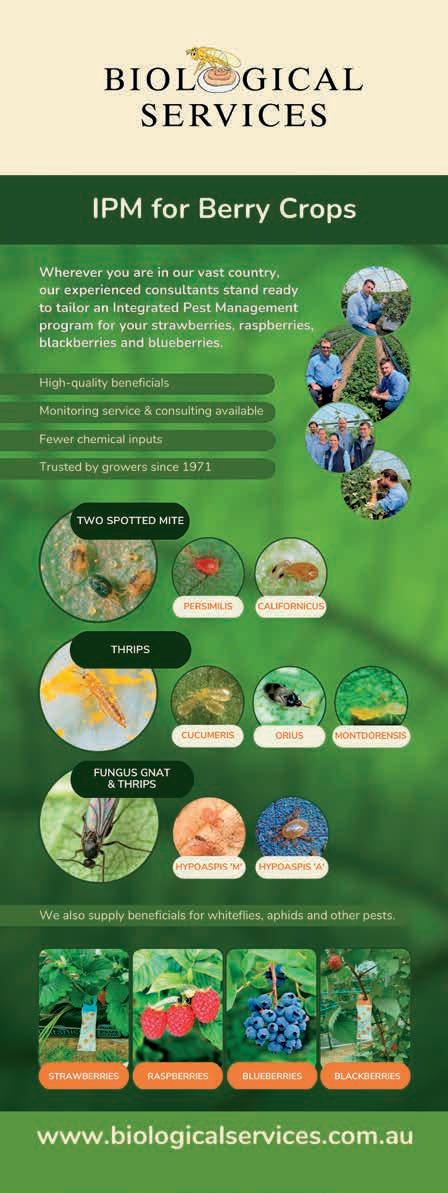
Ky Snyder — Project lead 0422 816 200 | ky.snyder@tgd.global Scott Needham — Partner 0439 135 268 | scott.needham@tgd.global To find out more or to register your interest in the project please Visit: bit.ly/3Nj0XTw OR Scan this code:
Hillwood Berries: Expanding berry production to the tropics

 Jen Rowling, Project Manager, Berries Australia
Jen Rowling, Project Manager, Berries Australia
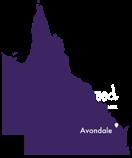
Hillwood Berries are an icon of the Tasmanian berry industry. Their involvement in berry production started 1985 when Robin Dornauf planted the first raspberry canes at the Christmas Hills Raspberry Farm, in northern Tasmania. Simon joined his father in 2010 to develop the land surrounding their dairy factory into a new and innovative berry farm about an hour away at Hillwood. On returning from his studies in the USA a few years later, Robin’s second son Marcus joined the family venture and helped grow the business to its current 52 ha size.
Today, Hillwood Berries is a hugely successful enterprise with around 27 ha of tabletop strawberries, 16 ha of raspberries, 7 ha of blackberries and 2 ha of blueberries. Add to this the very popular pick-yourown tourism venture and farmgate cafe, coupled with managing a team of around 55 permanent staff and approximately 500 seasonal workers during peak production periods, you’d think the family would have their hands full already! But the Dornaufs are always thinking ahead and their latest expansion has now taken Hillwood Berries nearly 2000 km north to the agricultural hub of Bundaberg in Queensland.
Hillwood Berries are approved employers under the Seasonal Workers program (SWP) and the Pacific Australia Labour Mobility scheme (PALM), with their workers coming from Timor Leste, Tonga and Samoa. To gain maximum benefit from the 9-month visas applicable under the program, Hillwood initially collaborated with several growers in Queensland, sending workers north to work the winter strawberry season as production eased off in Tasmania. Through working with Queensland growers, the team gained valuable insight into the opportunities for berry production in the Sunshine state and the potential to supply berries year-round utilising their own seasonal workforce.
61 RUBUS
In 2021, the decision was made to expand into Bundaberg. An old eggplant farm in Avondale with a small number of existing hothouses’ was snapped up, as the team jumped at the chance to acquire the ideal location to establish themselves in the region. Avondale is at an altitude of just 20m and just 10 km from the Pacific Ocean with a humid subtropical climate featuring hot, wet summers and mild, dry winters which are virtually frost-free.
Strawberries are the predominant berry grown in the Bundaberg region where the conditions are ideally suited to winter strawberry production, but the Dornaufs could see a gap in production and the potential for raspberries and blackberries grown in a protected cropping environment.
By quickly filling the existing tunnels with canes, the first Hillwood Berries Bundaberg crop of 1.4 hectares of blackberries and raspberries was harvested between May and October 2021, and the scene was set for major development of the site.
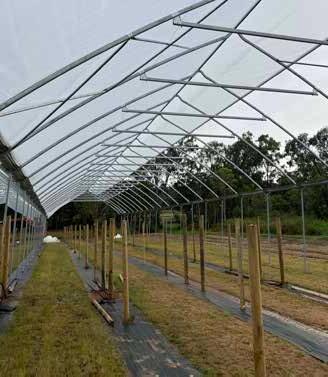
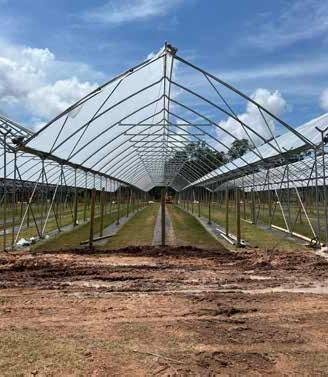
Marcus has taken on management of the farm and oversight of the expansion project, moving his family to the idyllic beachside location of Bargara just outside Bundaberg, and to a climate far removed from the Tassie cold.
Development underway
By early 2022, planning and building was underway with the goal of establishing 20 ha of tunnels for Rubus, strawberry and blueberry production. Six hectares of new tunnels were built for the 2022 season, adding to the existing tunnels already in place, with the remainder planned to be up and running for the 2023 season. This year will see production of 8 ha of blackberries, 10 ha of raspberries and 1 ha each of strawberries and blueberries, all grown in substrate systems and predominantly Driscoll’s varieties. The team will continue to work with Driscoll’s on identifying genetics appropriate for the region and implementing innovative farming practices to increase their capacity to provide year-round supply of berries.
Working closely with UK based tunnel experts Haygrove, Hillwood have invested in their new Advantage range of polytunnels, with 3 hectares of EZvent™ and 15 hectares of Total Vent automated polytunnel systems. EZvent is Haygrove’s simplest option for strategic venting to control temperature and relative humidity for crop growth, improved yield and quality, and it is recommended for all berry types.
62 BERRY AUSTRALIAN JOURNAL WINTER 2023 EDITION 15
Haygrove Total Vent tunnel system under construction at Hillwood Berries new Queensland farm at Avondale near Bundaberg. Photo credit: Hillwood Berries
The EZvent-bend is the key feature, with the bend located 2m up the hoop and the termination point of venting. It can be operated manually or with an electric drive system, significantly reducing labour and offering a simple solution for quick return on investment.
The Total Vent system is uniquely designed to autovent to the apex of the tunnel for precise climate control and mechanised skinning. It also allows for wider bay widths comparable to those of a glasshouse, meaning potential higher planting density for greater yield. It is recommended for all berry types in warmer climates or snow risk regions.
As the Bundaberg project is a flagship for Haygrove’s Advantage range in Australia, an Open Day is being planned for Wednesday 20 September at Hillwood Berries in Avondale, with an open invitation for growers to come and see firsthand the benefits of utilising the new range of polytunnels.

A new 2,000 square metre warehouse is also under construction, which will include approximately 800 square metres of cold storage space.
Getting to know the locals
A significant hurdle to overcome when moving into a new region was having big plans for expansion with zero contacts for skilled and reliable building contractors, tradies and suppliers. Early attempts at recruiting the help they needed for tasks such as land clearing and plumbing jobs either didn’t end well or took an excessively long time to complete. But by putting in the effort to establish their presence in the region, they now have a reliable network of contacts who are playing a vital role in building the infrastructure for the farm.
The Bundaberg Fruit and Vegetable Growers Association (BFVG) has been an invaluable resource for Hillwood since coming to Bundaberg, providing information, resources and contacts that have helped immensely with their establishment in the region. The Hillwood team have also set up administration operations at the Agtech Hub, a brand-new facility created by the Bundaberg Shire Council for the purpose of advancing agricultural innovation and technology in the region. The Centre allows for easy collaboration between stakeholders as well as providing excellent facilities for learning, development and networking.
63
Completed Total Vent tunnels almost ready for planting to commence. Photo credit: Hillwood Berries
Labour challenges
The Bundaberg farm now has nine permanent farm staff, plus around 40 seasonal workers helping with the tunnel and infrastructure build, and an expected labour force of around 230 seasonal workers will be required for harvest.
Although Hillwood will be utilising their own seasonal workers from the Tasmanian operation, providing sufficient accommodation has been a significant challenge as options are limited in the region.
A house in Avondale has been purchased and approved for conversion to worker accommodation, together with one of the two farmhouses on site. Even so, ensuring sufficient accommodation of the correct standard will be an ongoing challenge for the team as production progresses this year and into the coming seasons.
SAVE THE DATE
Haygrove & Hillwood Berries Open Day
To view the new automated Advantage range of polytunnels from Haygrove in action, put this date in your diary

Wednesday, 20 September 2023
Hillwood Berries, Avondale (Bundaberg)
Further information will be provided shortly.
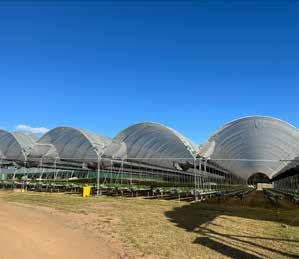 The EZvent tunnels recently installed with mechanised venting with field scale simplicity.
Photo credit: Hillwood Berries
The EZvent tunnels recently installed with mechanised venting with field scale simplicity.
Photo credit: Hillwood Berries
Profile: Alyx Busoli, Smart Berries
Mark Salter, Berry Industry Development Officer, Fruit Growers Tasmania
Berry grower Alyx Busoli has shown a passion for berries from an early age. Growing up in the raspberry growing region of Coffs Harbour on the north coast of New South Wales, Alyx spent most of her school holidays picking raspberries. Later Alyx moved to Victoria where she continued doing seasonal work during her school holidays.
In 2016, Alyx joined the Smart Berries team in Tasmania taking up a 2IC role before quickly rising to the role of Farm Manager a year later. Reflecting on this progression, Alyx explains it’s been a steep learning curve in a fast-paced and challenging industry, and notes she has been very well supported by her
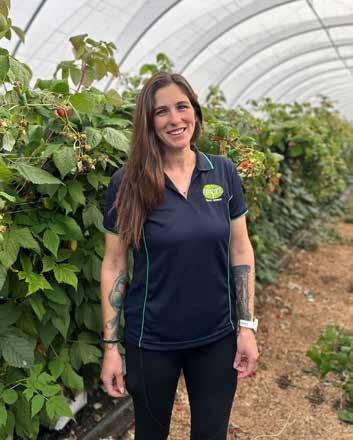
Growing a smarter berry
Smart Berries established their berry production site at Forth in Tasmania’s northwest coast in 2015. This site was selected for its maritime microclimate which is close to the coast providing a cool climate with four distinct seasons.
Starting out with 20 tunnels of raspberries, the site has grown significantly and now includes 24 ha of raspberries and 7 ha of blueberries. There are plans to expand this area further, with another 7 ha of blueberries being added this winter and more expansions in coming years.
Smart Berries grows four varieties of Plant Sciences Inc raspberries which help achieve an extended season, as well as four varieties of blueberries. All the berries are grown under tunnels in coir substrate, except for a small number of raspberry tunnels which are currently in-ground but will be transferred to substrate next year. The hydroponic irrigation system is computer controlled to feed the plants a precise nutrient mix for the different growth stages.
On-site dams provide ample water storage for the irrigation, and the company also has a water allocation from the Kindred irrigation scheme if more water is required.
Alyx Busoli is the Farm Manager at the Forth site.
65
Photo credit: Smart Berries
RUBUS
Harvest labour
The harvest season at Smart Berries goes from November through to June, and they employ approximately 200 pickers throughout the season.
Alyx begins the planning process well ahead of harvest to ensure there is sufficient labour for the season and it is still challenging particularly for a labour-intensive berry business.
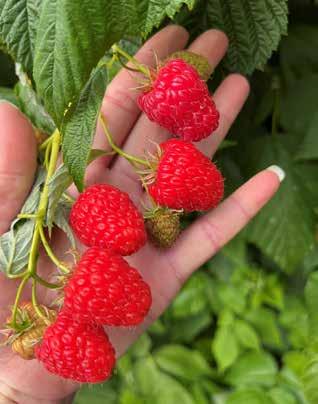
Smart Berries source the majority of their harvest labour through labour hire companies, with most pickers coming from the Pacific Australia Labour Mobility (PALM) scheme who have proven to be keen workers.
Marketing
Smart Berries have production sites across Australia and in New Zealand providing year-round supply for their customers.

The fruit is marketed under the ‘Smart Berries’ brand with most of the fruit from the Forth site sold domestically in Tasmania and mainland states, and only a small volume going into export markets.
At the Forth site the fruit is picked and packed in the field then transported to the cool room for chilling prior to being dispatched to various markets.
Alyx explains that Smart Berries are upgrading their packing and coolstore facility at Forth this year. The upgrade will also include the initialisation of a new packing line for blueberries to significantly streamline the blueberry harvest.

Challenges
Among the many challenges, Alyx cites rising production costs including wages, coir, packaging, fertiliser and freight. Evaluating the new varieties grown on the farm can also be particularly challenging, as most of the genetics come from overseas and it may take several years to get the most from each variety. Despite these challenges, Alyx enjoys working in the fast-paced berry industry.
Both Raspberries and Blueberries are grown at the farm across 31 ha with a further 7 ha being installed this winter.
66 BERRY AUSTRALIAN JOURNAL WINTER 2023 EDITION 15
Photo credit: Smart Berries
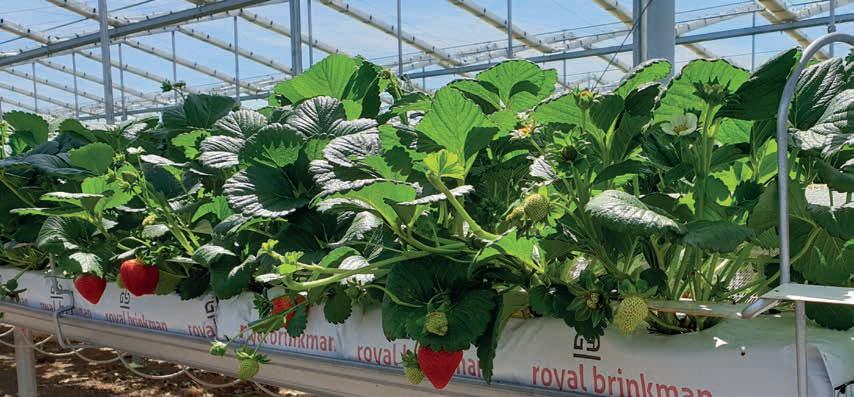

Brinkman Australia Pty Ltd | 18-20 Jarrah Drive, Braeside | Victoria 3195 T 03 9587 2566 | info@royalbrinkman.com.au • Quality • Reliability • Performance • Custom blending Royal Brinkman Premium Coco Substrates by BioGrow royalbrinkman.com/australia bio-grow.com/en/biogrow
Australian Strawberry Breeding Program
Outcomes from project BS17000 and overview of new project BS22000
Jodi Neal – Principal Plant Breeder, Katie O’Connor – Plant Breeder
Australian Strawberry Breeding Program Team, Queensland Department of Agriculture and Fisheries
• The overall objective is to produce varieties that reduce production costs, enhance profitability, and elevate consumer experience
• DNA-informed breeding presents an opportunity to boost breeding efficiency
• Breeding outcomes will be further improved with an increased number of seedlings per generation for the Mediterranean region
The Australian Strawberry Breeding Program (ASBP) is dedicated to developing new strawberry varieties specifically adapted to Australia's three major production climates: temperate, subtropical, and Mediterranean.
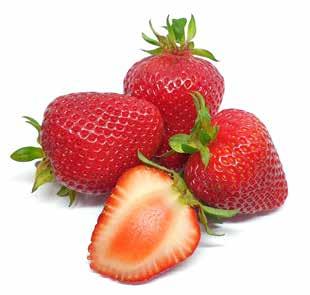
These new varieties should not only exhibit superior production traits for increased grower profitability, but also possess exceptional quality to drive repeat purchases among consumers.
Having recently concluded the five-year Hort Innovationfunded project BS17000, ASBP has embarked on a new project, BS22000. In this article, we will provide a comprehensive overview of the breeding activities and outcomes from the previous project while outlining our plans for BS22000.
Outputs and outcomes from breeding project BS17000
Released Varieties
During the course of project BS17000, ASBP released two temperate varieties ['Tahli-ASBP' (Figure 1) and 'Tamara-ASBP'], one subtropical variety ('Susie-ASBP', Figure 2), and two specialty varieties ['SB17-230-ASBP' (Figure 3) and 'SW20-317-ASBP']. Furthermore, an additional subtropical accession (2017-040) has been flagged for probable commercial release following an additional year of trialling on farms, as requested by the Subtropical Reference Group.
Two Mediterranean accessions were identified as potential candidates for commercial release. However, due to COVID-19 travel restrictions that prevented breeders from visiting the 2021 trials, a final decision on these accessions was postponed by a year.
Figure 1. Fruit of temperate variety ‘Tahli-ASBP’
68 STRAWBERRIES BERRY AUSTRALIAN JOURNAL WINTER 2023 EDITION 15
Photo credit: Jodi Neal
Variety Uptake
For the 2021-22 financial year, ASBP varieties represented a record high of 47% of all plant sales nationally.

The most popular ASBP variety was 'Red Rhapsody', followed by 'Sundrench' and 'Scarlet Rose-ASBP'.
'Red Rhapsody' saw extensive planting in both subtropical and Mediterranean regions in 2022, while 'Scarlet Rose-ASBP' has been reported to perform well in Mediterranean climates.
New varieties ‘Tahli-ASBP’, ‘Tamara-ASBP’ and ‘Susie-ASBP’ have all seen increasing sales in the short time since they’ve been released.
Genetic Gain
Steady progress has been made in all three production regions for major selection traits. Genetic gain over time for the key profitability traits 'average fruit weight' and 'yield per plant' are shown in Figures 4 to 7 for temperate and subtropical trials. Mediterranean gain isn't shown due to small trial sizes.
Particular progress has been made for fruit truss architecture in the temperate breeding population, transitioning from highly branched trusses in the older material to very few branches in recent cohorts. This change has been implemented to support larger, more consistent fruit sizes across the season, addressing a major limitation to profitability in temperate regions.
Our economic modelling has indicated that these traits are critical in reducing the cost of production, resulting in fewer picks (and therefore less time) needed to fill a punnet. Fruit size consistency has historically been problematic in commercial temperate varieties and is one of the main reasons for higher costs of strawberry production in temperate regions compared with other areas.
 Figure 2. Subtropical variety ‘Susie-ASBP’
Photo credit: Katie O’Connor
Figure 3. Fruit of specialty pink variety ‘SB17-230-ASBP’
Photo credit: Phill Jackson
Figure 2. Subtropical variety ‘Susie-ASBP’
Photo credit: Katie O’Connor
Figure 3. Fruit of specialty pink variety ‘SB17-230-ASBP’
Photo credit: Phill Jackson
69

 Figure 4. Temperate genetic gain in average fruit size in advanced-stage trials at Wandin Research Centre
Figure 4. Temperate genetic gain in average fruit size in advanced-stage trials at Wandin Research Centre
70 BERRY AUSTRALIAN JOURNAL WINTER 2023 EDITION 15
Figure 5. Temperate genetic gain in yield per plant in advanced-stage trials at Wandin Research Centre
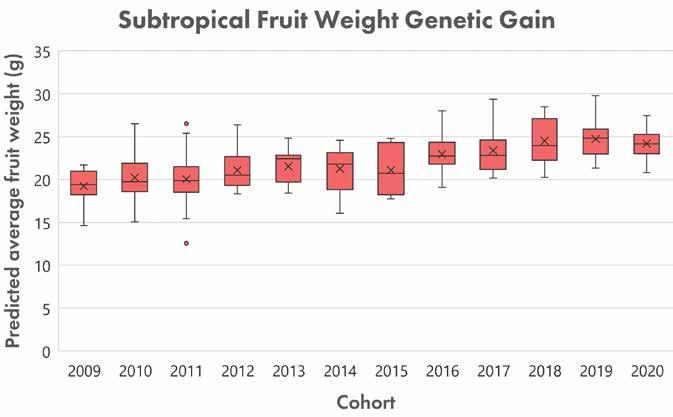
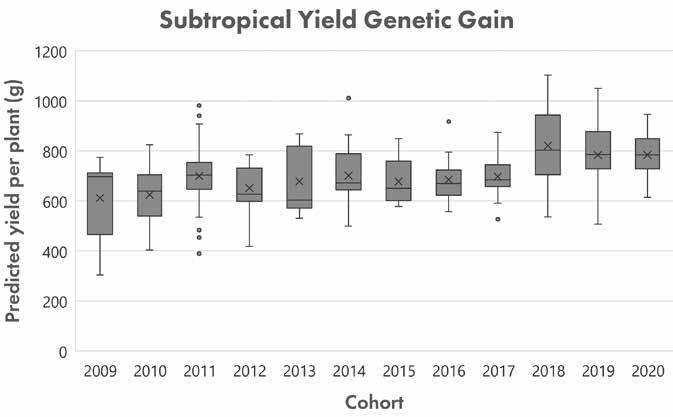 Figure 6. Subtropical genetic gain in average fruit weight in advanced-stage trials at Maroochy Research Facility
Figure 6. Subtropical genetic gain in average fruit weight in advanced-stage trials at Maroochy Research Facility
71
Figure 7. Subtropical genetic gain in yield per plant in advanced-stage trials at Maroochy Research Facility
Breeding Trials
The numbers of seedling and clonal accessions assessed in the project are summarised in Table 1. The breakdown of seedling accessions assessed for each region was: 49% temperate, 46% subtropical, and 5% Mediterranean, which approximately matches the relative size of each industry.
Enhancing Disease Resistances
Screening for disease resistance has been conducted on commercial and pre-commercial accessions from all three production regions, focusing on three major crown wilt diseases: colletotrichum crown rot (caused by Colletotrichum gloeosporioides), fusarium wilt (caused by Fusarium oxysporum f. sp. Fragariae), and charcoal rot (caused by Macrophomina phaseolina), as well as powdery mildew (caused by Podosphaera aphanis). The tested material showed varying levels of resistance to these four diseases, ranging from highly tolerant to highly susceptible.
Findings from these disease screening trials inform cross-pollinations aimed at producing seedlings with enhanced disease resistance. Advanced accessions demonstrating good tolerances have been utilised as parents in controlled crosses to introduce resistance genes into the wider breeding population. Accessions with high tolerance but subpar performance in other traits, such as fruit size and firmness, have been used as parents in pre-breeding crosses to maintain tolerance while gradually improving other characteristics.
Research into the genetic aspects of disease resistance is currently underway for powdery mildew and will soon commence for other diseases. These studies may enable the identification of disease tolerances through the genetic fingerprint of strawberry plants, allowing resistances to be determined for a significantly larger number of accessions each year.
Genomics-aided breeding
Leveraging genomics for DNA-informed breeding presents an opportunity to boost breeding efficiency, an approach already applied to numerous crops, including strawberries.
A major benefit of genetic marker testing and genomic prediction is the ability to pinpoint individuals with elite predicted performance early in the breeding cycle, which can then be used as parents to form the next generation of the breeding population.
Two genetic markers, perpetual flowering/day neutrality (DN) and flavour volatile ү-decalactone, have been consistently screened in advanced material and parents of the Australian Strawberry Breeding Program in BS17000.
Genomic prediction was employed to identify top-performing subtropical seedling selections based on statistical predictions using genome-wide markers. These selections were then used in cross-pollinations to accelerate genetic advancements within the population.
* Subtropical numbers include foundation (pre-breeding) work for specialty varieties (white, pink, dark fruit). Non-specialty (i.e. standard red) seedling total for subtropical was 51,425. Now that quality specialty selections have been generated these genetics are being used in crosses for the other regions.
Region Seedlings Early-stage accessions Advanced-stage accessions On-farm accessions Temperate 69,202 365 147 54 Subtropical 65,268* 468 129 23 Mediterranean 6,682 80 17 16
Table 1. Cumulative number of accessions assessed each year in trials across project BS17000
72 BERRY AUSTRALIAN JOURNAL WINTER 2023 EDITION 15
Project BS22000: Future plans
The new project, BS22000, will build upon the successful strategies and tools established in the previous project. Additionally, genomics tools will be expanded to enhance selection efficiency for both parents and candidate varieties across all regions. This will accelerate the development of varieties exhibiting improved disease resistance, consumer satisfaction, and overall performance.
Regional outcomes and objectives
The primary goal of the breeding program is to create varieties with traits that optimise profitability, sustainability, and consumer satisfaction for each of the three production regions, taking into account their unique strengths and needs. The overall objective for all regions is to produce varieties that reduce production costs, enhance profitability (including minimising plant and fruit losses through improved disease and environmental resistance), and elevate consumer experience.
The project will build on previous work to develop at least two superior varieties for the temperate, subtropical, and Mediterranean production regions. Ongoing consultation with regional Reference Groups will ensure that breeding targets remain relevant to the specific needs of each production region, season, and growing system. Breeding targets will be continually updated throughout the project, guided by regional Reference Groups and local growers at various events. In the Mediterranean region, additional emphasis will be placed on developing varieties suitable for international export, featuring better bruise and abrasion resistance. Temperate breeding activities will focus on lowering production costs and improving charcoal rot tolerance while preserving the exceptional flavour profiles currently present in this breeding population.
The subtropical region will prioritise enhanced flavour and red leaf disorder tolerance, alongside ongoing efforts to improve cost-effectiveness and profitability.
Breeding outcomes will be further improved with an increased number of seedlings per generation for the Mediterranean region. In the previous project, the number of seedlings assessed for this region was proportional to the relative size of the Mediterranean industry, with 6,700 seedlings assessed. In the new project, seedling numbers will be increased by 280%, to 20,000 seedlings over the life of BS22000, significantly raising the likelihood of generating superior genetics.
Substrate Culture and Protected Cropping
As substrate culture and protected production continue to grow in Australia, there is an ongoing need to develop varieties adapted to these production systems. The project will create varieties suitable for both substrate and protected cropping systems, incorporating traits such as long unbranched trusses, high bruise resistance, and powdery mildew tolerance.
Specialty Varieties
To support product differentiation in the strawberry market, the project will also continue breeding activities for specialty varieties across all three production regions. This will encompass white, pink, and dark fruit colours, new flavours, and added health benefits. These value-added products will be defined and prioritised in consultation with each of the regional Reference Groups.
In conclusion
The project's outcome will be the adoption of new varieties specifically developed for each of the three commercial growing regions (temperate, subtropical, and Mediterranean) using advanced breeding and evaluation methodologies.
Ultimately, this project is expected to boost productivity and profitability for national strawberry producers while maintaining strong consumer appeal.
jodi.neal@daf.qld.gov.au | 07 5381 1352
Your thoughts and feedback are highly valued by the project team.
The ASBP is guided by the principle of fostering idea exchange. If you would like more information, please contact Jodi Neal
73
Greenhouse Solutions








Acknowledgements
The Australian Strawberry Breeding Program has been funded by Hort Innovation using the strawberry research and development levy, with co-contributions from the Queensland Government through its Department of Agriculture and Fisheries and funds from the Australian Government.
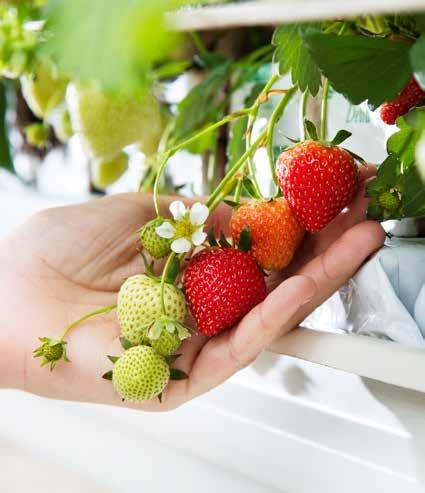
We thank the contributions by the Temperate, Subtropical and Mediterranean Reference Groups who have helped guide the program, the Industry Development Officers, and all other industry members who provide feedback, advice, and support.


We are also extremely grateful to all the fruit producers in all states who have trialled, collected data on, and given feedback on our on-farm accessions. This has helped us make more informed and better commercial judgments.
The Australian Strawberry Breeding Program team members include Jodi Neal (project lead), Maddy Betts (laboratory technical assistant), Mitchell Gates (Nambour lab assistant), Apollo Gomez (pathologist), Joanna Gillespie (genetics and virus indexing), Dale McKenna (Nambour field technical officer and hydroponics), Lauren Stirling (Nambour field assistant), Alan Noon (Wandin field assistant), Katie O’Connor (breeding and genomics), Michelle Paynter (virus indexing, tissue culture, and pathology), Sandy Shaw (Wandin field assistant), Karen Spencer (Wandin operations manager), and Louella Woolcock (Nambour field and glasshouse operations manager).
Australia - wide Sales, Service & Spare Parts Ph 1300 763 141 aisgreenworks.com.au
Irrigation & Fertigation Plastic & Steel Gutter Water Treatment Climate Control Substrates Trellising Accessories
Robot Harvesting at Burlington Berries, Tasmania
 Mark Salter, Berry Industry Development Officer, Fruit Growers Tasmania
Mark Salter, Berry Industry Development Officer, Fruit Growers Tasmania
If you visit Burlington Berries during strawberry harvest, you will more than likely see a fleet of 16 Dogtooth robots silently picking strawberries. Dogtooth Technologies is a technology and robotics company based in Cambridge, UK which has developed five generations of fruit picking robots and have 70 units deployed in Europe and Australia. They have been trialling their harvesting robots at Burlington Berries in Cressy, Tasmania since 2017, with a group of Gen3 robots.
This year is their fifth year at the site, and they are currently using 16 Gen4 units for this year’s harvest trials. Overseeing this trial from Dogtooth is Eva Thilderkvist, who provides further detail on the robots and their activities.
Dogtooth Gen3 robot picking strawberries in polytunnel infrastructure representative of that used throughout Europe
75 STRAWBERRIES
Photo credit: Dogtooth
Harvest innovation in action
Eva explains that as they work, each robot progresses through a 5-step harvest process:
STEP 1
SCAN: the robot images the crop to detect ripe fruits and locate them in 3D space.

STEP 2
PICK-PATH: the robot moves around each ripe fruit finding a clear path to its stalk.

STEP 3
HARVEST: simultaneously gripping and cutting the stem of the fruit, the robot never grips the body of the fruit minimising risk of bruising.
STEP 4
INSPECTION: he fruit is lowered into an inspection chamber where it is given a 360-degree inspection to gauge fruit size and quality.
STEP 5
PACKING: graded fruit is lowered into a punnet according to its size, colour, and quality. Substandard fruit is automatically dropped into a waste container, all waste fruit is measured at this point.
Whilst picking fruit, the robots also carry out numerous other information gathering tasks which adds value to their process. This includes collecting images of the fruit which can be analysed and used for yield forecasting, a vital tool for labour management and generating marketing programs. Having this data collected remotely also frees up staff to perform other tasks such as de-leafing and plant maintenance operations.
Dogtooth Robot picking strawberries in a glasshouse
Photo credit: Dogtooth
Dogtooth Gen3 robot picking a strawberry
76 BERRY AUSTRALIAN JOURNAL WINTER 2023 EDITION 15
Photo credit: Dogtooth
For the trials, Eva explains that the robots work in teams within a set group of tunnels, enabling Dogtooth to monitor harvest rates and data to be evaluated more accurately. One of Burlington’s supervisors manages each team, assisting where needed.
Continuous improvement
While the picking speed of these robots may not yet equal that of a manual worker, the pick rates have improved each year since the trials began. For Dogtooth, the present focus is on evaluating and improving picking rates through data collection and machine learning.
Harvest data is uploaded directly from the robots to the cloud for evaluation by the teams at Burlington and Dogtooth. The harvest system uses a Wi-Fi network to communicate with the robots, enabling monitoring to be done on the ground via handheld devices.
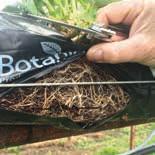
Harvest records can be fed back to the grower in real time and displayed on a computer dashboard for easy analysis. This data, along with data from robots operating at several other sites around the world, helps Dogtooth to iterate the underlying technology, making the robots
more robust, faster and operate at ever higher quality. Dogtooth only conduct trials on commercial farms, not in a controlled environment, as this gives a commercially driven outcome which allows a better understanding of the practical challenges of robotic harvesting. Working directly with growers also allows access to direct feedback on areas for improvement, helping the business to better understand the needs of growers.
Battery life is another area where Dogtooth are looking to improve performance. The current battery technology allows the robots to work for a period of up to 8 hours each day before returning to a shipping container to be stored and recharged overnight. Dogtooth have rolled out lithium-ion batteries with the next generation of robots and have managed to demonstrate 16 hour picking days, including picking at night.
Building the future
Whilst the current generation of robots is unlikely to replace the human harvest workforce entirely, progress towards mechanised harvesting is happening quickly.
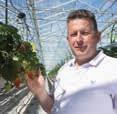

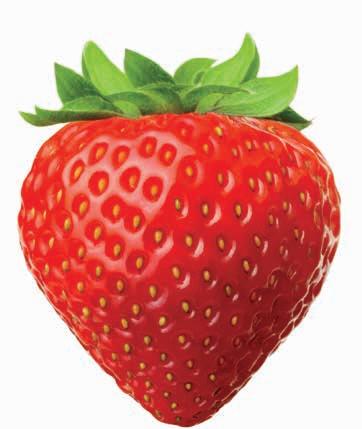
77 +61 3 9555 5267

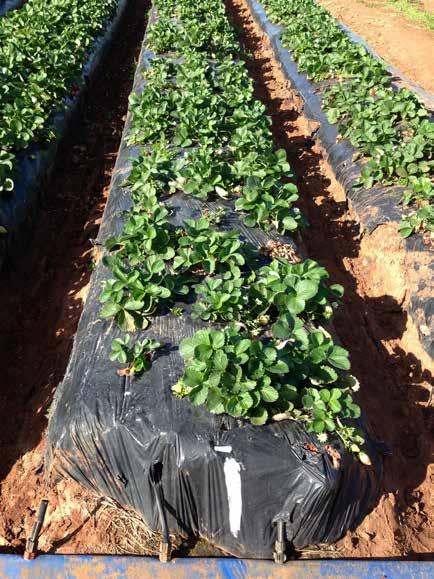









08 8347 3838 TRICAL PARTNERS WITH YOU TO IMPROVE YOUR SOIL HEALTH trical.com.au StrikeFumigants.com FUMIGATION PARTNERSHIPS INNOVATION Promotes native beneficial soil micro-organisms. Supports growth of a healthy root system. Improves water and nutrient-use efficiency. Results in thriving plants with less crop stress. Increases marketable crop yields.
Vale Dr Peter Merriman
1942 — 2023
Peter began his research career in berries in England in the 1960’s at the Imperial College of Science and Technology where he conducted a PhD on the biology of powdery mildew and better ways to manage the disease. Following completion of these studies, Peter came to Australia and led a long and distinguished career in research and science management in horticulture and plant pathology at the Victorian Department of Agriculture. Peter mentored many of the scientists who are servicing the berry industries today, both inside and outside of the Department.
Following his career at Agriculture Victoria, Peter chaired the board of the Victorian Strawberry Industry Certification Authority (VSICA) from 2002 to 2014. He remains the longest serving chair of VSICA. During his service, Peter initiated several improvements to the Strawberry Runner Certification Schemes, particularly in Victoria. Peter led scientific projects through Horticulture Australia Ltd that carefully researched and planned a new hydroponic system for production of early runner stock in soil-less substrate, and the strict biosecurity and hygienic practices needed to maintain these plants. The production system was ultimately adopted and remains a cornerstone of strawberry Certification schemes in Australia.
Peter was also a strong industry advocate and supported science to improve diagnostic tests for viruses and bacteria, which are important tools in the Certification Schemes. At VSICA, Peter provided a strong model that robust science must form the principles for runner Certification, so that fruit growers receive the healthiest plants possible. This resulted in the establishment of research capabilities and collaborations with the fruit sector within VSICA and VSICA Research.
Peter championed the strawberry industry both in Australia and internationally. In the 2000s, he coordinated applications to the United Nations for critical-use exemptions so the strawberry runner sectors in Victoria and Queensland could retain the use of the soil fumigant methyl bromide. This was critical in supporting the high health of runner stock, while research was conducted to identify suitable alternatives to the fumigant. Through this work, the runner industry is now transitioning to effective alternatives, such as methyl iodide, that maintain Certification standards without affecting the environment.
Peter held a deep respect for the work of the early pioneers who founded the strawberry industry in the 1950-60s. He conducted research and interviews to document the establishment of the strawberry industry in Victoria and Australia as part of the 50th Anniversary of the industry. This included preserving many of the ministerial communications that led to the declaration of the Plant Protection District and establishment of Australia’s first runner sector at Toolangi in Victoria. Peter compiled his research into a short book ‘Marathon Runners: The story of the Victorian Strawberry Runner Certification Scheme (1960-2010)’ (ISBN 978-1-74264-549-8) for the strawberry industry.
We are grateful for Peter’s commitment to the strawberry industry, and to underpinning the Victorian Strawberry Certification Scheme with good science. His intellect, kindness, humanity, and sense of humour will be sadly missed.
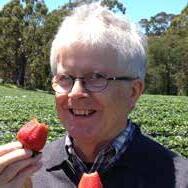
It is with sadness that we report the passing of the well-respected Dr Peter Merriman, and acknowledge his significant contributions to science and the Australian strawberry industry.
79
Next generation of strawberry disease control
Dr Donovan Garcia Ceron, Lorena Rodriguez Coy, Marlo Molinaro, Dr Scott Mattner and Assoc. Prof.Tony Gendall, La Trobe University
Apollo Gomez, Queensland Department of Agriculture and Fisheries
A team of researchers based at La Trobe University in Victoria, and at the Queensland Department of Agriculture and Fisheries (QDAF) in Nambour, is part of the Australian Research Council Sustainable Crop Protection Hub, funded by the Australian Government and industry partners, including Hort Innovation.
• BioClay TM is a completely new crop protection approach that is non-genetically modified, safe and environmentally sensitive
• Grey mould caused by Botrytis sp. is a serious pre- and post-harvest disease of berries, and other crops
• The team have developed sensitive in vitro assays to measure the effectiveness of BioClay against Botrytis on different tissues of strawberry plants
The Sustainable Crop Protection (SCP) Hub launched in 2022, and aims to develop the novel BioClay platform and apply it to fungal disease management in a range of horticultural and crop species. The BioClay technology was developed by Professor Neena Mitter, the SCP Hub Director, and colleagues at the University of Queensland. BioClay is a completely new crop protection approach that is non-genetically modified, safe and environmentally sensitive. It is a biodegradable spray solution of clay particles that bind double stranded RNA (dsRNA), releasing it slowly once applied to the plant, to fight pests with longer protection periods. Grey mould caused by Botrytis sp. (particularly B. cinerea), is a serious disease causing enormous economic losses around the world, including in berries, where it affects fruits pre- and post-harvest (Figure 1).
As part of the SCP Hub project, the team have developed sensitive in vitro assays to measure the effectiveness of BioClay against Botrytis on different tissues of strawberry plant that will underpin future work. Other research teams within the SCP Hub are working on Botrytis in grape and pulses.
Initial experiments using commercial fruit from supermarkets, or fruit sourced directly from growers, often had residual and highly variable levels of background contamination, particularly Botrytis and Rhizopus. These latent infections greatly interfered with the disease assays that set out to measure Botrytis disease progression. At La Trobe, two early-career scientists, Ms Lorena Rodriguez Coy, a Ph.D. student, and Dr Donovan Garcia Ceron, a recent PhD graduate, have now developed a method to produce very clean fruit, flowers and leaves. Fruit and flowers are produced from plants grown in a research glasshouse with controlled temperature and lighting (Figure 2).
Sterile leaves can be obtained from sterilised seeds germinated and grown in sterile tissue culture in a controlled environment room (Figure 3).
At QDAF, Apollo Gomez has implemented disease assays that are conducted in dedicated plant pathology glasshouses, with different tissues of intact plants infected, and disease progression monitored.
80 STRAWBERRIES BERRY AUSTRALIAN JOURNAL WINTER 2023 EDITION 15
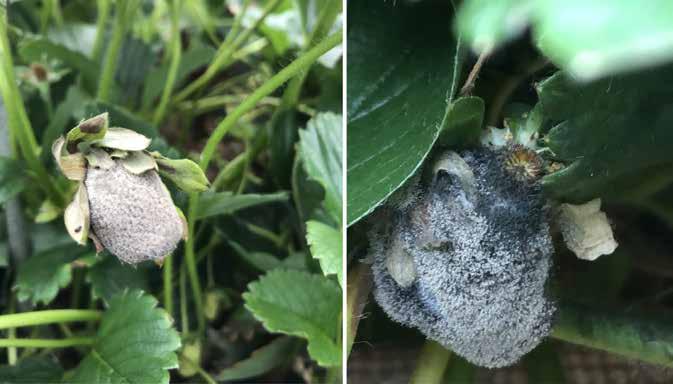
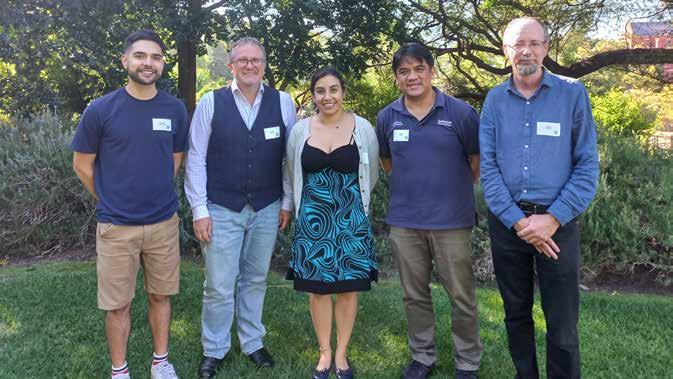 Figure 1. Strawberry fruit heavily infected with Botrytis. The fruit on the right has Botrytis that is sporulating. These spores can now spread and infect many more fruit and flowers. Photo credit: Scott Mattner
The strawberry team at a recent Council Sustainable Crop Protection Hub Meeting. (L to R) Dr Donovan Garcia Ceron, Dr Scott Mattner, Lorena Rodriguez Coy, Apollo Gomez, and Assoc. Prof. Tony Gendall.
Figure 1. Strawberry fruit heavily infected with Botrytis. The fruit on the right has Botrytis that is sporulating. These spores can now spread and infect many more fruit and flowers. Photo credit: Scott Mattner
The strawberry team at a recent Council Sustainable Crop Protection Hub Meeting. (L to R) Dr Donovan Garcia Ceron, Dr Scott Mattner, Lorena Rodriguez Coy, Apollo Gomez, and Assoc. Prof. Tony Gendall.
81
Photo credit: Ilaria Stefani
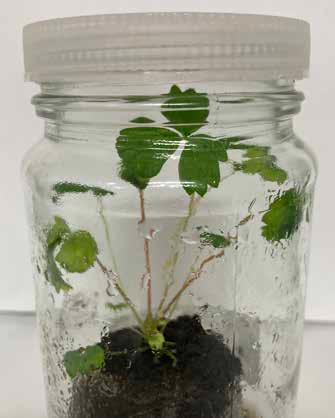
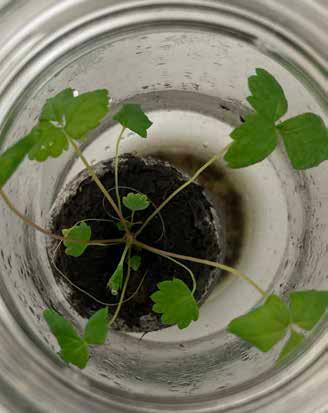
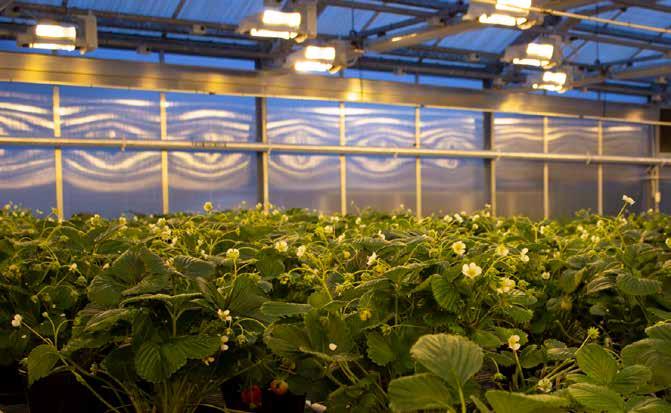 Figure 3. Sterile Strawberry plants grown in tissue culture. Photo credit: Lorena Rodriguez Coy
Figure 3. Sterile Strawberry plants grown in tissue culture. Photo credit: Lorena Rodriguez Coy
82 BERRY AUSTRALIAN JOURNAL WINTER 2023 EDITION 15
Figure 2. Disease-free Strawberry plants under lights in a glasshouse. Photo credit: Lorena Rodriguez Coy
These clean or sterile tissues are then deliberately infected with a known inoculum of Botrytis spores. The tissues are maintained in conditions that promote the growth of the fungus, and the growth of Botrytis is then measured daily using a range of imaging systems (Figure 4).

Over the next two years, these types of assays will underpin our work on the validation of BioClay as an effective disease control option for Botrytis in strawberry, by testing and optimising the timing and rate of BioClay application and comparing it to existing fungicide chemistries.
Ultimately the research team aim to provide berry growers with a non-pesticide approach for managing Botrytis that integrates well with other control measures. It is a ground-breaking and ambitious task that will take many years of research but could minimise growers’ reliance on pesticides and reduce the risk of fungicide resistance in populations of Botrytis


In a parallel study, Marlo Molinaro is conducting an Honours project to examine the diversity of possible beneficial and pathogenic fungi in different production systems in Victoria for strawberry and raspberry fruit. Although the entire suite of microbes that live in strawberries, the microbiome, has been described in other countries, there is no data for fruit produced in Australian conditions. Marlo will use a Next-Generation DNA sequencing approach to describe the full spectrum of fungi present on the surface and within the plant. We can then compare these results to those reported in the literature from international studies.
Marlo’s research is particularly important so that we can design BioClay technologies that target pathogenic fungi like Botrytis, but do not interfere with beneficials that promote the health of the crop. With this new work to investigate and control diseases in strawberries, which involves several young scientists, we hope the future of research in disease control in berries is promising –albeit with many challenges ahead!
Acknowledgements
This research was supported by the Australian Research Council Research Hub for Sustainable Crop Protection (project number IH190100022) and funded by the Australian Government, the Queensland Government, La Trobe University and Industry partners including Hort Innovation (BS20777). Lorena Rodriguez Coy is supported by a La Trobe University Post Graduate Research Scholarship and a La Trobe University Full Fee Research Scholarship. We also thank the growers who have kindly provided fruit and plant samples, and the Victorian Strawberry Industry Certification Authority (VSICA) for plant material.
BioClay is a trademark of Nufarm Australia Limited.


 Figure 4. An in vitro assay for monitoring deliberate Botrytis infections in fruits (top) and petals (bottom). d.p.i and h.p.i are days and hours post inoculation.
Photo credit: Donovan Garcia Ceron
Scott Mattner (L) and Marlo Molinaro (R) collect samples for fungal diversity assays from a farm in Wandin, Victoria. Photo credit: Tony Gendall
Figure 4. An in vitro assay for monitoring deliberate Botrytis infections in fruits (top) and petals (bottom). d.p.i and h.p.i are days and hours post inoculation.
Photo credit: Donovan Garcia Ceron
Scott Mattner (L) and Marlo Molinaro (R) collect samples for fungal diversity assays from a farm in Wandin, Victoria. Photo credit: Tony Gendall
83
Impact of supplementary pollination on the yields of strawberry
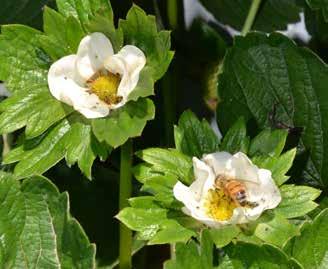
 Christopher Menzel, Principal Horticulturist, Department of Agriculture and Fisheries
Christopher Menzel, Principal Horticulturist, Department of Agriculture and Fisheries
• The importance of insect pollination on the performance of strawberry was reviewed.
• Studies showed a 20% increase in yield for plants with supplementary pollination compared with natural pollination which reinforced past studies that have found pollination is better with insects than with wind and gravity.
• This suggests that the introduction of managed hives or additional wild bees can improve productivity.
• Management of pollination will become more important in the future with the loss of pollinating insects under global warming.
Studies around the world have highlighted the positive impact that supplementary pollination has on plant fertility and yields. Burd (1994) used published data on 258 species in which fertility was reported for natural pollination and hand pollination.
He found significant improvements in fertility with hand pollination at some time, or at some sites, in 62% of the species. Bennett et al. (2020) reviewed seed and fruit set across 1,247 species around the globe and found a 63% increase in reproduction following supplementary pollination compared with open pollination.
84 STRAWBERRIES
Strawberry flowers. Photo credit: Christopher Menzel Bee on strawberry flower. Photo credit: Jane Richter
Sáez et al. (2022) assessed data from 52 studies encompassing 18 different self-compatible crops and reported that supplementary pollination increased yield by 22%.
In this article, data from published studies investigating pollination in strawberry crops was used to investigate the impact of supplementary pollination on the productivity of strawberries.
Assessing the impact of supplementary pollination
The impact of supplementary pollination can be estimated by comparing the fertility of plants with and without supplementary insects, or by comparing the fertility of hand- and open-pollinated flowers.
There are issues with both methods that should be remembered when interpreting the results of the studies:
• The response to supplementary pollination depends on the abundance of native pollinators at the site. If there are sufficient pollinators already present, the response to supplementary pollination will be reduced.
• Research suggests that the benefits of supplementary pollination with insects is underestimated.
• Hand-pollination can damage the flowers or apply excessive pollen to the stigmas; this will reduce the efficacy of supplementary pollination.
Open versus supplementary insect pollination
25 studies were reviewed to compare the fertility of flowers under natural open pollination with those that were exposed to supplementary insects (Figure 1). 20 of these studies used yield response to estimate the impact of supplementary pollination. In these studies, there was a moderate, but variable impact across the experiments. The average benefit to yield was 0.20 (20%) ± 0.17 (P < 0.001).
There was a different result when estimates were based on fruit weight, where the average increase in fruit weight was 0.06 (6%) and highly variable (± 0.18, P = 0.106) across the twenty-five studies.
Open versus hand pollination
A second analysis was conducted to estimate the impact of supplementary pollination based on a comparison of hand- and natural open-pollination. Different measures were used, including fruit weight, fruit width and the number of achenes or seeds per fruit.
The average benefit was 0.03 (3%) ± 0.11 (P = 0.307) across eleven studies, suggesting a small and variable benefit from hand pollination.
the
supplementary
was calculated: Impact of supplementary pollination = (P s – P o ) /P Max
is the yield or fruit weight from the supplementary pollination treatment
is the yield or fruit from the control treatment (open pollination)
is the larger of the two values
How
impact of
pollination
Ps
Po
PMax
0.6 0.4 0.0 0.2 -0.2 -0.4 Supplementary pollination Impact Yield Fruit Weight (g)
Figure 1. Impact of supplementary pollination on the yields of strawberry across 20 studies and fruit weight across 25 studies.
85 BERRY AUSTRALIAN JOURNAL WINTER 2023 EDITION 15
Implications for commercial strawberry production
• The average benefit of supplementary insect pollination on yield in strawberry was 0.20, indicating that additional pollination provided 20% higher productivity.
• These results suggest the introduction of managed hives or additional wild bees can improve yields.
• Earlier work indicated that strawberry plants are dependent on insects for pollination (Menzel, 2022).
• Fruit set was better with insects than with self-pollination with wind and gravity.
• Strawberry plants have a moderate dependence on pollinators and a moderate yield improvement with supplementary pollination.
• Management of pollination will become more important in the future with the loss of pollinating insects under global warming.
References
Bennett, J.M., Steets, J.A., Burns, J.H. et al., 2020. Land use and pollinator dependency drives global patterns of pollen limitation in the Anthropocene. Nature Communications 11, 3999.
Burd, M., 1994. Bateman’s principle and plant reproduction – the role of pollen limitation in fruit and seed set. The Botanical Review 60, 83–139. Menzel, C., 2022. Yields in commercial strawberry fields are limited by the availability of pollen and insect pollinators. Australian Berry Journal 12, 89–93.
Sáez, A., Aguilar, R., Ashworth, L., Gleiser, G., Morales, C.L., Traveset, A., Aizen, M.A., 2022. Managed honeybees decrease pollination limitation in self-compatible but not in self-incompatible crops. Proceedings of the Royal Society B 289, 20220086.
Acknowledgements
The Queensland Government is funding the research through the Department of Agriculture and Fisheries. Many thanks to the Florida Strawberry Growers’ Association (FSGA) for financial support and to Gary Hopewell for reading an earlier draft of the article.
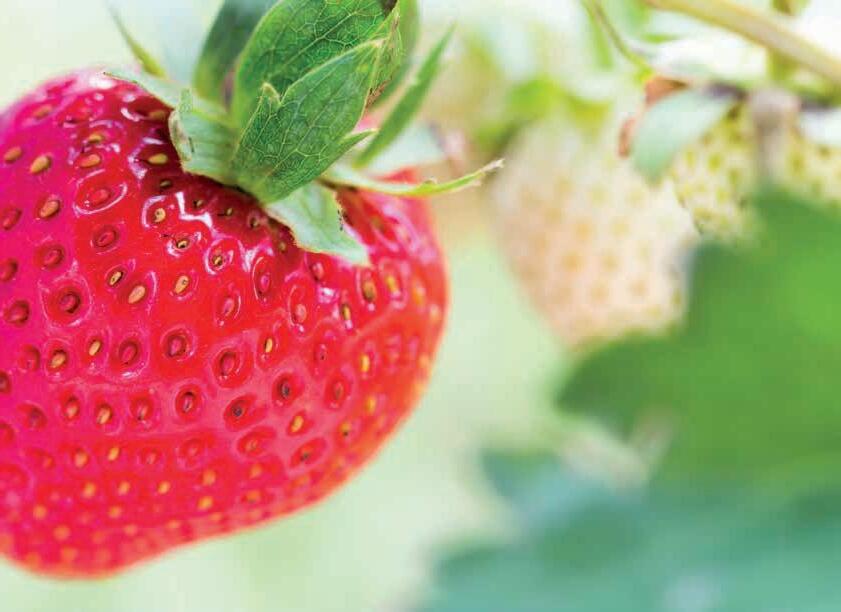
FOR THE B EST BERRIES
• Effective control of grey mould in berries
• Flexible use pattern
• Strong protectant action
• Highly effective on powdery mildew in strawberries
• Nil withholding period



• Translaminar & vapour action

Innovation. Quality. Solutions. ® Flute is a registered trademark of Nippon Soda Co., Ltd. ® Kenja is a registered trademark of Ishihara Sangyo Kaisha, Ltd. 220727
50 EW
FUNGICIDE ®
Queensland Strawberry industry gets together to welcome the winter season
Jane Richter
For the first time since 2021, the Queensland Strawberry Growers Association has held its dinner and awards night at the Pelican Waters Resort on the Sunshine Coast an hour north of Brisbane. The evening brings together growers, marketers, researchers, agents, supply chain partners and industry stakeholders in an informal setting and is a valuable way to connect within the Queensland strawberry industry.
The ‘Early Adopter of Innovation’ award celebrated one of the industry’s well-respected businesses which produce both organic and conventional strawberries at their Sunshine Coast property in the winter season, and conventional strawberries with a thriving tourism business at their Stanthorpe property. Brendon Hoyle from Ashbern Farms was recognised in 2022 as Organic Farmer of the Year for his use of an innovative bug vacuum concept that he first saw in the United States. A very passionate farmer who is well known for her pioneering work to reduce the amount of food waste from her strawberry farm – Mandy Schultz from Luvaberry – was recognised for the broad range of ‘out of the box’ thinking that she has brought to the industry with the ‘Industry Influencer’ award. Mandy has pioneered a whole range of hybrid farm tourism concepts that are changing the way that small farms can derive their income. Persistence, resilience and creativity really does encapsulate this farmers approach.
dinner& awards 2023

This year four awards were presented to members of the Strawberry community to recognise the achievements in the industry.
Moving to Bellmere over 30 years ago, this family have always been at the forefront of new ideas in the industry. Back in early 2022, the family added a custom-built café – the Strawberry View Coffee Shack – to their operation and this now attracts visitors from far and wide during the season. In recognition of their ‘Business Diversity’, this award was presented to Kylie Fairweather of Stothart Family Farms.
The final award of the evening was presented to Roger Broadley for 'Employee Excellence'. Roger has been a part of the team for over five years and has helped Queensland Strawberries to achieve some big goals with the commercialisation arm of the business. His thoroughness and attention to detail has been outstanding and the award was given to acknowledge the crucial role that Roger plays in the association’s success.
SATURDAY 13 MAY
87
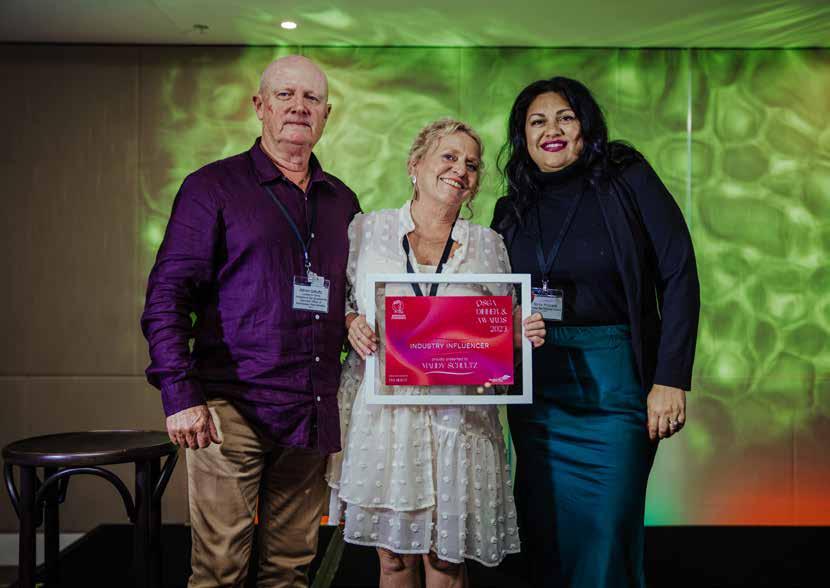
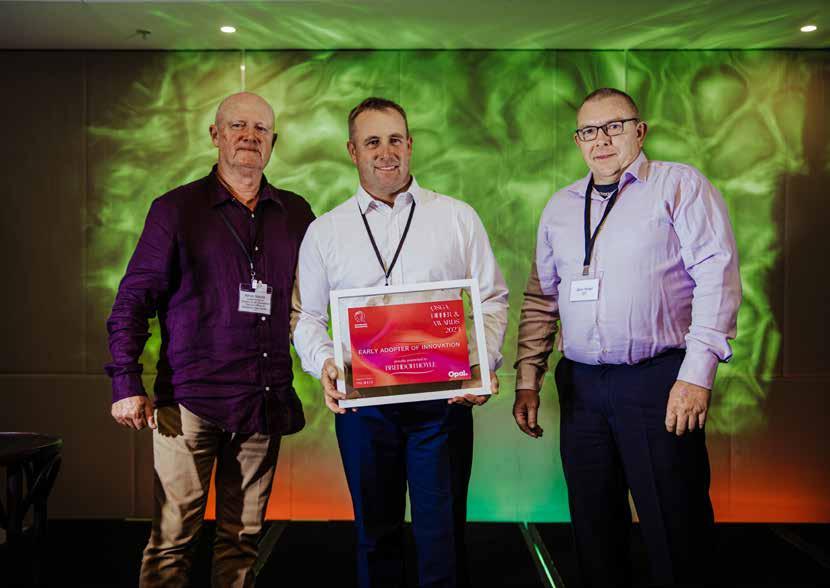 Also named Organic Farmer of the Year in 2022, Brendon Hoyle (C) from Ashbern Farms accepts his award for Early Adopter of Innovation presented by Jason McNeil (R) from award sponsor Opal. Photo credit: QSGA
Adrian Schultz (L) President of QSGA with Mandy Schultz (C) from Luvaberry being presented with the Industry Influencer award by Sorita McGrane (R) from award sponsor Moreton Bay Regional Council.
Photo credit: QSGA
Also named Organic Farmer of the Year in 2022, Brendon Hoyle (C) from Ashbern Farms accepts his award for Early Adopter of Innovation presented by Jason McNeil (R) from award sponsor Opal. Photo credit: QSGA
Adrian Schultz (L) President of QSGA with Mandy Schultz (C) from Luvaberry being presented with the Industry Influencer award by Sorita McGrane (R) from award sponsor Moreton Bay Regional Council.
Photo credit: QSGA

 The event was organised by Amanda Roy (R) from QSGA with support from Jane Richter (L).
Photo credit: QSGA
Winner of the Business Diversity award sponsored by Rivulis, Kylie Fairweather (C) pictured with Jane Stothart (L) and Dave Fairweather (R) from Stothart Family Farms.
The event was organised by Amanda Roy (R) from QSGA with support from Jane Richter (L).
Photo credit: QSGA
Winner of the Business Diversity award sponsored by Rivulis, Kylie Fairweather (C) pictured with Jane Stothart (L) and Dave Fairweather (R) from Stothart Family Farms.
89
Photo credit: QSGA
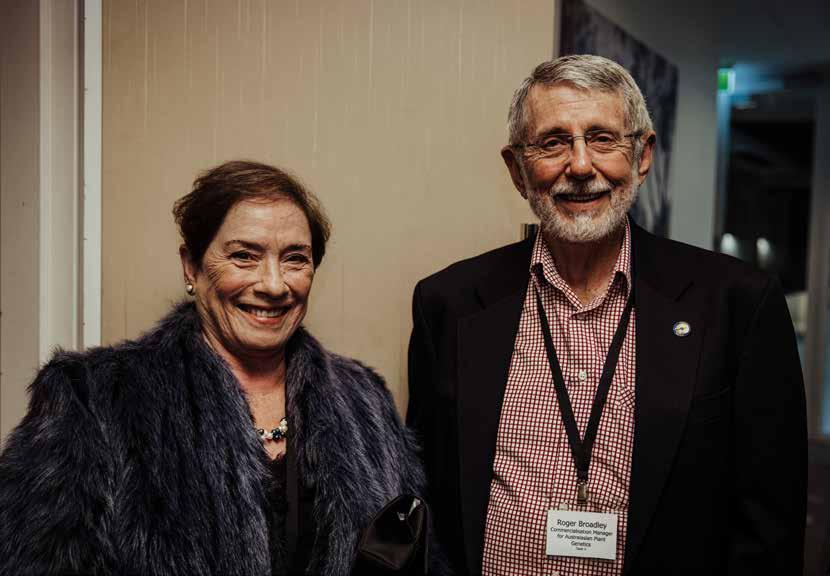
 Award winner for Employee Excellence Roger Broadley with his wife at the QSGA Awards Dinner. The award was sponsored by Nufarm. Photo credit: QSGA
Award winner for Employee Excellence Roger Broadley with his wife at the QSGA Awards Dinner. The award was sponsored by Nufarm. Photo credit: QSGA
Blueberry Plants
commercial growers nurseries
wholesalers
hobby farmers
having supplied the industry with blueberry plants for over thirty years, we can offer a large number of varieties including Northern Highbush, Southern Highbush and Rabbiteye types. Talk to us today about how we can fulfill your requirements on plants@moonblue.com.au

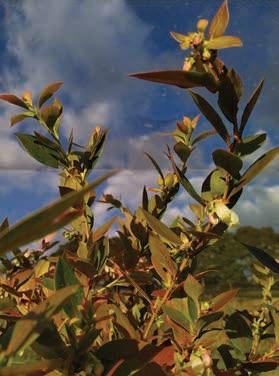
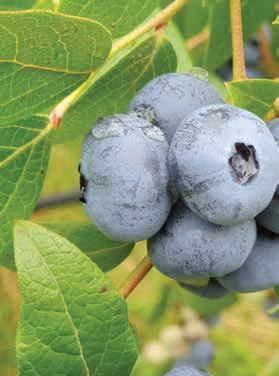
winter field2023ready plants
available
excess stock sale
field ready plants
Northern Highbush

BLUEJOY
DENISE
IVANHOE
Over 200 plants
10% OFF*
Over 300 plants
15% OFF*
moonblue.com.au
* Discount only available on varieties listed above. Total quantity can be a combination of varieties listed above.
Learn while you listen: US Highbush Blueberry Council Podcasts make it easy to stay informed
Helen Newman, Berry Industry Development Officer, Agricultural Produce Commission (WA)
The US Highbush Blueberry Council (USHBC) is a grower-driven organisation that aims to grow consumer demand for blueberries by uniting industry stakeholders through research, promotions and resources.
To support this, they have an impressive arsenal of online resources for growers, marketers, exporters, food and health professionals, and consumers that are worth delving into.
USHBC operations are industry-funded by an assessment (levy) of $18 per ton collected on highbush blueberries produced in and imported into the United States. The assessment is paid by producers and importers of 2,000 or more pounds of blueberries annually.
For growers, they have a data insights centre which features:
• US production and market information including sales reports, pricing trends, and consumer insights;
• promotional toolkits and marketing materials with free content to promote blueberries to a variety of audiences;
• updates and links to what’s happening at their smart farm network;
• and a weekly blog called ‘Behind the Blue’.
They also have a weekly podcast called ‘The Business of Blueberries’. These podcasts feature conversations with leading voices in the blueberry industry on markets, research, and technology related to blueberry production.
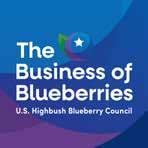
Each episode features voices of US growers and industry stakeholders giving a crop report, updating on crop progress, harvest expectations and market conditions. Collaboration at its best!
If you like listening to insights from other growers delivered in an informal conversational format it is really worth subscribing to The Business of Blueberries podcast.
92 BLUEBERRIES BERRY AUSTRALIAN JOURNAL WINTER 2023 EDITION 15
What is a Podcast?
A podcast is essentially a ‘talk radio’ series on demand. This means that listeners don't need to turn up and tune in live, but can listen any time (and pretty much anywhere) they like. Podcasts tend to be focused on a theme or topic. There are a range of online channels where you can subscribe and listen to podcasts.
How can you access these podcasts?
Each episode of the podcast can be accessed via a number of commonly used Podcast platforms:
If you are not a frequent podcast listener or have never used one of these apps before then the easiest way to listen is using your internet browser. Open a new browser window, visit ushbc.blueberry.org/podcast and click on the latest episode – make sure your sound is turned up!
Here are a few past episodes that are worth a listen when you subscribe
Tech Tour Highlights
(Season 2, Episode 17, October 2021)
Hear a recap of the Tech Tour that took place as part of Innovate 2021.
In this episode, you’ll hear from:
• Josh Dietrich, farm manager at PanAmerican Berry Growers, talking about their cooling system that helped save their crop during the Pacific Northwest heat wave.
• Dr. Bernadine Strik, professor of horticulture and a berry crop specialist at Oregon State University, demonstrating research on mulch and fertilization in organic blueberries.
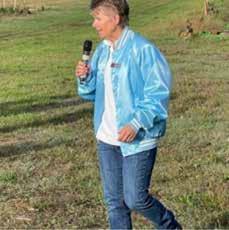
• Jim Hoffman of Hopville Farms speaking about the energy savings of Monarch Tractors.
• George Kaufman, an agronomist at Agricare, introducing a pollinator habitat project implemented at Halls Ferry Farm.
• Steve Erickson, president and CEO at PanAmerican Berry Growers, speaking about the value of collaboration to keep bringing new innovations to the table.
You can also watch virtual Tech Tour videos – visit https://ushbc.blueberry.org/podcast/tech-tour-highlights

93
Listen to this podcast here: ushbc.blueberry.org/podcast/tech-tour-highlights
You Better BEE-Lieve It: Tech and Bees Can Go Together (Season 2, Episode 33, February 2022)
Ellie Symes, CEO of The Bee Corp, and Luis De La Garza, general manager of Royal Oaks Farms, discusses technology that helps beekeepers maximize pollination revenue per hive, and aids growers in reducing costs and optimizing pollination quality.

Listen to this podcast here: ushbc.blueberry.org/podcast/you-better-bee-lieve-it-tech-and-bees-can-go-together
Driving the Forward Momentum in the Blueberry Industry with Soren Bjorn (Season 2, Episode 36, March 2022)

Host Kasey Cronquist is joined by Soren Bjorn, president of Driscoll’s of the Americas, for a wide-ranging conversation about the future of the blueberry industry.
This episode is part one of a two-part interview and looks at: lessons the blueberry industry can take away from the pandemic; Bjorn’s thoughts on the future of the industry and making blueberries the world’s favorite fruit; the current state of labor in agriculture, and Driscoll’s new documentary titled “The Last Harvest”; and Driscoll’s recent investment in vertical farming.
Listen to this podcast here: ushbc.blueberry.org/podcast/driving-the-forward-momentum-in-the-blueberryindustry-with-soren-bjorn



Elevating the Consumer Experience with Soren Bjorn (Season 2, Episode 37, March 2022)

This episode is part two of a two-part interview, with disussion on: improving the sometimes “uneven” consumer experience of blueberries; the importance of improving blueberry genetics and the places where blueberries might grow in the future; the success of the Driscoll’s “Sweetest Batch” line, and how it creates an elevated experience for consumers; and how accuracy of blueberry data can help the whole industry.
Listen to this podcast here: ushbc.blueberry.org/podcast/elevating-the-consumer-experience-with-soren-bjorn
94 BERRY AUSTRALIAN JOURNAL WINTER 2023 EDITION 15
Bee Aware of New Pollination Technology (Season 2, Episode 44, April 2022)
Hear from Itai Kanot, COO and co-founder of BeeHero. Kanot is the son of the largest commercial beekeeper in Israel, and that background ultimately led him to co-found BeeHero in 2017. He shares about bee health, pollination and how technology can help improve blueberry production.
Listen to this podcast here: ushbc.blueberry.org/podcast/bee-aware-of-new-pollination-technology


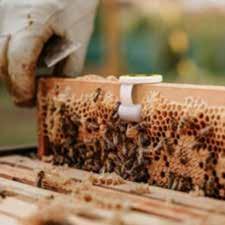
Bird management with Larry Bodtke and Catherine Lindell, Ph.D. (Season 2, Episode 54, July 2022)
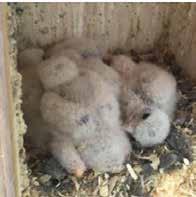
Host Kasey Cronquist is joined by Catherine Lindell, Ph.D., Associate Professor at the Centre for Integrative Biology where she also serves as Graduate Program Director.
Alongside her research team, she combines theoretical and applied approaches to the study of the behaviour and ecology of birds and the roles of birds in ecological functions and ecosystem services. They are both joined by Larry Bodtke, blueberry grower and partner at Cornerstone Ag to discuss the producer’s perspective on bird abatement and new approaches and technologies that can deter bird encroachment on blueberry fields.
Listen to this podcast here: ushbc.blueberry.org/podcast/bird-management-with-larry-bodtke-andcatherine-lindell-ph-d
Links
Visit the USHBC website ushbc.blueberry.org Subscribe to the weekly Blog “Behind the Blue” at ushbc.blueberry.org/subscribe Catch the latest Business of Blueberries podcast at ushbc.blueberry.org/podcast Thank you to WA Berry Industry Development Officer Helen Newman for compiling this article. 95
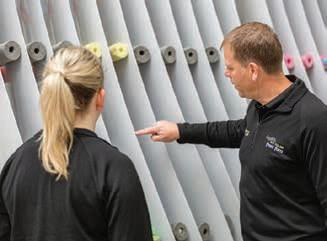
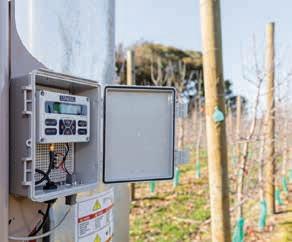
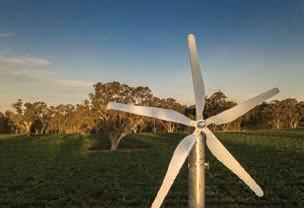
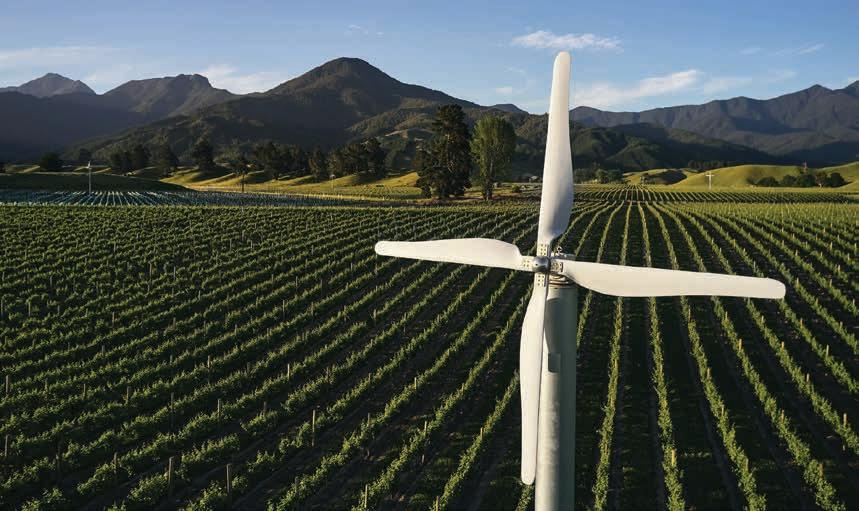
Ian M a so n Ca ll us n ow 18 0 0 7 9 7 6 29 or + 61 4 4 8 1 1 1 3 8 4 E i n f o@au ss ief ros t fan s .com.a u or v i s i t aussief ros t fans.co m au Take the guesswork out of fighting frost with our FrostBoss® advanced wind solution. • D e signe d b y an e x-A meric a’s Cup R e s earch Engine er • Blows warmer air acro s s the crop to s top f ro s t s e t tling • L ow nois e , no ’chop - chop’ s ound • E x c e llent c o verage • • Au to s tar t and s top to pre s e t temperature s • C ompatible wi th Fros tSmar t ® real-time moni toring • Ongoing suppor t The quiet fr ost fan. Stops fr ost damage.
Helping blueberry farmers save water
Dr Sophie Parks,
New South Wales Department of Primary Industries
How much water does a blueberry plant need?
New Clean Coastal Catchments research will create a model to answer this question and help blueberry growers optimise water use.
The research conducted in collaboration with plant physiologist, Dr Michael Forster from Griffith University, will look closely at how much water blueberry plants take up under different conditions.

Clean Coastal Catchments researcher, Dr Sophie Parks said the water use model will estimate the irrigation needs of blueberry crops as the plants grow and weather conditions change.
“Although blueberries in our experiments currently use 4 to 10 litres of water per day, exactly how much they need in varying production settings will depend on their size, age, growth stage and other seasonal or environmental conditions.”
“By measuring sap flow within the plant at different stages of growth and in different weather conditions, we will be able to estimate how much water a blueberry crop uses,” she said.
“Once validated, the blueberry water model will be used to develop an interactive irrigation calculator for growers.”
Dr Parks said the water use model will help save on water and enable an appropriate amount of fertiliser to be applied, a win for both growers and the environment alike.
“This new knowledge and calculation tool will help blueberry growers to irrigate their crops efficiently, and in turn help to reduce potential nutrient runoff which can improve water quality in coastal creeks and rivers.”
The Clean Coastal Catchments project works with growers to keep sediment and nutrients on farms and out of coastal waterways while supporting profitable and sustainable agriculture.
To find out more about the project visit www.marine.nsw.gov.au/projects/ clean-coastal-catchments-research
Acknowledgement
The Clean Coastal Catchments project is delivered by the NSW Department of Primary Industries funded through the NSW Marine Estate Management Strategy to improve water quality for our ocean, estuaries, and coastal wetlands.
BLUEBERRIES 97
DPI Technical Assistant, Leanne Davis measuring canopy area of Blueberry plants using a leaf area index meter. Photo credit: Sophie Parks
READY TO TAKE YOUR BLUEBERRY CULTIVATION TO THE NEXT LEVEL?
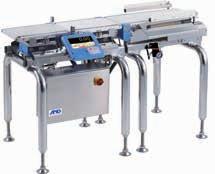
YOU CAN DEVELOP STRONG ROOT GROWTH AND STRUCTURAL STABILITY WITH OUR BLUEBERRY SUBSTRATES!
Global Axis Import Solutions is a family owned Australian business ‘making it happen’ since 1988. We offer a comprehensive range of high quality products and services, predominantly the distribution of growing substrates for the mushroom, berry and horticultural industries. Global Axis are the exclusive Kekkilä-BVB Distributors for Australia and New Zealand.



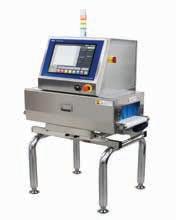
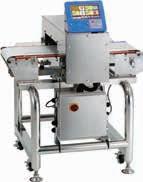
Talk to A&D today about how to reduce giveaway and improve product quality. Locally Stocked and Supported in Australia. Inspection Systems | Metal Detectors | Checkweighers | Data Capture PREVENT PRODUCT RECALL REDUCE PRODUCT GIVEAWAY or visit: www.andinspection.com.au 1800 241 434 Learn more by calling (08) 8277 1040 or email admin@globalaxis.com.au
Early Needs Recovery: Energy & Soil
John Hay, Recovery & Resilience Project Officer, Berries Australia
A key driver for the Early Needs Recovery Energy and Soil project is to increase profit from improvements in energy efficiency and to reinvest on farm. The Drone Mapping will highlight the potential risks of soil and plant health decline due to high-intensity rainfall events.
Profit from improved efficiency can be reinvested into projects that improve environmental outcomes or through education highlight opportunities to replace infrastructure if recovering from unexpected events. For people, improved and efficient management takes care of those performing the work, while risk management plans can highlight the risks to business with purposeful strategies designed to mitigate against potential future events and changes. To add further value to the Recovery & Resilience Project Berries Australia have been successful in targeting additional industry grant funding.
As part of the project there are Type one and Rapid Assessment energy audits available to growers as well as Light Detection and Ranging (LiDAR), and Full Spectrum drone flights with associated mapping. There are limited spots available exclusively for Blueberry growers in the Coffs Harbour region that complete the Energy and Run Off modules on the Hort360 platform.
The sites receiving the audits will also receive Switchable Real Time Energy Monitoring devices (RT). The RT devices will open further opportunities for those as part of the trial to upgrade infrastructure with reduced upfront costs through the NSW Climate and Energy Action programs Energy Certificate Scheme.
This program is currently open for any site wishing to pursue energy efficiency gains. RT devices are a great tool for instant access to data to manage energy consumption, track Carbon emissions, and guide the solar design process. Using the mobile app, you can also set budgets, or switch electrical devices on or off from a remote location.
To show what benefits an Energy Audit and implementation of efficient infrastructure can bring check out the article on PAGE 55 of the Autumn edition of this journal, which details the outcomes from two audits conducted on Strawberry farms by the Queensland Farmers Federation.

BLUEBERRIES 99
In addition to the audits LiDAR, RGB and Vegetative Index (VI) drone mapping will take place with 2D and 3D maps delivered to the grower. Also useful for business plans, plant health can be monitored, and soil erosion can be determined from the slope with targeted drainage plans to mitigate against current and future risk associated with a potential increase in rainfall intensity.
The ability to utilise the drone for spraying and targeted fertiliser applications based on the VI will be explored briefly as this can only occur under specific conditions.
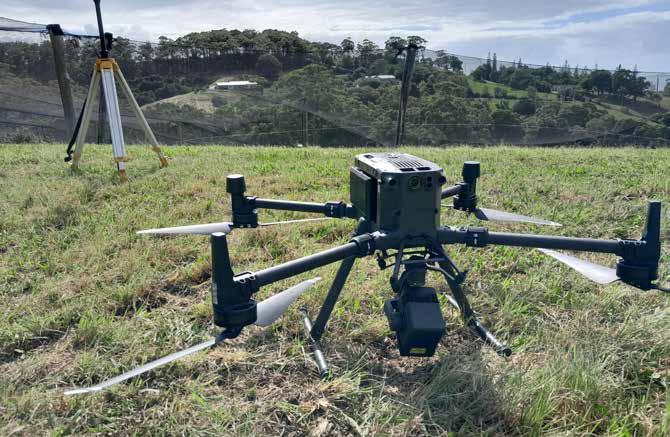
Educational material that integrates both Hort360 and Early Needs projects will be developed and disseminated to the wider industry member base. Hort360 is a tool that highlights current practices, potential risks and actions to take.
Acknowledgements
Once a module is completed a report is sent to you with some potential actions to take and links to information and resources. We can then drill down and provide further insights on where you could increase potential profit, improve resilience, or help plan for future events.

To register your interest for Hort360, and the chance to become one of the sites or to find out more contact
John Hay at recovery@berries.net.au
The Early Needs Recovery Program is part of the $150 million Primary Industry Support Package which is co-funded by the Australian and NSW Governments. For more information about the program, please visit www.lls.nsw.gov.au/what-we-do/ our-major-projects/early- needs-recovery- program
 Drone. Photo credit: John Hay
Drone. Photo credit: John Hay
100 BERRY AUSTRALIAN JOURNAL WINTER 2023 EDITION 15 100
Soil health in blueberries
Kevin Quinlan, Leader, Northern Horticulture, NSW Department of Primary Industries
What is soil health?
The term ‘soil health’ gets used a lot and there is always agreement that it is important, but the term soil health means different things to everyone, with there being lots of different opinions on what makes a soil healthy. At the core of soil health is the concept that all aspects of soil, that is, physical structure, chemical components and biological life are considered together. By managing structure, nutrients and biology in the soil, farmers can use soils within their capability so that the soils can be used productively without being degraded.
A healthy soil:
• Supplies nutrients, water and oxygen for healthy plant growth
• Allows water to infiltrate freely
• Resists erosion
• Stores water
• Readily exchanges gases with the atmosphere
• Retains nutrients
• Resists disease
• Contains a large and diverse population of soil biota
• Is free from constraints such as sodicity and salinity
• Has a range of pore spaces to house organisms, nutrients and water
To maintain and improve soil health, farmers need to manage their production system so that it doesn’t degrade the soil by;
• Controlling waterflow to prevent erosion
• maintaining soil structure
• maintaining or improving soil organic matter levels
• maintaining or improving nutrient levels and water holding capacity of the soil
• fostering beneficial soil biological activity
Controlling Waterflow
The significant rainfall events experienced in NSW over the past two years have highlighted the need to have in place ways of controlling waterflow. There are three general areas to focus upon for controlling waterflow –run-on, stable water courses (run-off) and within a block.
Run-on
To control run-on, the best strategy is to have ways of intercepting water before it runs into a block and directing it around the block. Often referred to as “head drains” the use of a grassed over bank is the most common way of doing this. The bank and the channel created on the upslope side of the bank then need to be directed around the block and discharged into a stable grassed watercourse (the run-off system). Other options are to use roadways as both a trafficable area and a drain, but care must be taken when doing this to ensure the roadway is stable and not subject to erosion.
There are many considerations when designing and constructing systems, such as ensuring the peak waterflow can be accommodated, they are trafficable and stable. Ensuring these drains are maintained is also a critical factor in their successful use.
Stable water courses (Run-off)
Natural drainage lines are a critical part of your management processes. Ensuring these are managed to maintain a high level of groundcover (>95%) is critical. Ensuring plantings do not run through natural drainage lines is important. Where scouring or soil movement is noticeable, work to address the cause such as loss of groundcover. For stability, ensuring where drainage lines are grassed, they are kept short by frequent mowing is advisable as this reduces the resistance to waterflow and avoids the grass being torn out in adverse rain events.
101 BLUEBERRIES 101
Within a block
Ensuring that water flow is managed within a block is critical. Often this is the most difficult area for managing waterflow as there is a need to balance production decisions and water management. Ensuring mounds are designed and constructed to shed water to the interrow and maintaining groundcover is a critical aspect. Careful management of the covered mound and interrow is critical to avoid scalping along the edge of the mound.
Maintaining soil structure
Good soil structure is important as it provides the basis of creating an environment that is conducive to root growth, which underpins healthy plants. Soil is composed of sand, silt, clay and organic matter. The tiny particles of sand and silt are bound by clay and organic matter into aggregates.
The arrangement of aggregates gives soil its structure. Good soil structure has adequate spaces (pores) between aggregates to allow water and air to enter the soil and drain easily, while holding enough moisture to maintain plant growth. Poor soil structure has few aggregates and few pores between soil particles.
There are a range of factors that impact upon soil structure, such as tilling, compaction, soil chemistry (e.g. sodicity) and the level of organic matter. Ensuring you do not till wet paddocks (e.g. when establishing an orchard), using light weight machinery and/ or not driving on wet soil to avoid compaction and undertaking soil chemical analysis to determine any constraints like sodicity are all important for ensuring good soil structure.
Soil sodicity is the accumulation of sodium salt relative to other types of salt cations, especially calcium.
Above all, ensuring the soil has high levels of organic matter will ensure the soil has good structure. A key way that organic matter does this is by feeding the soils biology (e.g. earthworms). Organic matter will not only lift soil structure, it will also increase the soils ability to hold nutrients (through increased cation exchange capacity).
To provide adequate organic matter you can either produce it within the orchard (e.g. cover crops) or bring it in (e.g. add compost to mounds). The cover crop species selected can also provide advantages such as increasing nitrogen levels (e.g. legumes like clover), help to control soil pathogens (e.g. Brassica species) and provide a habitat for beneficial insects. When establishing or replanting a block is the ideal time to incorporate organic matter into the plant mound.
Maintaining Soil Chemistry
Ensuring the soil chemistry is balanced is critical for good soil health. The availability of nutrients is related to the soil pH. The pH of a soil is considered a master variable – ensuring it is within an adequate range for not only crop production, but also beneficial microbial growth is critical.
As blueberry is an acid loving plant, a pH between 4.55.5 is considered optimum for production. It should be noted that this should be measured within the mound, as this is where the active rootzone of blueberries is found. Within the interrow a different pH can and may be favourable to exist. You may find you have a naturally higher pH in the interrow and this could be beneficial for cover crop growth, soil microbes and soil carbon accumulation.
If you were aiming to establish a legume based cover crop, knowing your interrow pH is critical because many legumes will not nodulate at lower pH and growth will be restricted. It would be advisable to consider your plant mound and your interrow as separate cropping areas.
Monitoring nutrient levels within your soil is critical to ensure you do not have excess or deficiency of an element required for plant growth. As pH will control the availability of elements, ensuring you monitor your soil levels is critical to ensure you are not creating a deficit or excess of a particular element.
If you are looking to grow specific cover crops, undertaking a soil test within the interrow would assist with ensuring there is sufficient available nutrients for the species you select. Monitoring will allow you to fine tune your application rates to meet plant requirements.
102 BERRY AUSTRALIAN JOURNAL WINTER 2023 EDITION 15 102
The availability of specific nutrients in soils changes with the pH. The thicker the yellow band, the more soluble the element is at that level of soil acidity or alkalinity.
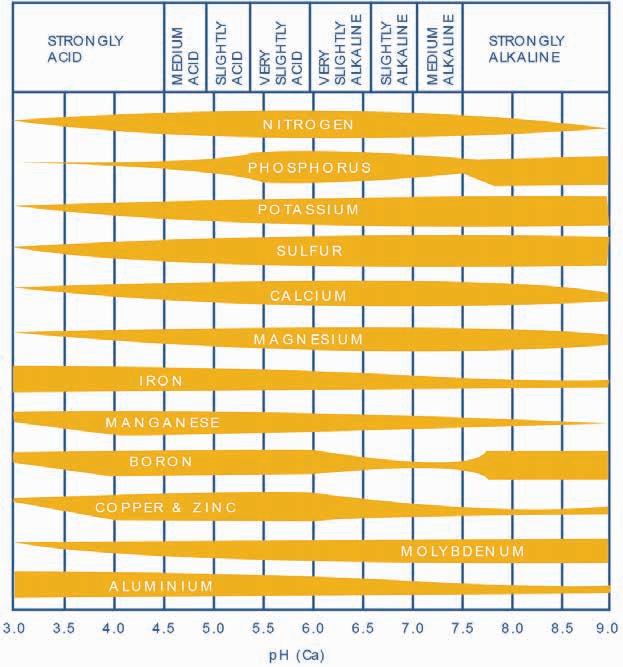
Water holding capacity of the soil
The water holding capacity of a soil is a measure of the soils ability to retain and provide water not only for plant growth but also microbes. From a production point of view, the higher a soils water holding capacity the less irrigation you will need.
Increasing your soils organic matter levels will increase its water holding capacity. With increased organic matter in dry times your soil will have more resilience and could reduce the frequency of irrigation you need. An increased water holding capacity will also improve nutrient cycling and availability.
103 103
Fostering beneficial soil biological activity
Soil biological activity is a critical aspect of soil health. The aim is to create a soil environment that promotes the growth and reproduction of good soil biology and in turn supresses the growth of bad (often disease causing) soil biology.
To sustain soil biology, you need to ensure the microbes within your soil have a home to live in and food to eat. To achieve this, make sure there is good soil structure and balanced soil chemistry.
Soil microbes require carbon, and this can be provided by organic matter. You can do this through the addition of material such as compost or mulch, or through the growth of interrow crops. A diverse interrow crop will provide the opportunity to sustain a diverse soil microbiology. Many plants produce and release root exudates that attract soil biology, which can perform functions like releasing nutrients from organic matter or bound to soil.
As a general rule, the amount of biomass a plant has above ground is equivalent to what it has below ground, increasing a cover crop’s biomass will provide more food to soil microbes which can then assist with crop production.
Northern Rivers Soil Health Card

The Northern Rivers Soil Health Card is a tool that was created by farmers for farmers to use to measure their soil health. It has 10 easy to use tests to check your soil health. These tests can be carried out to continually measure your soil health and see changes over time.
Summary
Having a healthy soil is the foundation for healthy crop production. Ensuring you have good soil structure and balanced soil chemistry is critical to sustaining strong soil biology. When all three are working together, your soil health will be high.
Controlling water flow to prevent erosion will ensure you keep your soil in place. Organic matter is a key component of soil and ensuring it remains healthy. It should be noted that when implementing management practices to maintain or improve soil health, one action can have multiple benefits to a farming system.
For instance, the planting and maintenance of a cover crop could improve soil structure, increase soil carbon, prevent erosion and increase biodiversity. It can be provided by additions or generated from within the interrow. Using cover crops to generate organic matter within the orchard can serve many purposes and offers growers the opportunity to produce organic matter cheaply.
More Information
Soil CRC – Soil health – why it matters https://soilcrc.com.au/soil-health-why-it-matters/ Agriculture Victoria – What is soil health? https://vro.agriculture.vic. gov.au/dpi/vro/vrosite.nsf/pages/soilhealth_what_is
Soil and Water Management Practices for Blueberry growers in Northern NSW - Northern Rivers Soil Health Card https://www.dpi.nsw.gov.au/__data/assets/pdf_file/0007/ 168703/northern-rivers-soil-health-card.pdf
Irrigation and moisture monitoring in blueberries https://www.dpi.nsw.gov.au/__data/assets/pdf_file/0016/ 303325/Irrigation-and-moisture-monitoring-in-blueberries.pdf
Forage Brassicas – quality crops for livestock production https://www.dpi.nsw.gov.au/__data/assets/pdf_file/0003/ 146730/forage-brassicas-quality-crops-for-livestock-production.pdf
Growth and physiological characteristics of four blueberry cultivars under different high soil pH treatments https://www.sciencedirect. com/science/article/pii/S0098847222000648
Effects of soil acidity https://www.agric.wa.gov.au/soil-acidity/ effects-soil-acidity?page= 0%2C2
Impact of soil acidity on crop yield and management in Central Western NSW https://grdc.com.au/resources-and-publications/ grdc-update-papers/tab-content/grdc-update-papers/2016/07/soilacidity-crop-yield-impacts-and-management-in-central-western-nsw Macadamia grower's guide: nutrition and soil health – the foundations https://www.dpi.nsw.gov.au/agriculture/horticulture/nuts/growingguides/macadamia-growers-guide-nutrition-and-soil-health-thefoundations
Rivers Soil Health Card
tool can be downloaded from bit.ly/Soil-Health-Card 104 BERRY AUSTRALIAN JOURNAL WINTER 2023 EDITION 15 104
North
This
Early Needs Recovery Program to address pest challenges in blueberry
Saleh Adnan, Research Horticulturist Entomology, New South Wales Department of Primary Industries
The blueberry industry on the NSW north coast has been adversely impacted by the flooding in February 2022 and the prolonged wet conditions in the northern New South Wales region experienced over the past two years. In response to these events, NSW Department of Primary Industries has been working to assist industry, with one of the key activities to undertake pest and disease surveillance in blueberry farms.
As a part of this program, the NSW DPI northern horticulture entomology team has visited a cross section of commercial blueberry farms across the north coast and maintained continuous correspondence with the respective farm managers to gain insights into the pest issues that impact blueberry production. The following is a snapshot of some of the key pests encountered and the subsequent work that has been, or is being, undertaken to develop improved management strategies for these pests.
Leafroller moths
Leafroller moths (light brown apple moth (LBAM, Epiphyas postvittana), mango flower webworm (Dudua aprobola), orange fruit borer (Isotenes miserana) remain a priority issue.
The feeding activity by the caterpillars of these moths impairs vegetative growth, impacts new flush (Figure 1) and flowering, and finally reduces fruit setting. Growers have experienced high pressures of leaf rolling moth complex recently and, in most cases, it was considered to be caused by LBAM.
From samples collected, it has been found that the damage in recent years has been predominately due to mango flower webworm and orange fruit borer. While growers have a reliable monitoring tool as well as management strategies for light brown apple moth, the understanding of other leaf roller moths and their economic impacts on blueberry remains rudimentary.
Consequently, growers are applying non-selective chemicals to control these moths which is leading to secondary pest pressures.
To better address this situation, preliminary evaluation of biological, cultural, and chemical control options is being undertaken.
As part of this work, we plan to assess the potential of commercially marketed egg parasitoids (Trichogramma spp) in managing these tortricid moths.
105 105 BLUEBERRIES



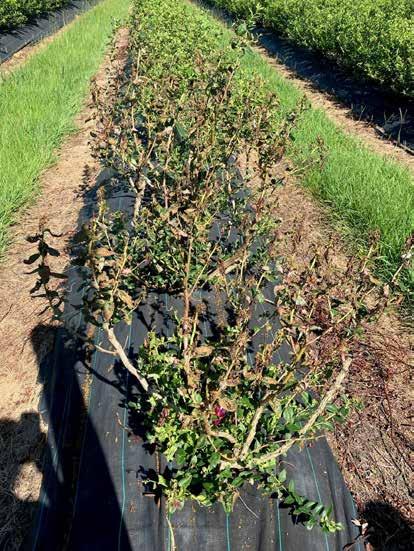 Figure 1. Rolled blueberry leaves (L) and leaf rolling caterpillars on blueberry flush (R)
Photo credit: Saleh Adnan
Figure 2. Damage to blueberry flowers (top) and young flush (bottom) caused by swarm of adults Monolepta australis
Figure 1. Rolled blueberry leaves (L) and leaf rolling caterpillars on blueberry flush (R)
Photo credit: Saleh Adnan
Figure 2. Damage to blueberry flowers (top) and young flush (bottom) caused by swarm of adults Monolepta australis
106 BERRY AUSTRALIAN JOURNAL WINTER 2023 EDITION 15 106
Photo credit: Saleh Adnan
Red Shouldered Leaf Beetle
The red shouldered leaf beetle, Monolepta australis is a native pest of fruit tree crops including avocado, macadamia, mango, longan, lychee, and recently found to establish in blueberry. Over the past spring and summer, increased levels of damage have been observed across many crops and while little is known about this pest, the increased activity is believed to have some relationship to the weather events experienced over the past 12-24 months.
Swarms of adults feed on the growth flushes of y oung plants resulting in wilting and dieback of shoots, and significant growth impairment of young plants (Figure 2). Invasion of flowering plants causes reduced fruit-set and epidermal scarring of fruit rendering it largely unmarketable.
Generally, growers rely on seasonal scouting followed by spot application of insecticides where adults are feeding. However, growers are wanting to reduce the use of broad-spectrum insecticides for the control of this pest as these products have impacts upon the farm ecosystems, especially on natural enemies and pollinators.
Building on this overall context, we are undertaking laboratory rearing of this beetle to better understand its life cycle, particularly the breeding cycle. This work will allow us to look at strategies to target the breeding cycle and ultimately reduce the population of adults that can swarm.

Elephant Weevil Borer
The elephant weevil borer orthorhinus cylindrirostris is another endemic Australian beetle that has caused significant economic losses to blueberry crops in recent years. In addition to direct yield losses, larval feeding renders plants susceptible to breakage during harvest and shortens a plant’s productive lifespan. There is also added cost of replacing the collapsed plants.
This pest appears sporadically and is often found in localised areas. Since the floods elephant weevil borer activity has been found in some locations but not all.
Growers are currently applying Bifenthrin and Indoxacarb (registered in Blueberries) for controlling elephant weevil borer, however these compounds are broad spectrum and impact significantly upon beneficials.
To assist in improving management of this pest and reduce the impact upon beneficials, laboratory assays have been carried out to assess the efficacy of biological and new generation chemistry insecticides as potential control options.
In the laboratory bioassay, the efficacy of both the microbial insecticides and the new generation insecticides was comparable to that of Bifenthrin, however field trials are needed to validate the laboratory results.
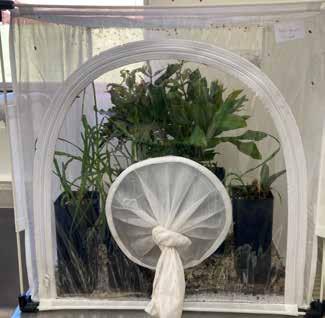 Figure 3. Laboratory rearing of Monolepta australis
Photo credit: Saleh Adnan
Figure 4. Laboratory assay to test the efficacy of biological and new generation insecticides against Elephant weevil borer
Figure 3. Laboratory rearing of Monolepta australis
Photo credit: Saleh Adnan
Figure 4. Laboratory assay to test the efficacy of biological and new generation insecticides against Elephant weevil borer
107 107
Photo credit: Saleh Adnan
Overall, the Early Needs Recovery Program supports the blueberry growers across NSW north coast regions to develop integrated pest management approaches to encounter ongoing as well as future pest challenges escalated by similar weather events (if any). The entomology team will continue to undertake surveillance for any changes or new issues that emerge.
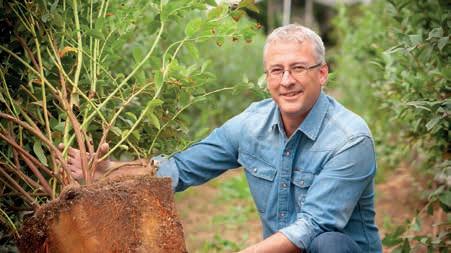
Acknowledgements
Should any growers spot something unusual or wish to discuss any findings from this report please contact Saleh Adnan at DPI :

saleh.adnan@dpi.nsw.gov.au
This work is part of the Early Needs Recovery Program (ENRP)under the $150 million Primary Industries Support Package (PISP) that is co funded 50-50 by the Australian and NSW governments under the Disaster Recovery Funding Arrangements (DRFA).
your blend for life
”Our customers have to deal with all kinds of challenges, so they need to know they can rely on a stable substrate. At Legro, we therefore invest in tomorrow’s raw materials. We are always looking for alternative ingredients that meet both the customers’ needs and our high quality requirements. Curious about what we can do for you? Contact me or one of my colleagues. Together we will find your blend for life.”
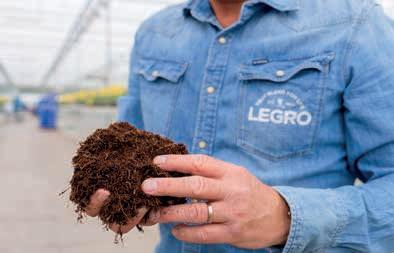 Phil Badgery
Phil Badgery
Sales Manager Australia & New Zealand

+61 (0) 3 95555267
info.aus@legrogroup.com
www.legrogroup.com


ifarmwell is a practical online tool kit to help Australian farmers manage life’s challenges effectively and get the most out of every day
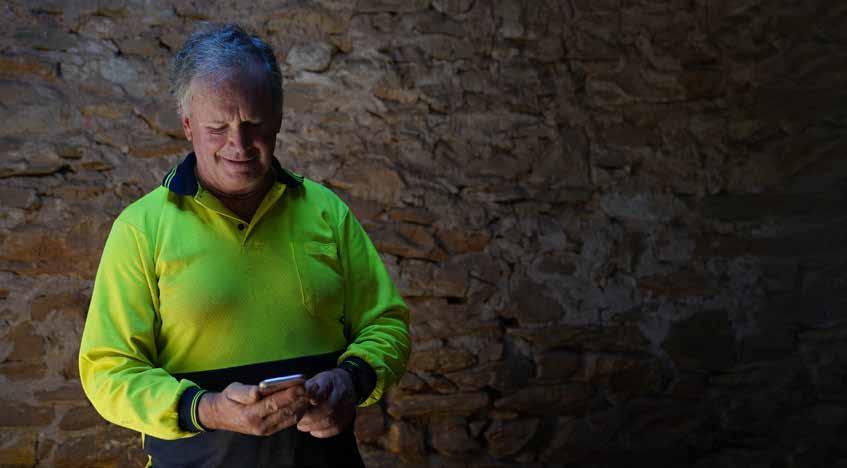
MODULE 1: Taking stock of your current wellbeing and some practical strategies to get you started
MODULE 2: Thoughts are like bullies - how to spend less time ‘in your head’
MODULE 3: Doing what matters - how to get the most out of a busy life
MODULE 4: Training your ‘attention muscle’ and focusing on the ‘here and now’ - a more pleasant, less exhausting place to be
MODULE 5: Putting it all together and moving forward
Created by farmers, for farmers
Accessible from your computer, tablet or smart phone
Relevant Confidential Free
Sign up to the free internet and text message-based program at ifarmwell.com.au today
YOUR BERRIES AUSTRALIA TEAM
EXECUTIVE DIRECTOR
Rachel Mackenzie 0408 796 199 rachelmackenzie@berries.net.au
PROJECT MANAGEMENT
Jen Rowling 0448 322 389 | jenrowling@berries.net.au
*Please contact Jen for any Qld related issues
PROJECTS EXPORT
Jenny Van de Meeberg 0410 536 269 | export@berries.net.au
COMMUNICATIONS
Jane Richter 0431 700 258 | berrycomms@berries.net.au
RECOVERY & RESILIENCE
John Hay 0488 147 800 | recovery@berries.net.au
MEMBERSHIP, ADVERTISING & ADMINISTRATION
Wendy Morris 0491 751 123 | admin@berries.net.au
NEW SOUTH WALES
Gaius Leong 0484 055 748 gaius.leong@dpi.nsw.gov.au
VICTORIA & SOUTH AUSTRALIA
Angela Atkinson 0408 416 538 ido@vicstrawberry.com.au
TASMANIA
Mark Salter 0400 100 593 berryido@fruitgrowerstas.org.au
WESTERN AUSTRALIA
Helen Newman 0428 335 724 helen.newman@dpird.wa.gov.au
Aileen Reid 0467 783 981 aileenfr@bigpond.net.au
www.berries.net.au






 Rachel Mackenzie | 0408 796 199 | rachelmackenzie@berries.net.au
Rachel Mackenzie | 0408 796 199 | rachelmackenzie@berries.net.au











 Helen Newman & Aileen Reid, Industry Development Team, Agricultural Produce Commission
Helen Newman & Aileen Reid, Industry Development Team, Agricultural Produce Commission

 Figure 2. Second year strawberries with brown scarring on the outer casing of fruits caused by chilli thrip.
Photo credit: Helen Newman
Figure 3. Wrinkled, bubbly leaves with distinctive brown scarring along the leaf veins caused by chilli thrip.
Figure 2. Second year strawberries with brown scarring on the outer casing of fruits caused by chilli thrip.
Photo credit: Helen Newman
Figure 3. Wrinkled, bubbly leaves with distinctive brown scarring along the leaf veins caused by chilli thrip.
 Figure 4: Chilli thrip on blackberry leaves showing leaf distortion and bronzing.
Photo credit: Helen Newman
Figure 4: Chilli thrip on blackberry leaves showing leaf distortion and bronzing.
Photo credit: Helen Newman




































 Photo credit: Nathan Cowley, pexels.com
Photo credit: Nathan Cowley, pexels.com











 Figure 2. The benchmarking data for the ‘Average Producer’ over the last 3 years.
Figure 2. The benchmarking data for the ‘Average Producer’ over the last 3 years.
















 Figure 1. Video capture units placed over strawberry plants. Photo credit: Monash University
Figure 1. Video capture units placed over strawberry plants. Photo credit: Monash University





















































 Jen Rowling, Project Manager, Berries Australia
Jen Rowling, Project Manager, Berries Australia





 The EZvent tunnels recently installed with mechanised venting with field scale simplicity.
Photo credit: Hillwood Berries
The EZvent tunnels recently installed with mechanised venting with field scale simplicity.
Photo credit: Hillwood Berries








 Figure 2. Subtropical variety ‘Susie-ASBP’
Photo credit: Katie O’Connor
Figure 3. Fruit of specialty pink variety ‘SB17-230-ASBP’
Photo credit: Phill Jackson
Figure 2. Subtropical variety ‘Susie-ASBP’
Photo credit: Katie O’Connor
Figure 3. Fruit of specialty pink variety ‘SB17-230-ASBP’
Photo credit: Phill Jackson

 Figure 4. Temperate genetic gain in average fruit size in advanced-stage trials at Wandin Research Centre
Figure 4. Temperate genetic gain in average fruit size in advanced-stage trials at Wandin Research Centre

 Figure 6. Subtropical genetic gain in average fruit weight in advanced-stage trials at Maroochy Research Facility
Figure 6. Subtropical genetic gain in average fruit weight in advanced-stage trials at Maroochy Research Facility






 Mark Salter, Berry Industry Development Officer, Fruit Growers Tasmania
Mark Salter, Berry Industry Development Officer, Fruit Growers Tasmania

















 Figure 1. Strawberry fruit heavily infected with Botrytis. The fruit on the right has Botrytis that is sporulating. These spores can now spread and infect many more fruit and flowers. Photo credit: Scott Mattner
The strawberry team at a recent Council Sustainable Crop Protection Hub Meeting. (L to R) Dr Donovan Garcia Ceron, Dr Scott Mattner, Lorena Rodriguez Coy, Apollo Gomez, and Assoc. Prof. Tony Gendall.
Figure 1. Strawberry fruit heavily infected with Botrytis. The fruit on the right has Botrytis that is sporulating. These spores can now spread and infect many more fruit and flowers. Photo credit: Scott Mattner
The strawberry team at a recent Council Sustainable Crop Protection Hub Meeting. (L to R) Dr Donovan Garcia Ceron, Dr Scott Mattner, Lorena Rodriguez Coy, Apollo Gomez, and Assoc. Prof. Tony Gendall.


 Figure 3. Sterile Strawberry plants grown in tissue culture. Photo credit: Lorena Rodriguez Coy
Figure 3. Sterile Strawberry plants grown in tissue culture. Photo credit: Lorena Rodriguez Coy



 Christopher Menzel, Principal Horticulturist, Department of Agriculture and Fisheries
Christopher Menzel, Principal Horticulturist, Department of Agriculture and Fisheries



 Also named Organic Farmer of the Year in 2022, Brendon Hoyle (C) from Ashbern Farms accepts his award for Early Adopter of Innovation presented by Jason McNeil (R) from award sponsor Opal. Photo credit: QSGA
Adrian Schultz (L) President of QSGA with Mandy Schultz (C) from Luvaberry being presented with the Industry Influencer award by Sorita McGrane (R) from award sponsor Moreton Bay Regional Council.
Photo credit: QSGA
Also named Organic Farmer of the Year in 2022, Brendon Hoyle (C) from Ashbern Farms accepts his award for Early Adopter of Innovation presented by Jason McNeil (R) from award sponsor Opal. Photo credit: QSGA
Adrian Schultz (L) President of QSGA with Mandy Schultz (C) from Luvaberry being presented with the Industry Influencer award by Sorita McGrane (R) from award sponsor Moreton Bay Regional Council.
Photo credit: QSGA

 The event was organised by Amanda Roy (R) from QSGA with support from Jane Richter (L).
Photo credit: QSGA
Winner of the Business Diversity award sponsored by Rivulis, Kylie Fairweather (C) pictured with Jane Stothart (L) and Dave Fairweather (R) from Stothart Family Farms.
The event was organised by Amanda Roy (R) from QSGA with support from Jane Richter (L).
Photo credit: QSGA
Winner of the Business Diversity award sponsored by Rivulis, Kylie Fairweather (C) pictured with Jane Stothart (L) and Dave Fairweather (R) from Stothart Family Farms.

 Award winner for Employee Excellence Roger Broadley with his wife at the QSGA Awards Dinner. The award was sponsored by Nufarm. Photo credit: QSGA
Award winner for Employee Excellence Roger Broadley with his wife at the QSGA Awards Dinner. The award was sponsored by Nufarm. Photo credit: QSGA

























 Drone. Photo credit: John Hay
Drone. Photo credit: John Hay





 Figure 1. Rolled blueberry leaves (L) and leaf rolling caterpillars on blueberry flush (R)
Photo credit: Saleh Adnan
Figure 2. Damage to blueberry flowers (top) and young flush (bottom) caused by swarm of adults Monolepta australis
Figure 1. Rolled blueberry leaves (L) and leaf rolling caterpillars on blueberry flush (R)
Photo credit: Saleh Adnan
Figure 2. Damage to blueberry flowers (top) and young flush (bottom) caused by swarm of adults Monolepta australis

 Figure 3. Laboratory rearing of Monolepta australis
Photo credit: Saleh Adnan
Figure 4. Laboratory assay to test the efficacy of biological and new generation insecticides against Elephant weevil borer
Figure 3. Laboratory rearing of Monolepta australis
Photo credit: Saleh Adnan
Figure 4. Laboratory assay to test the efficacy of biological and new generation insecticides against Elephant weevil borer

 Phil Badgery
Phil Badgery
